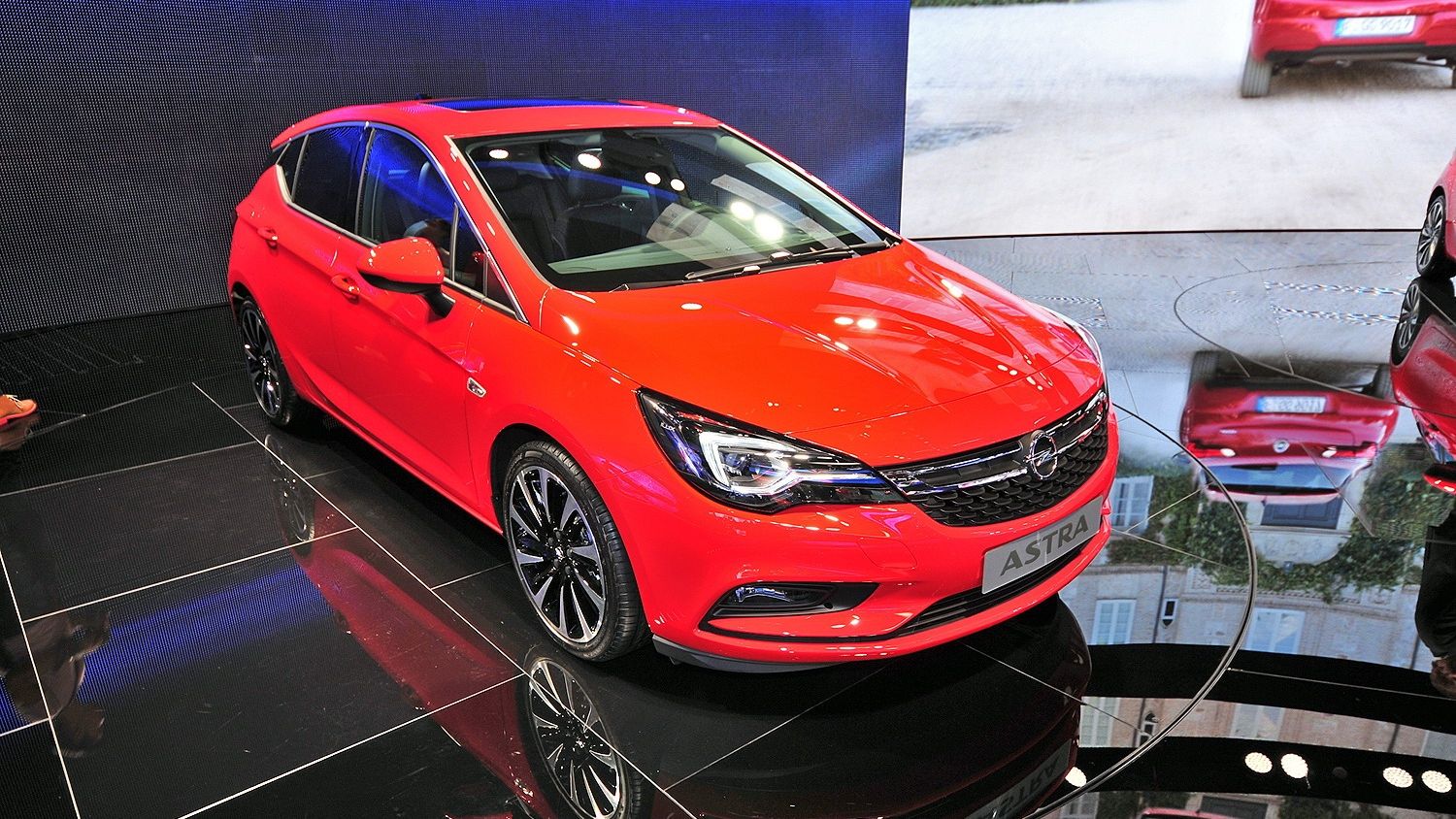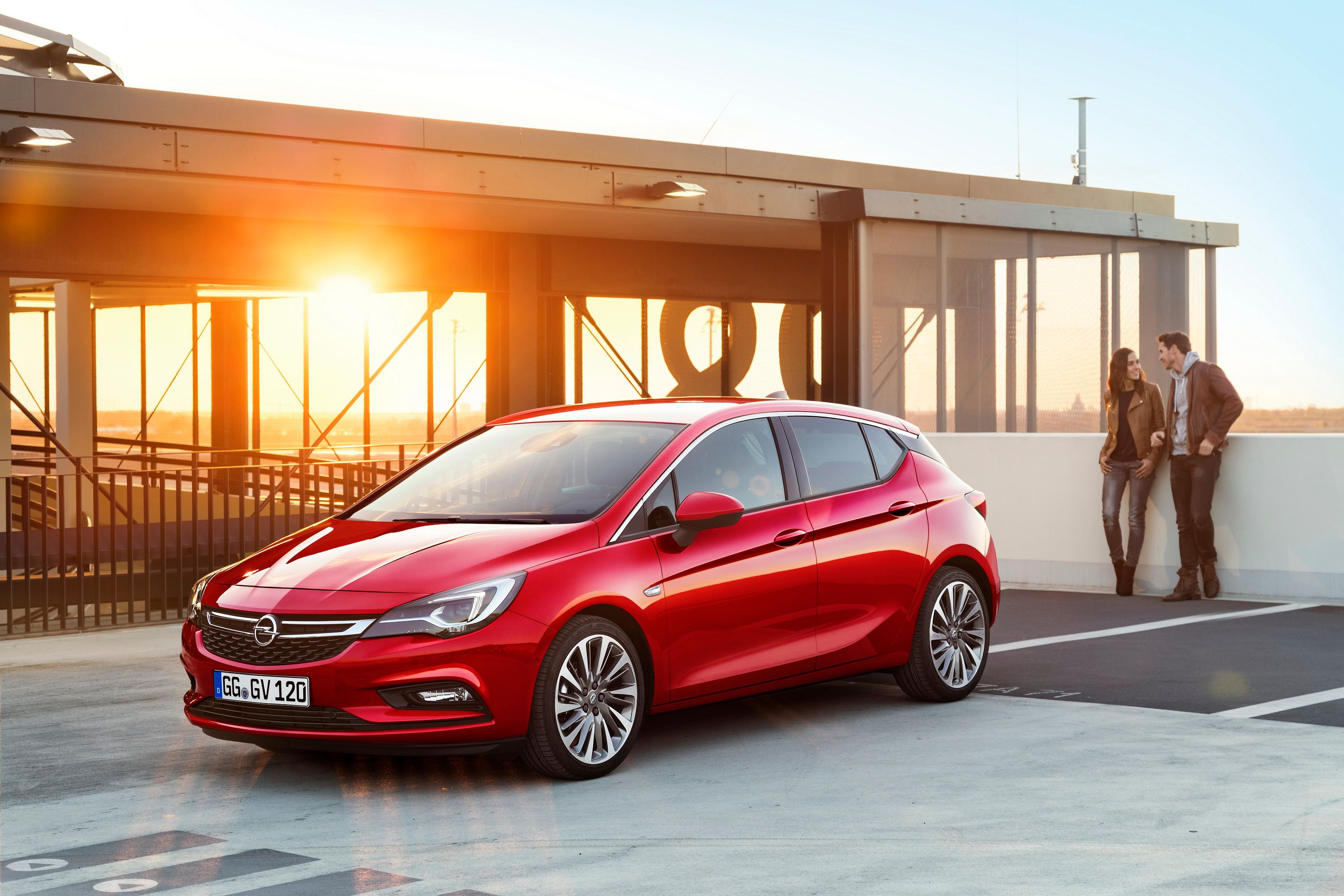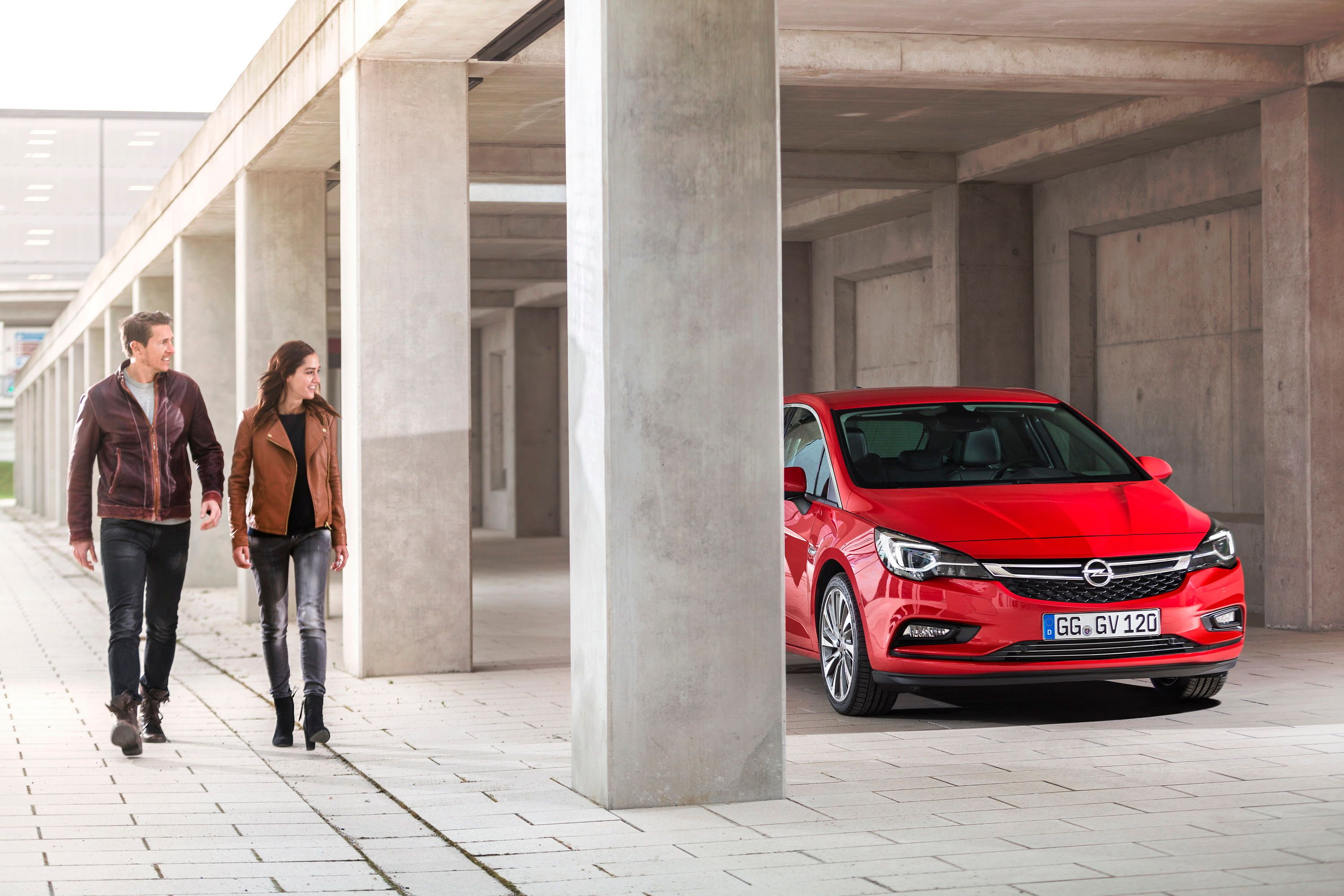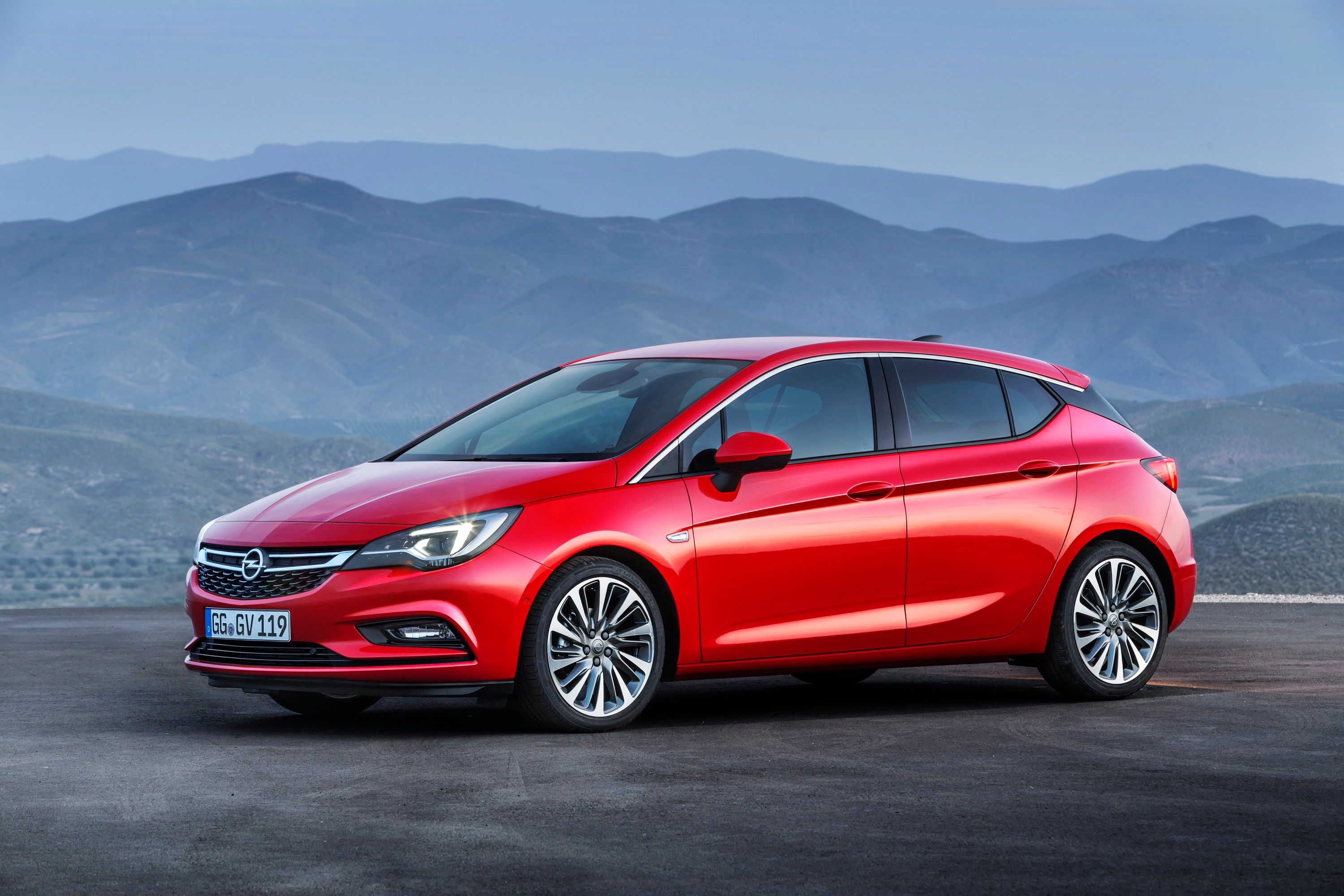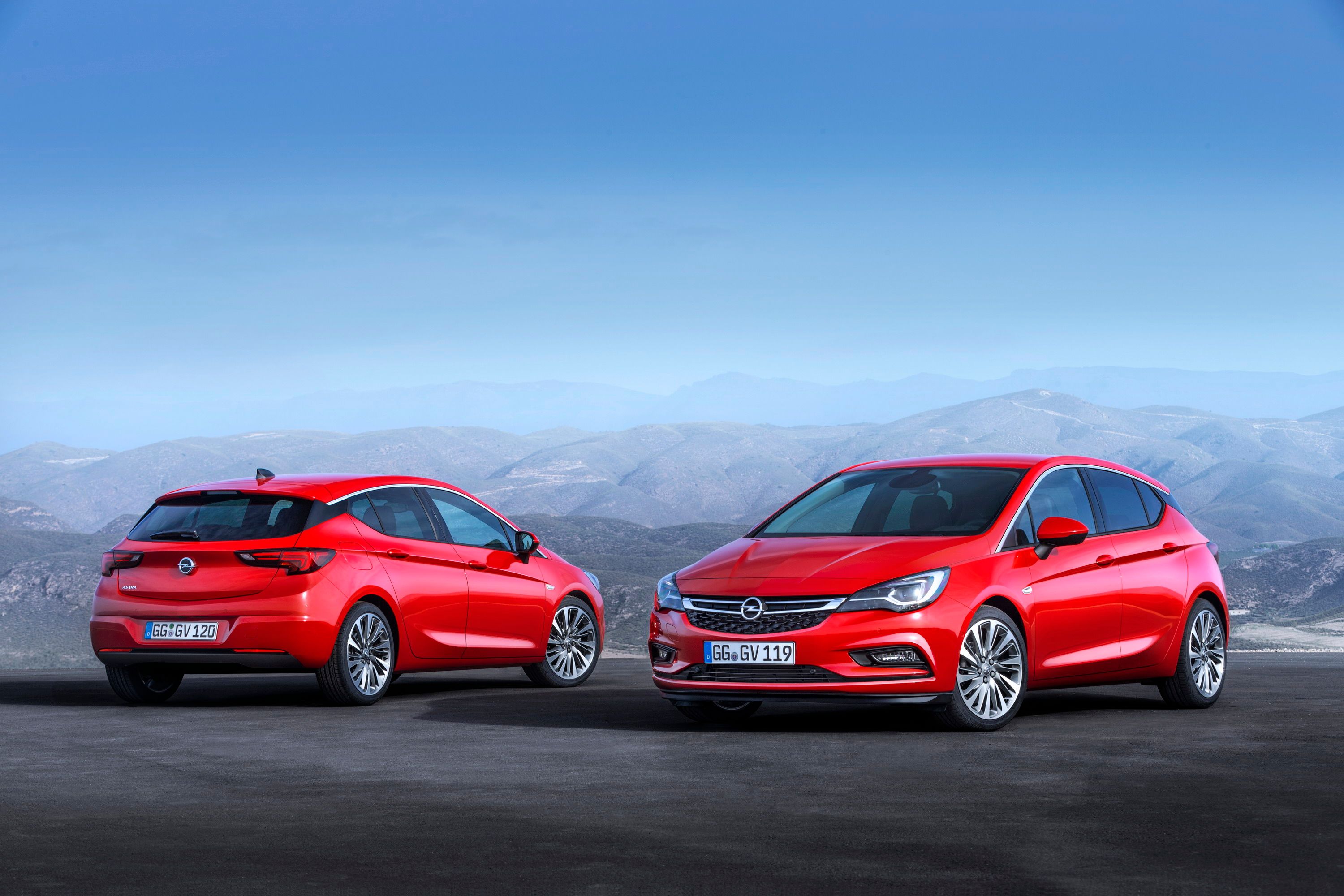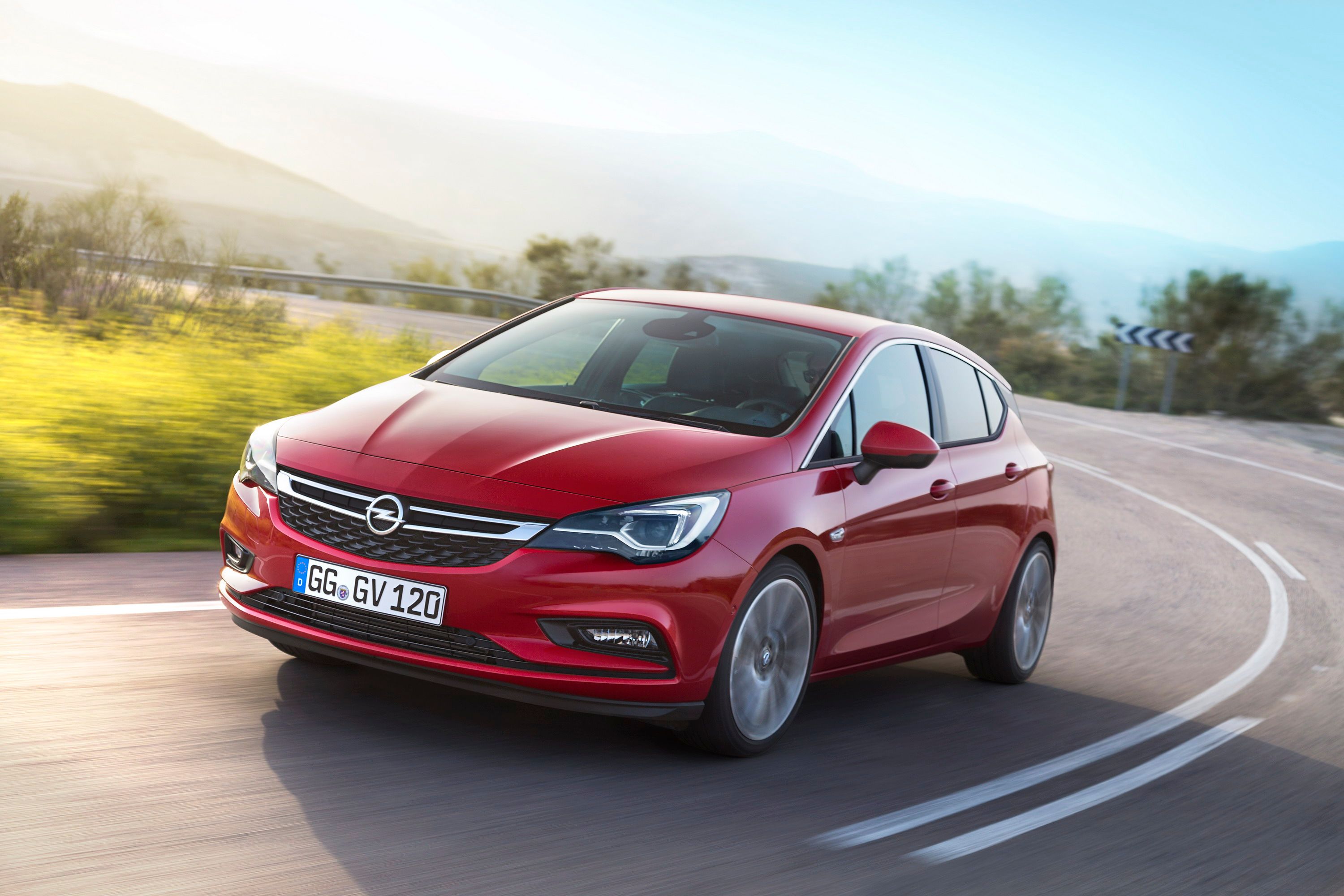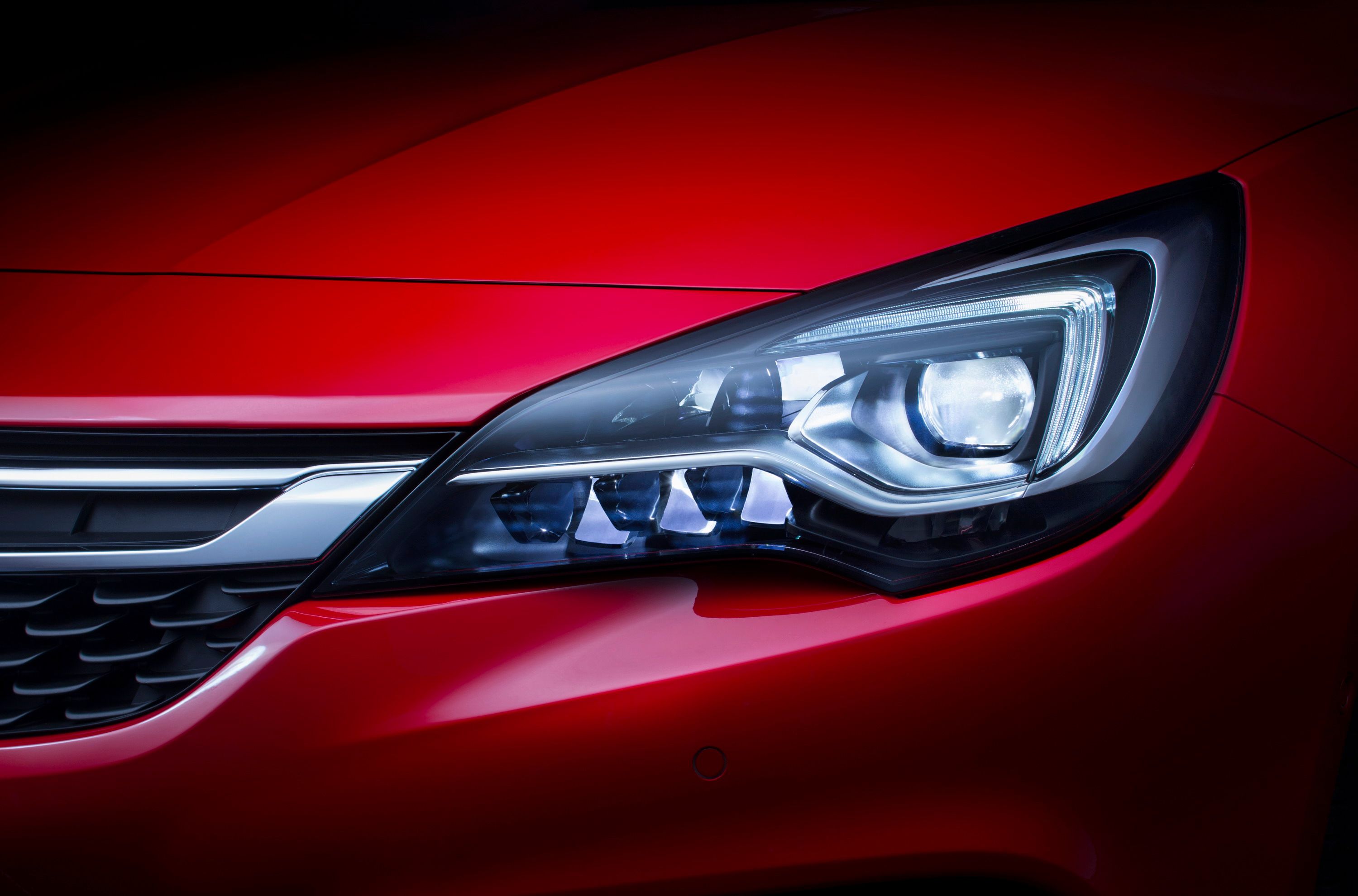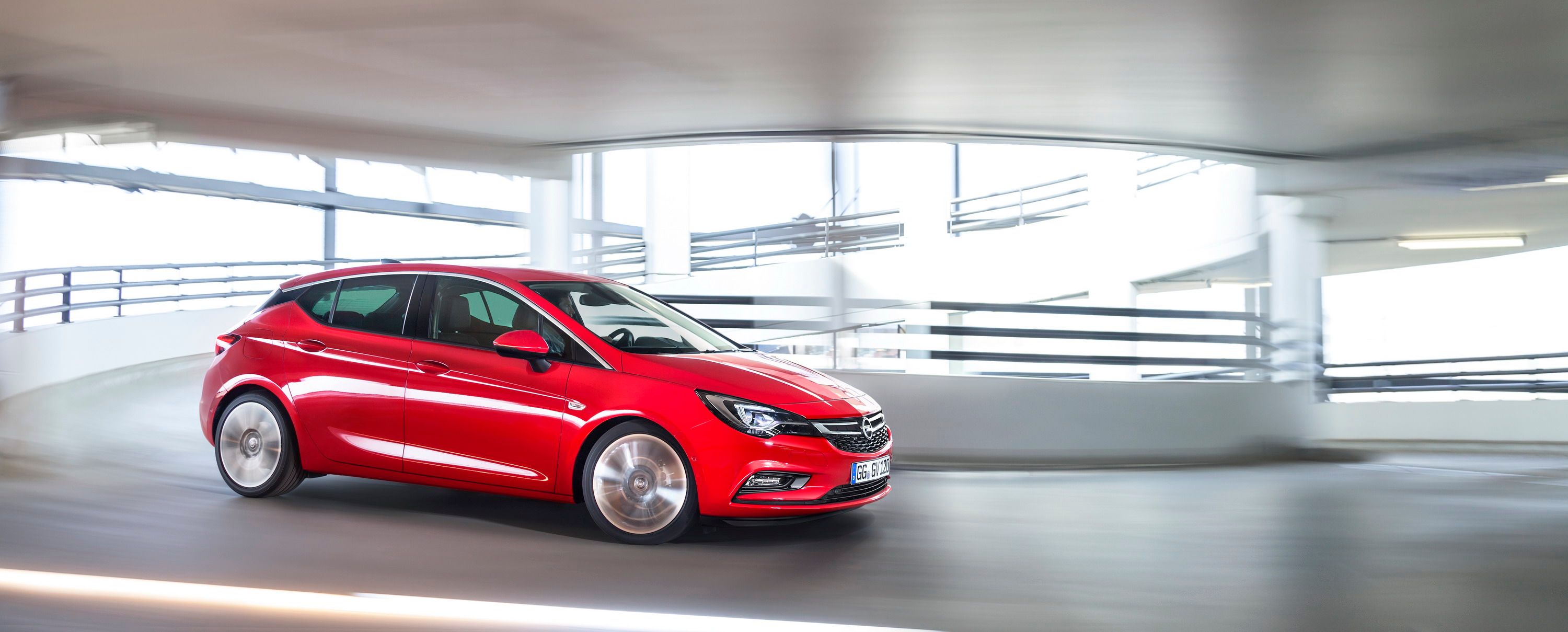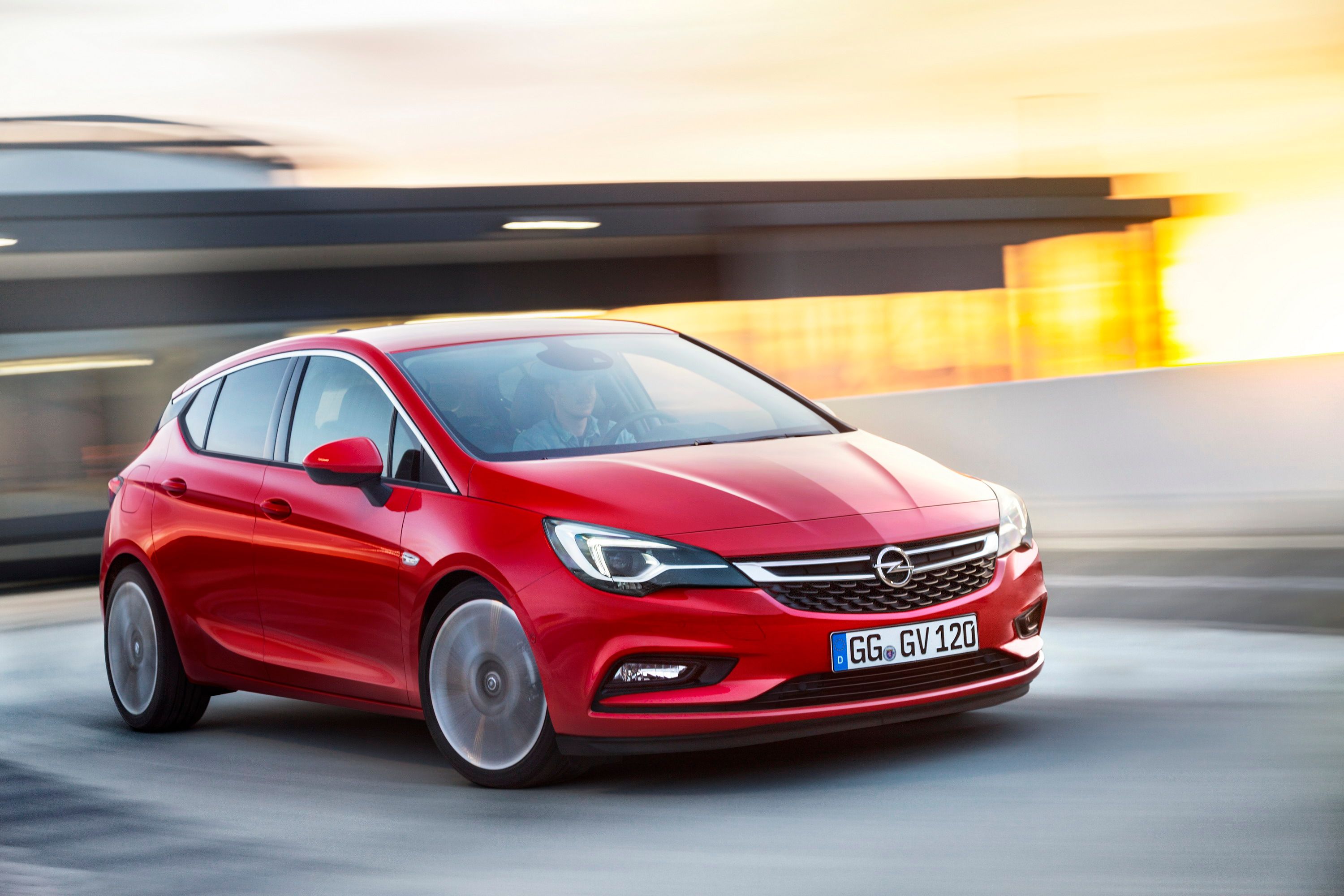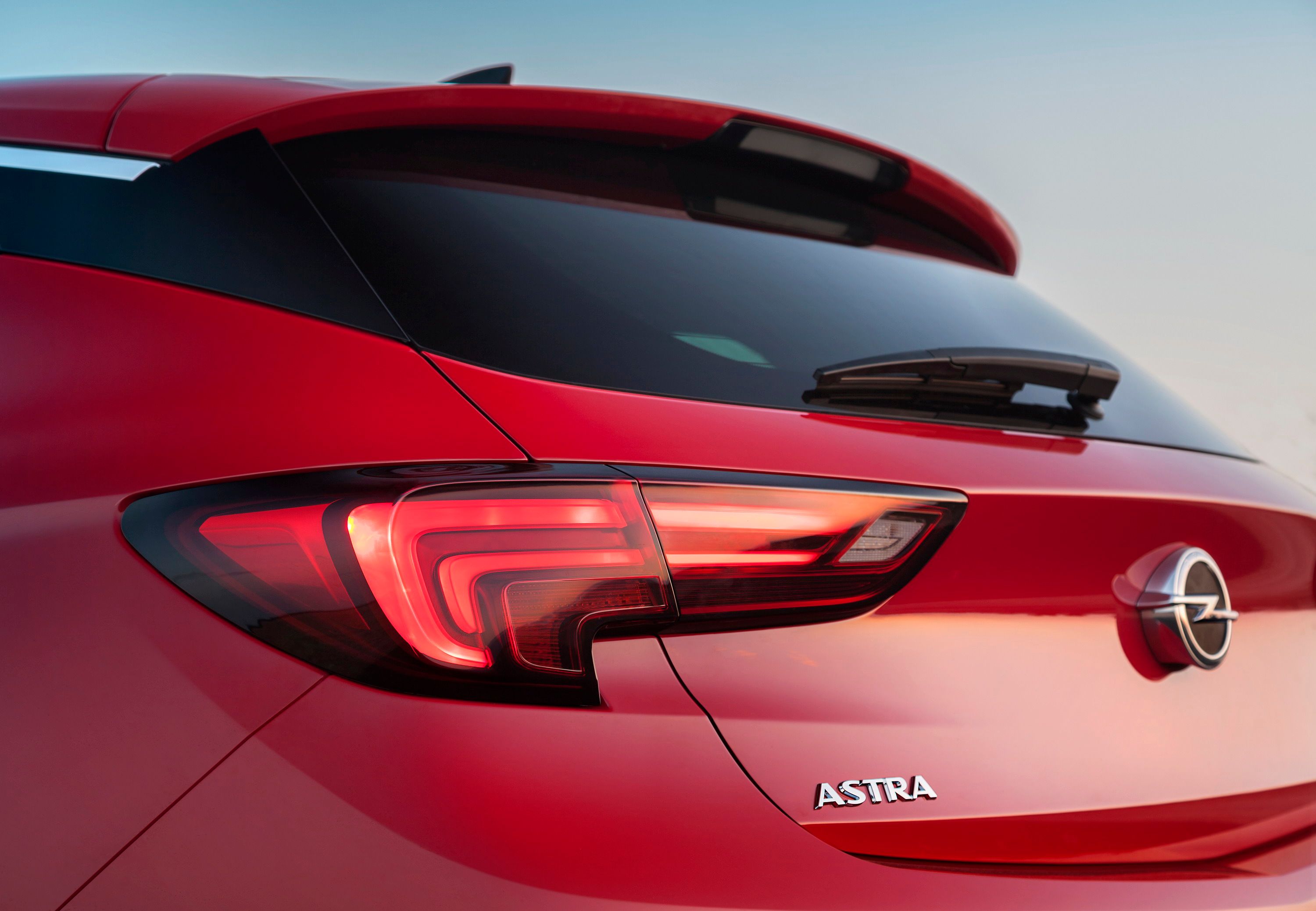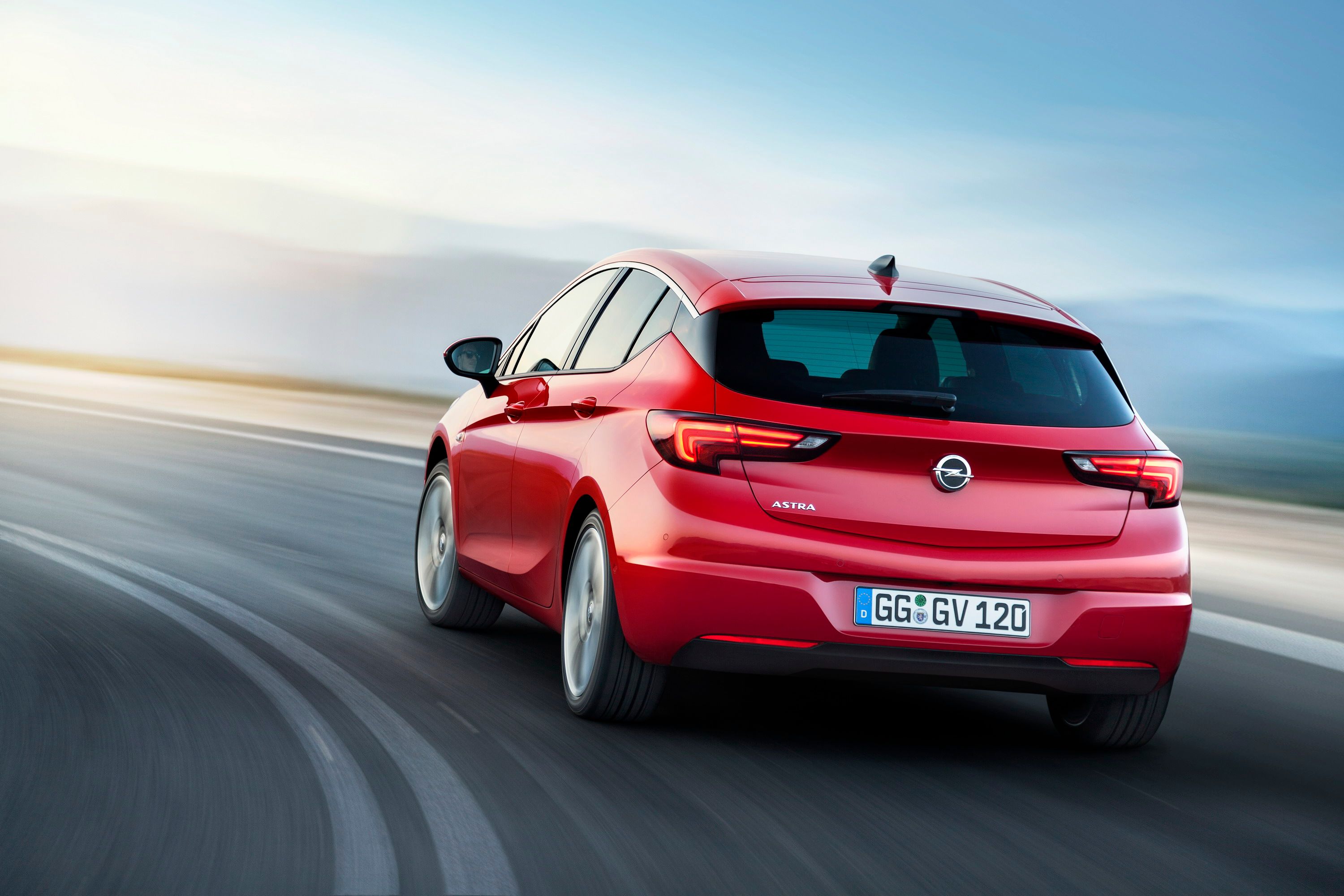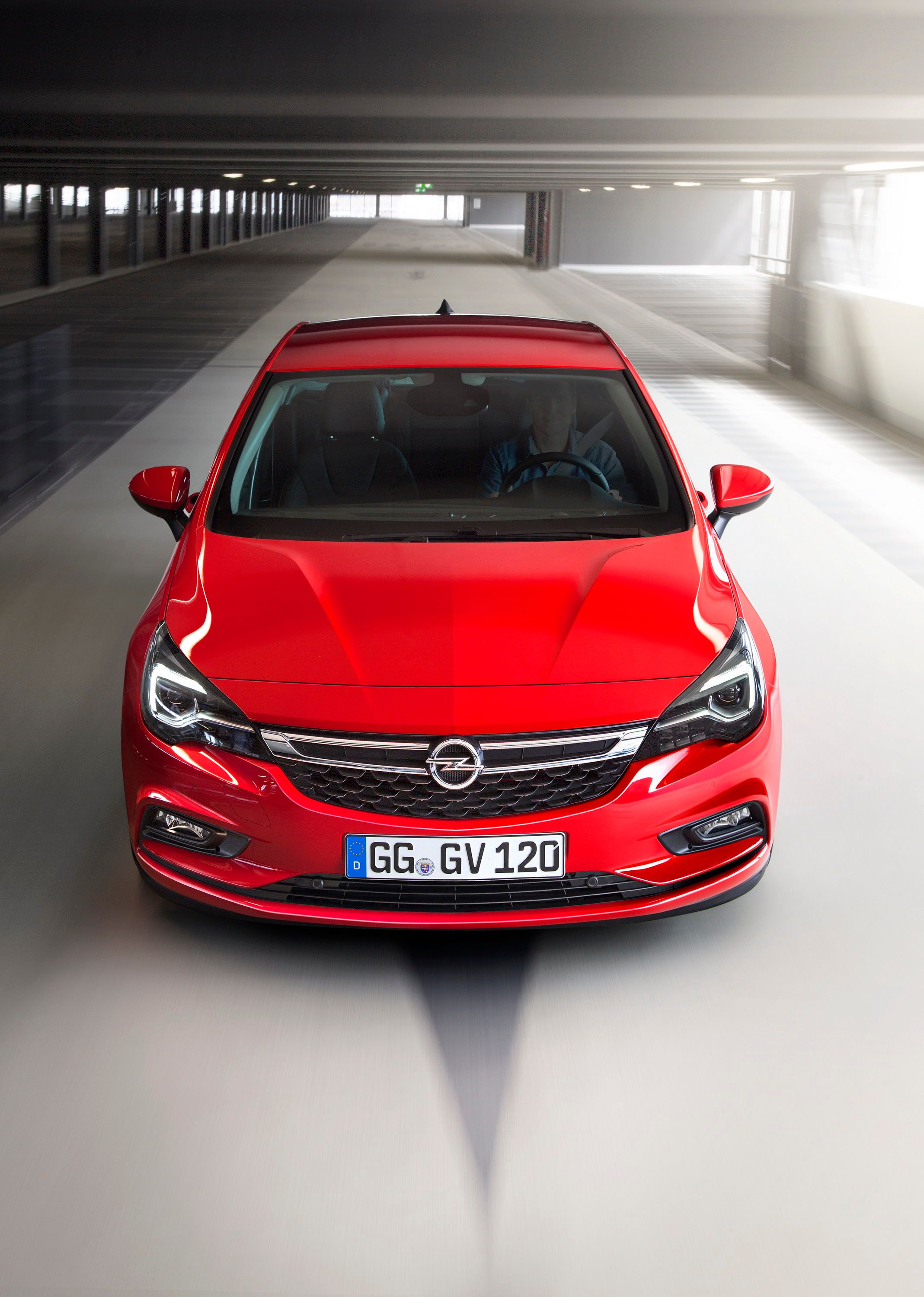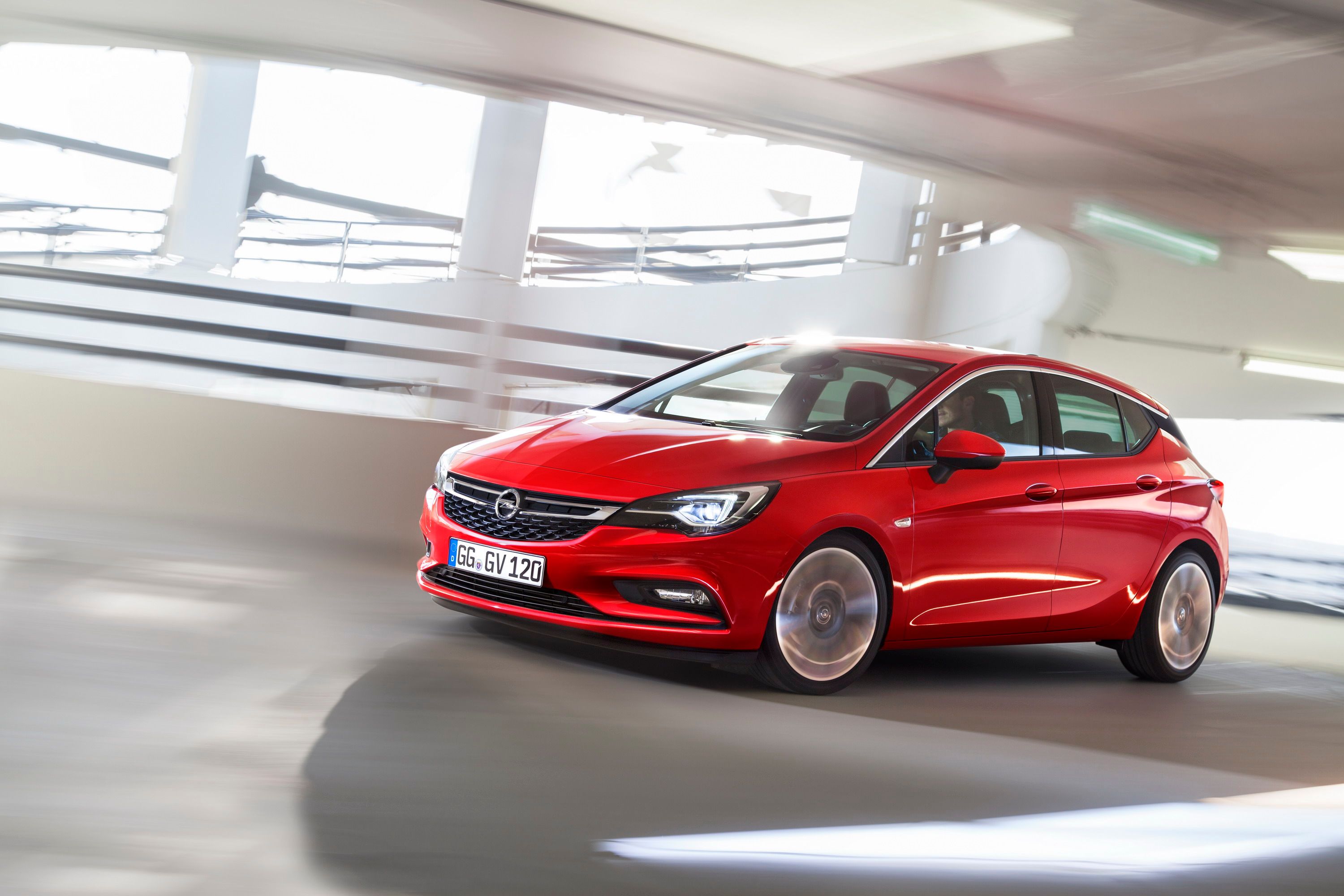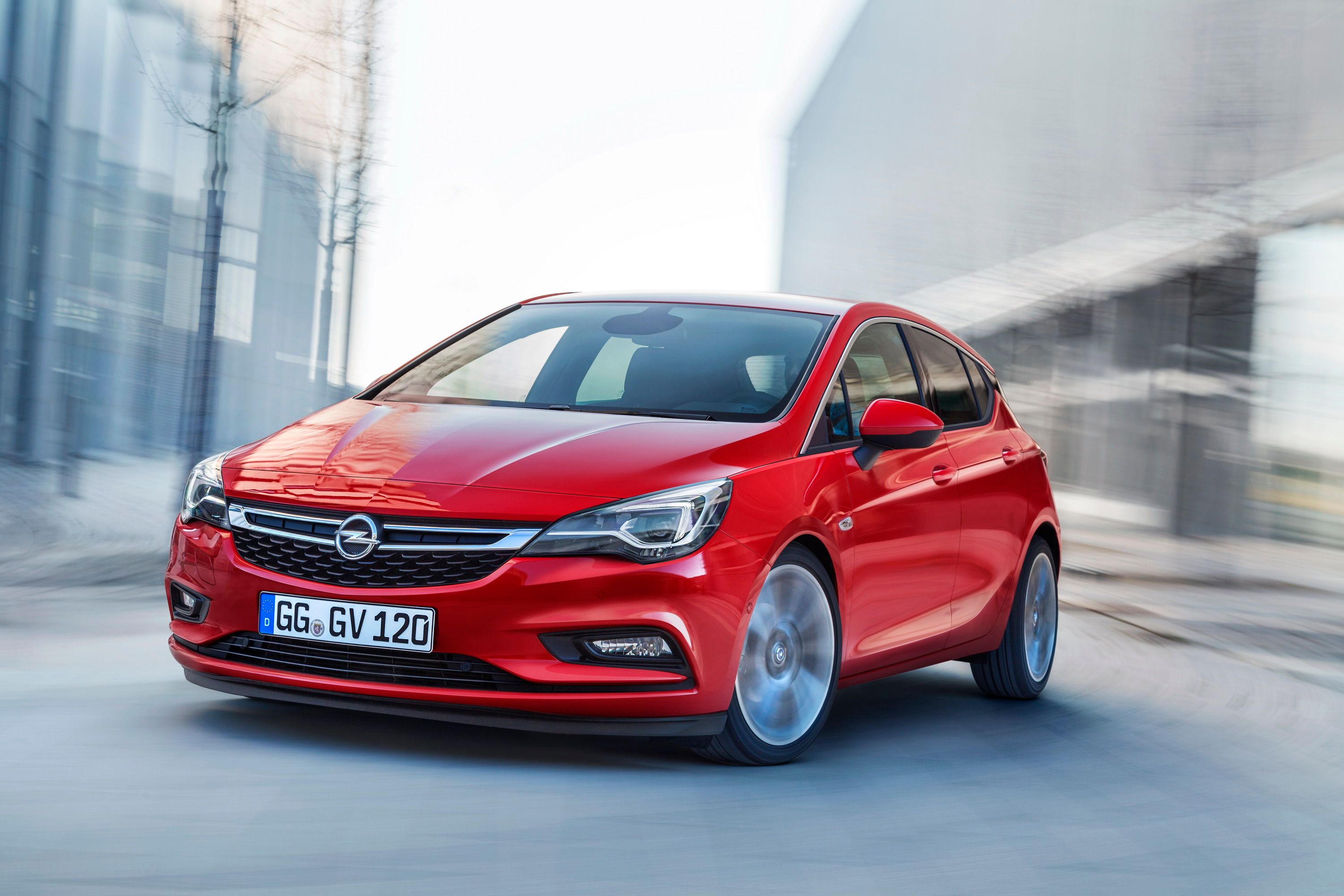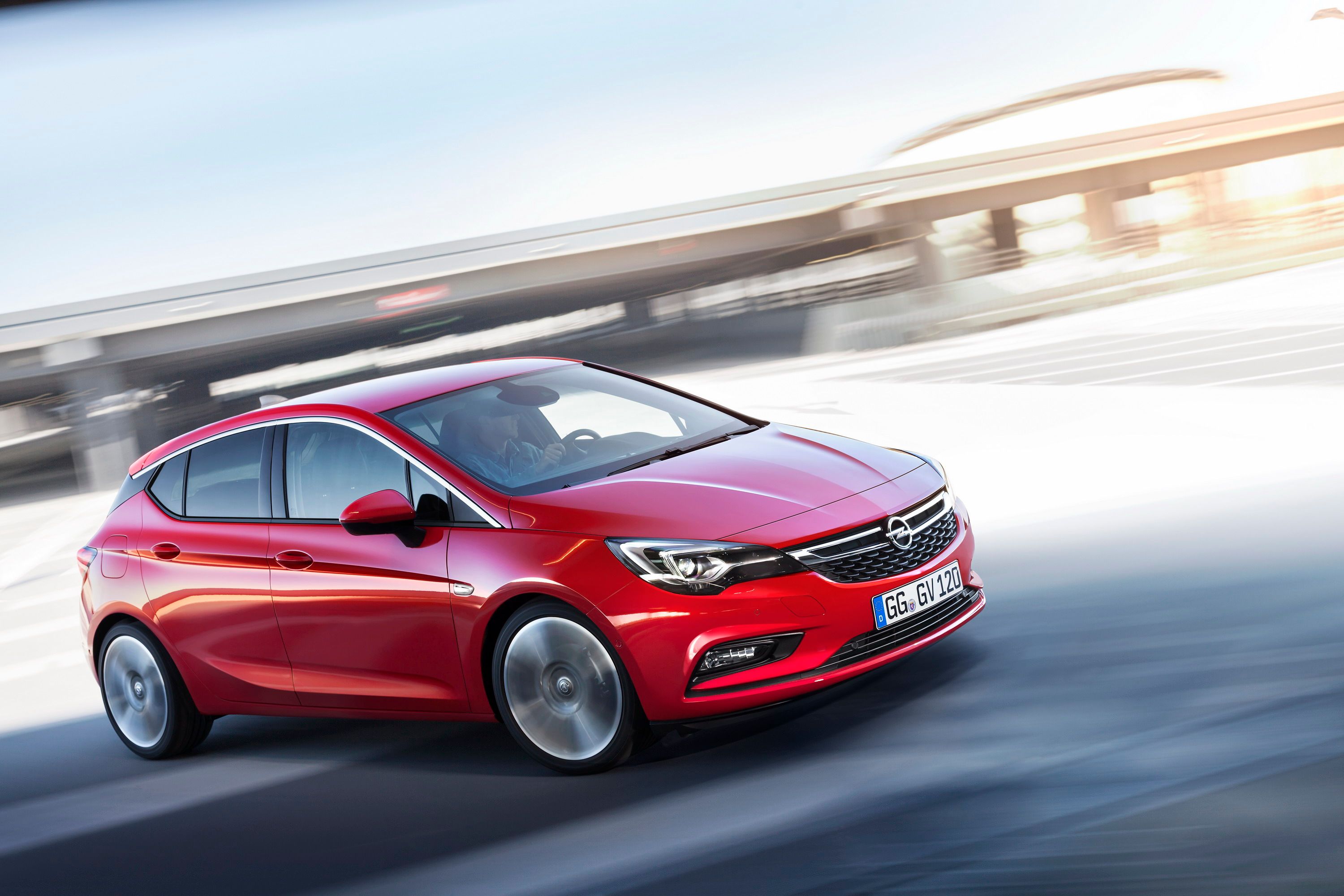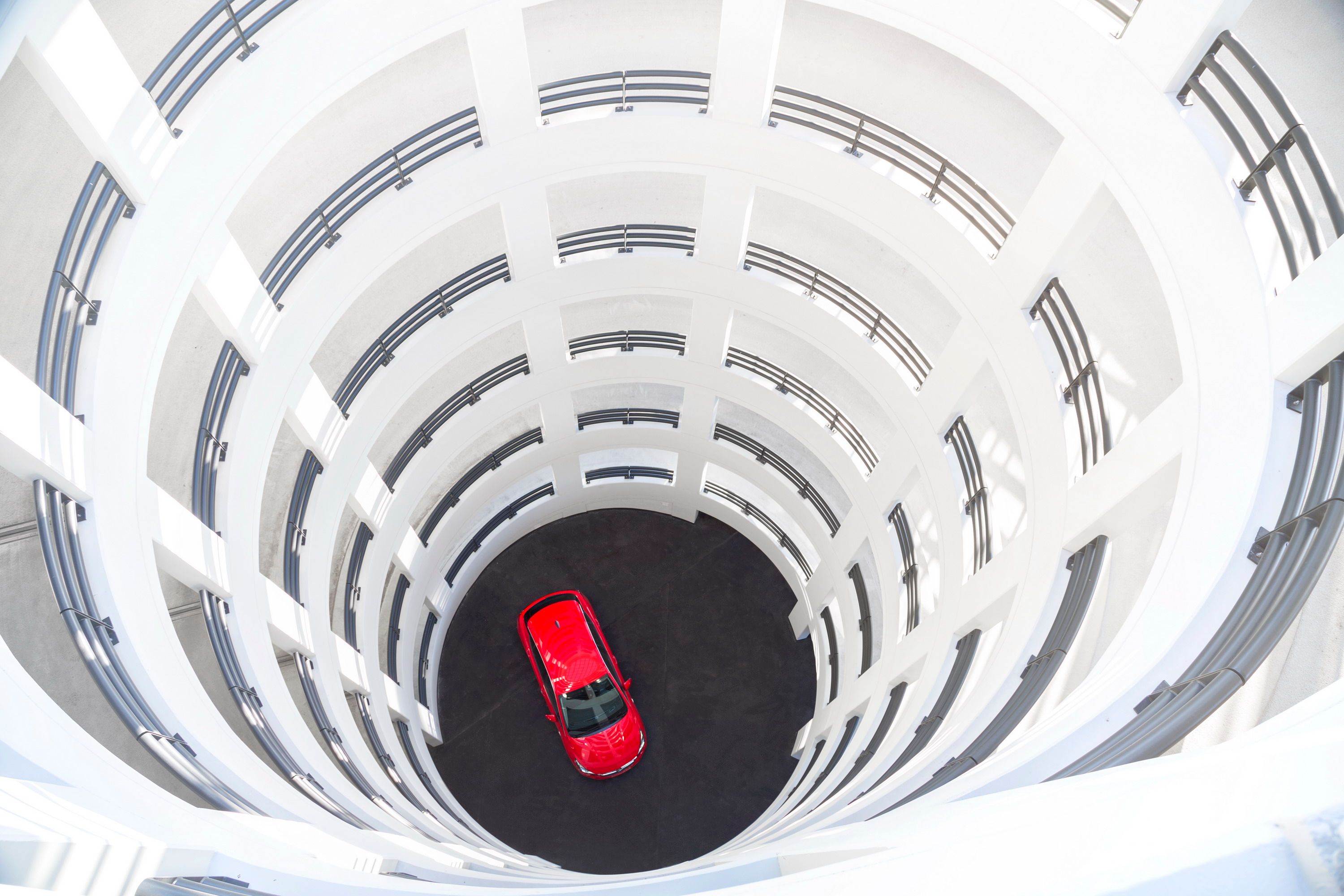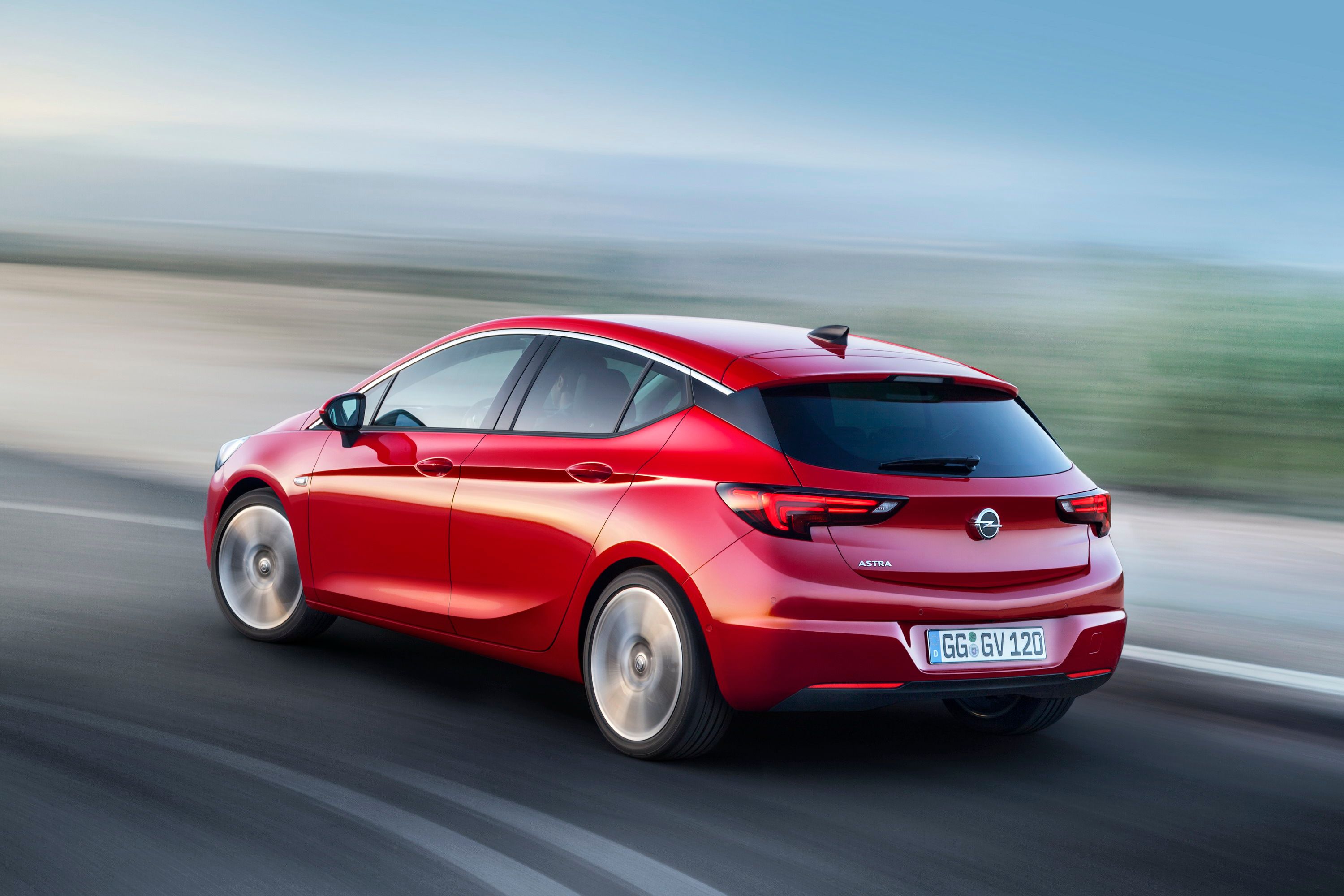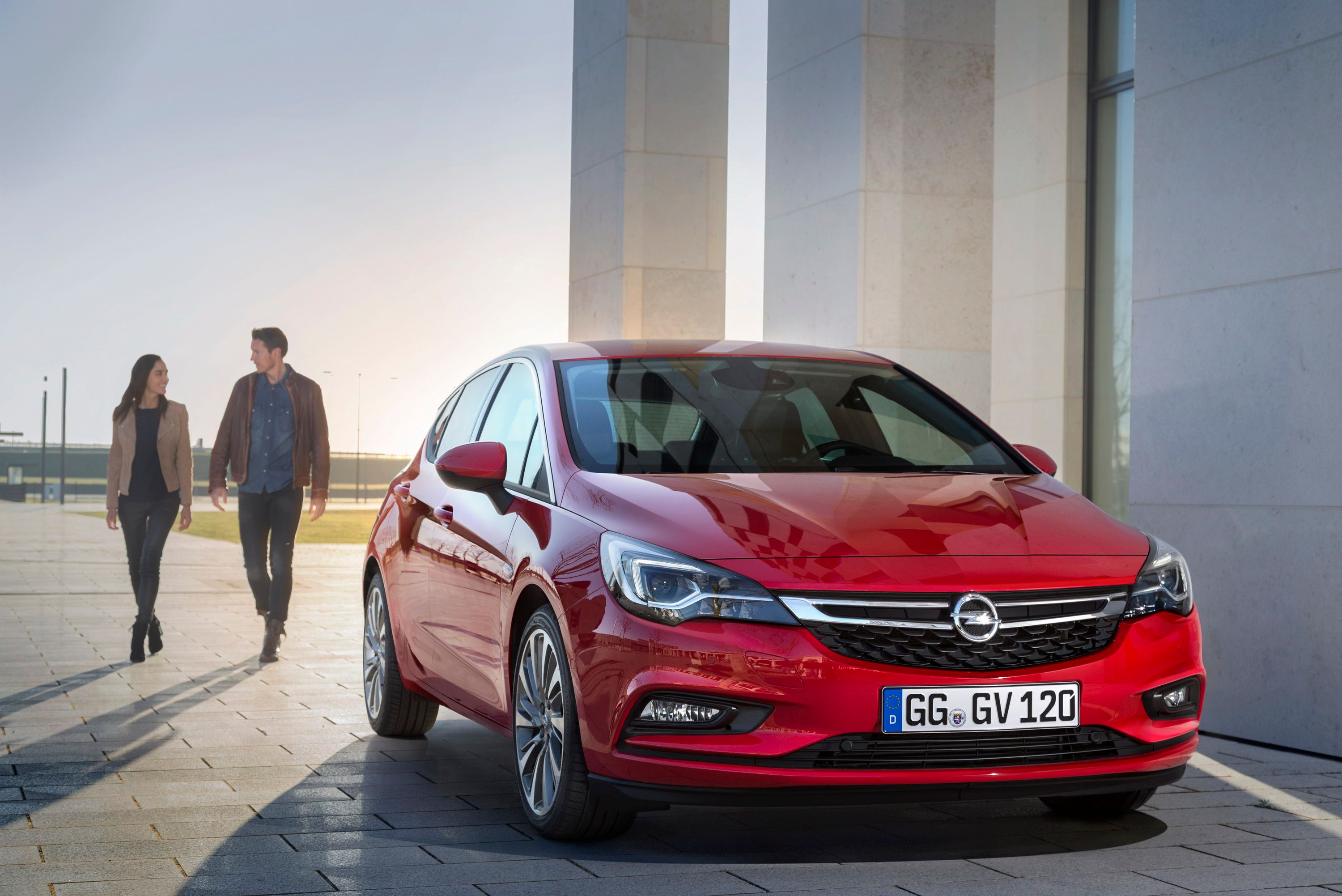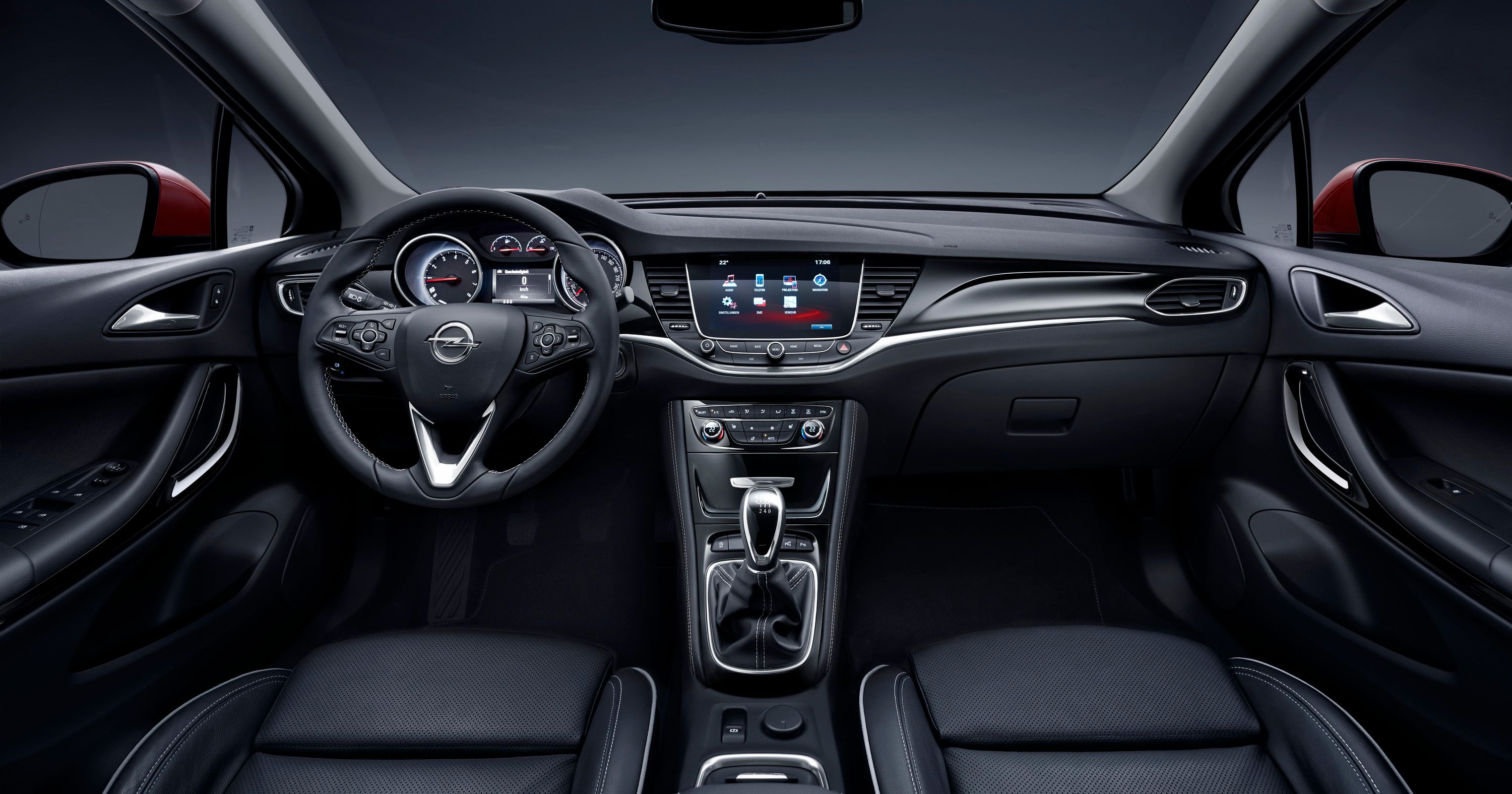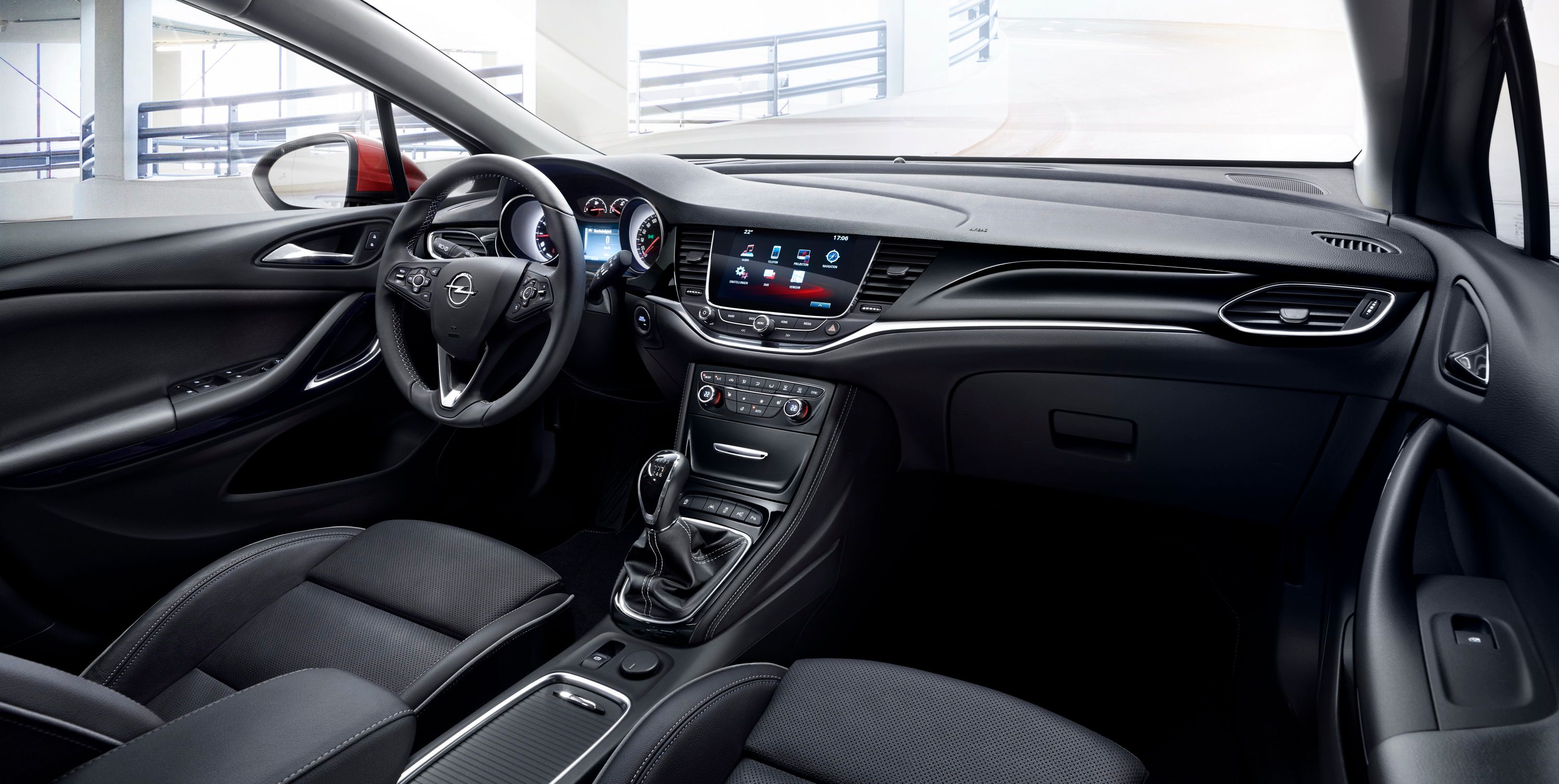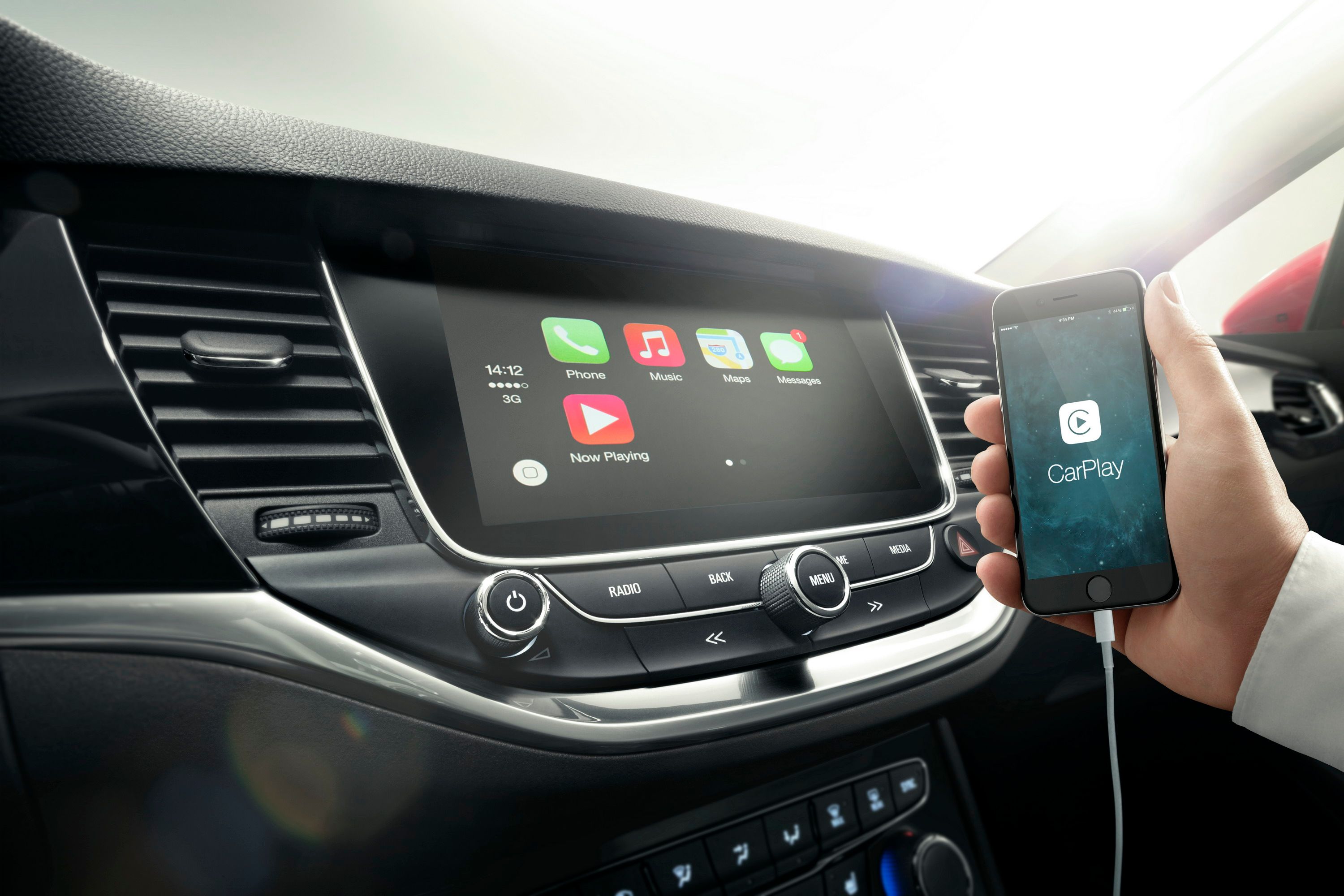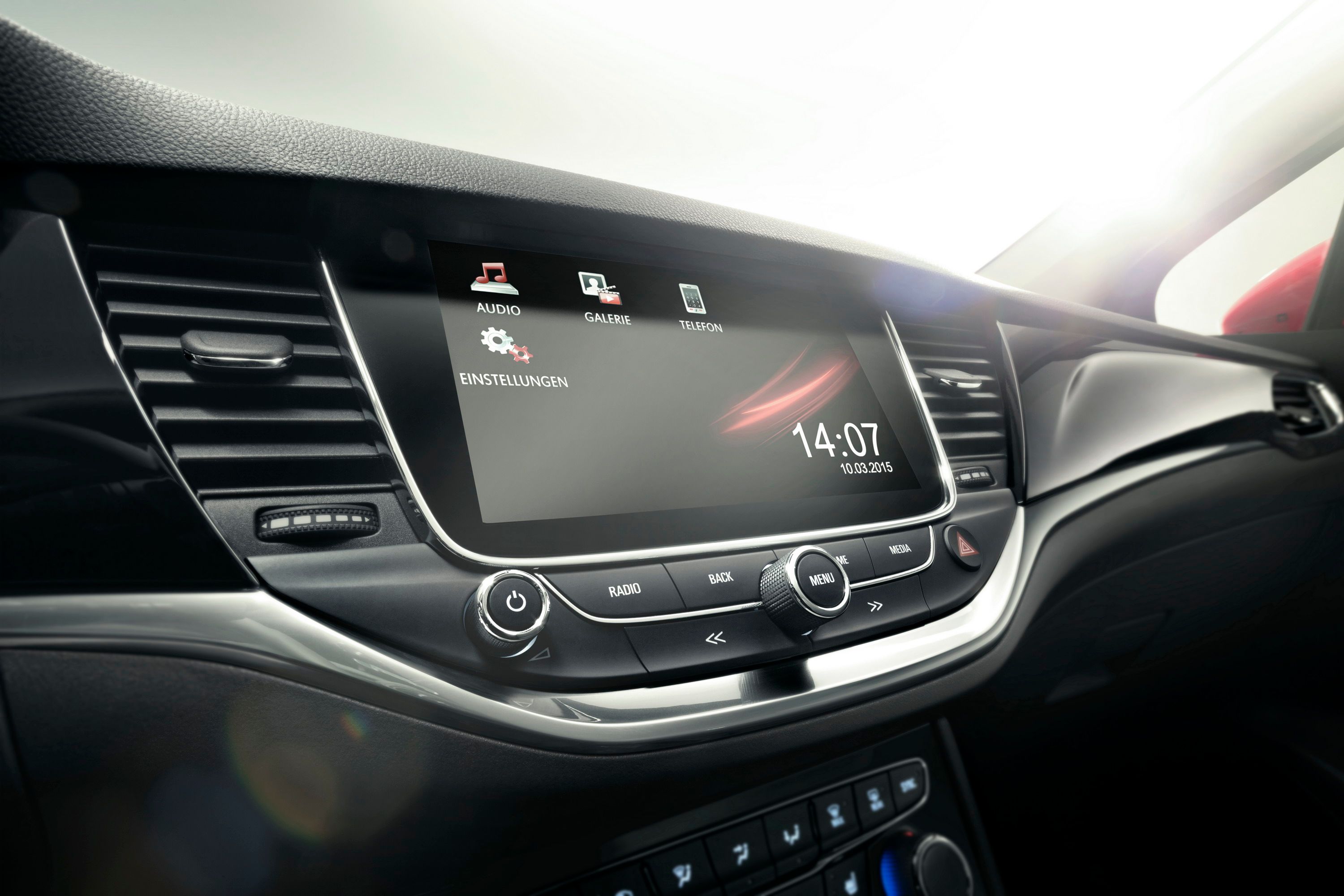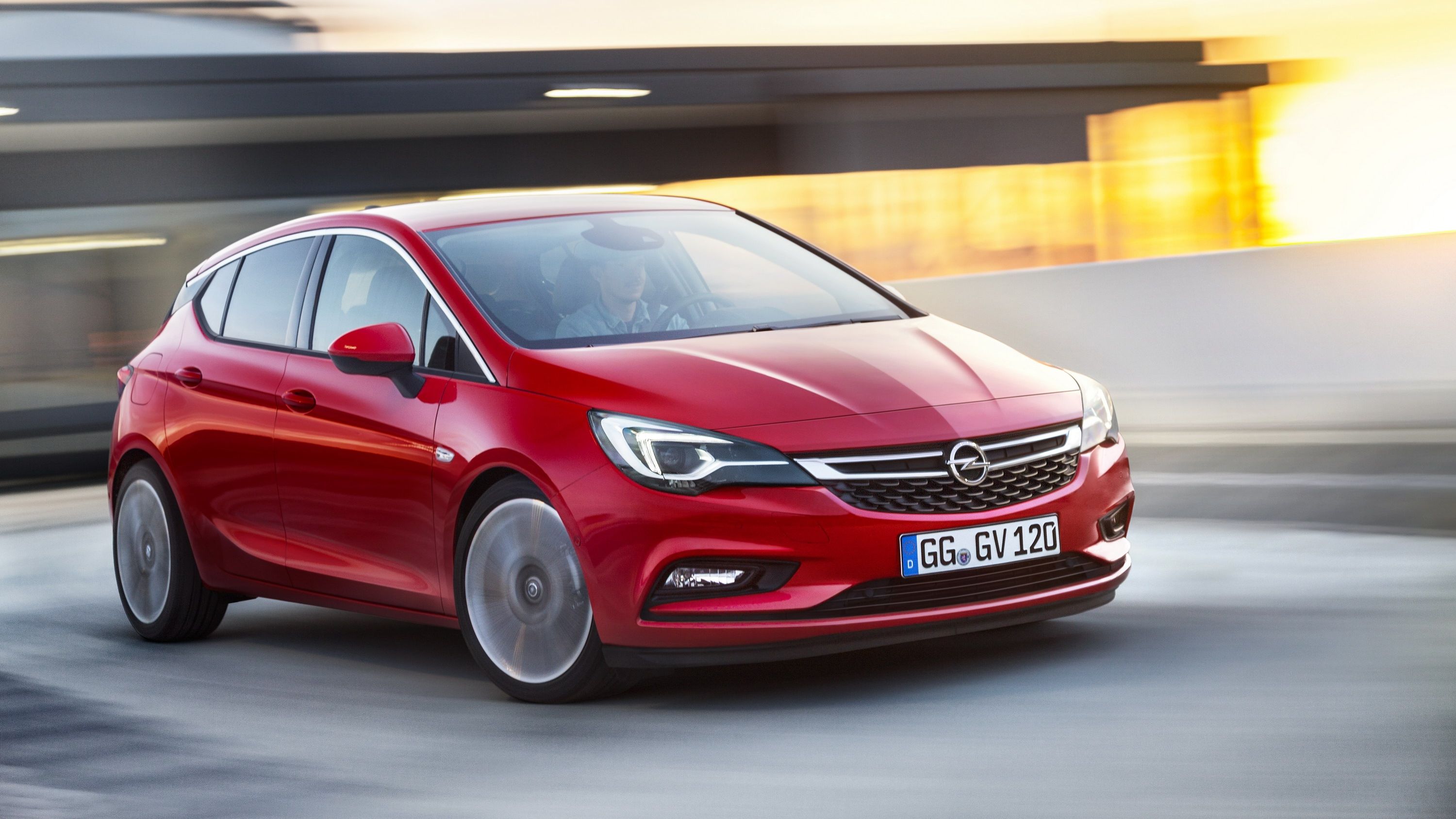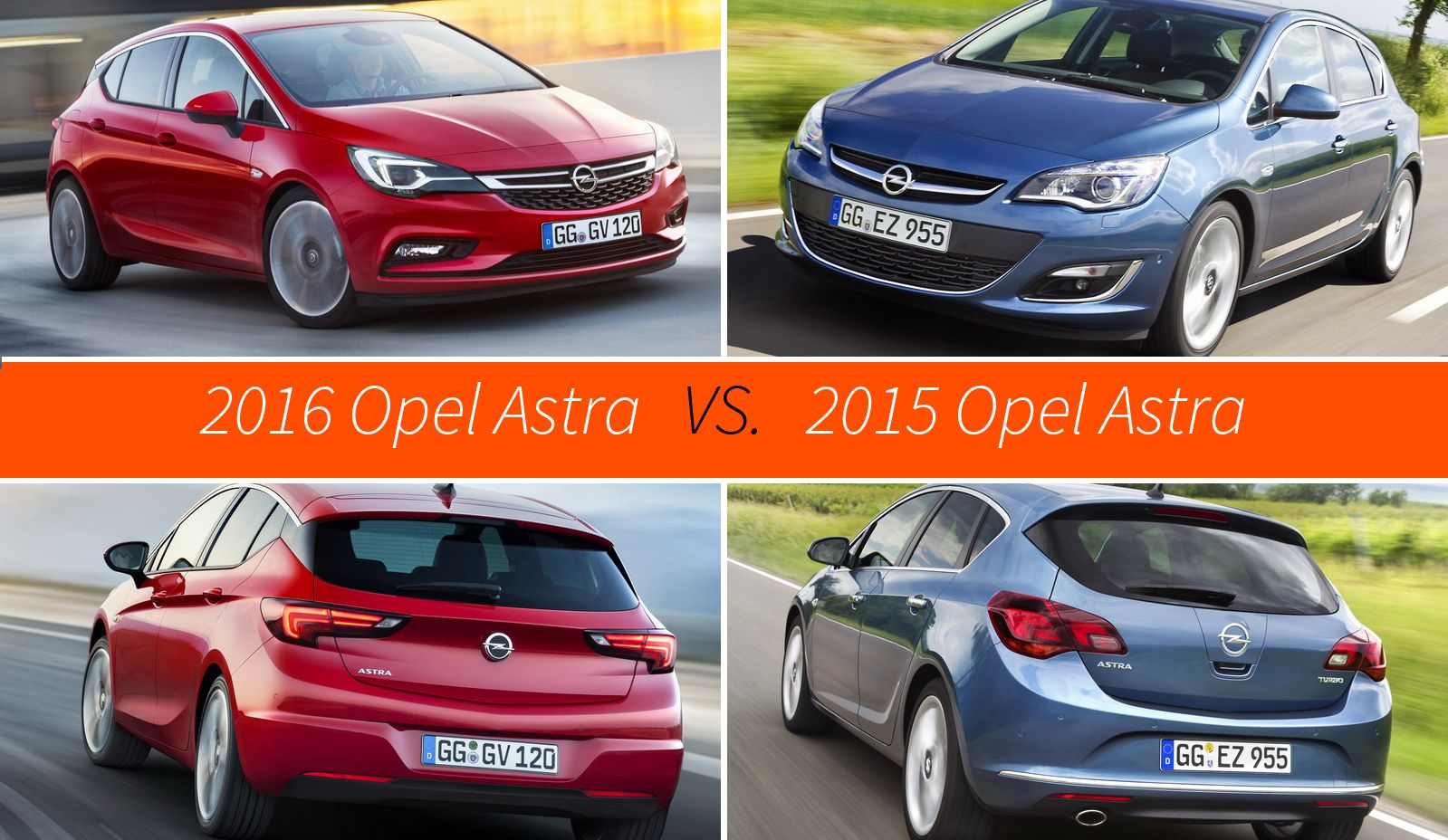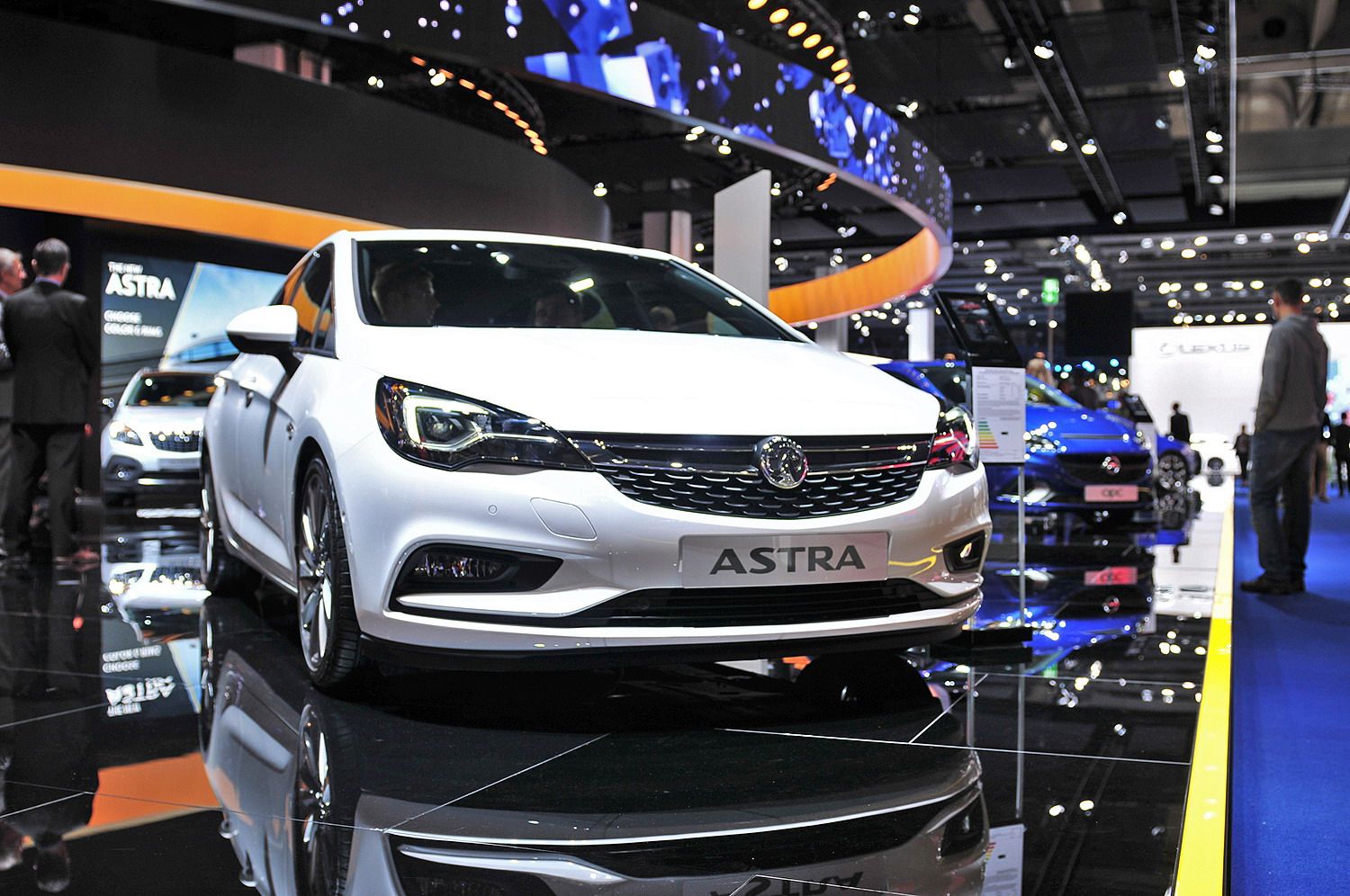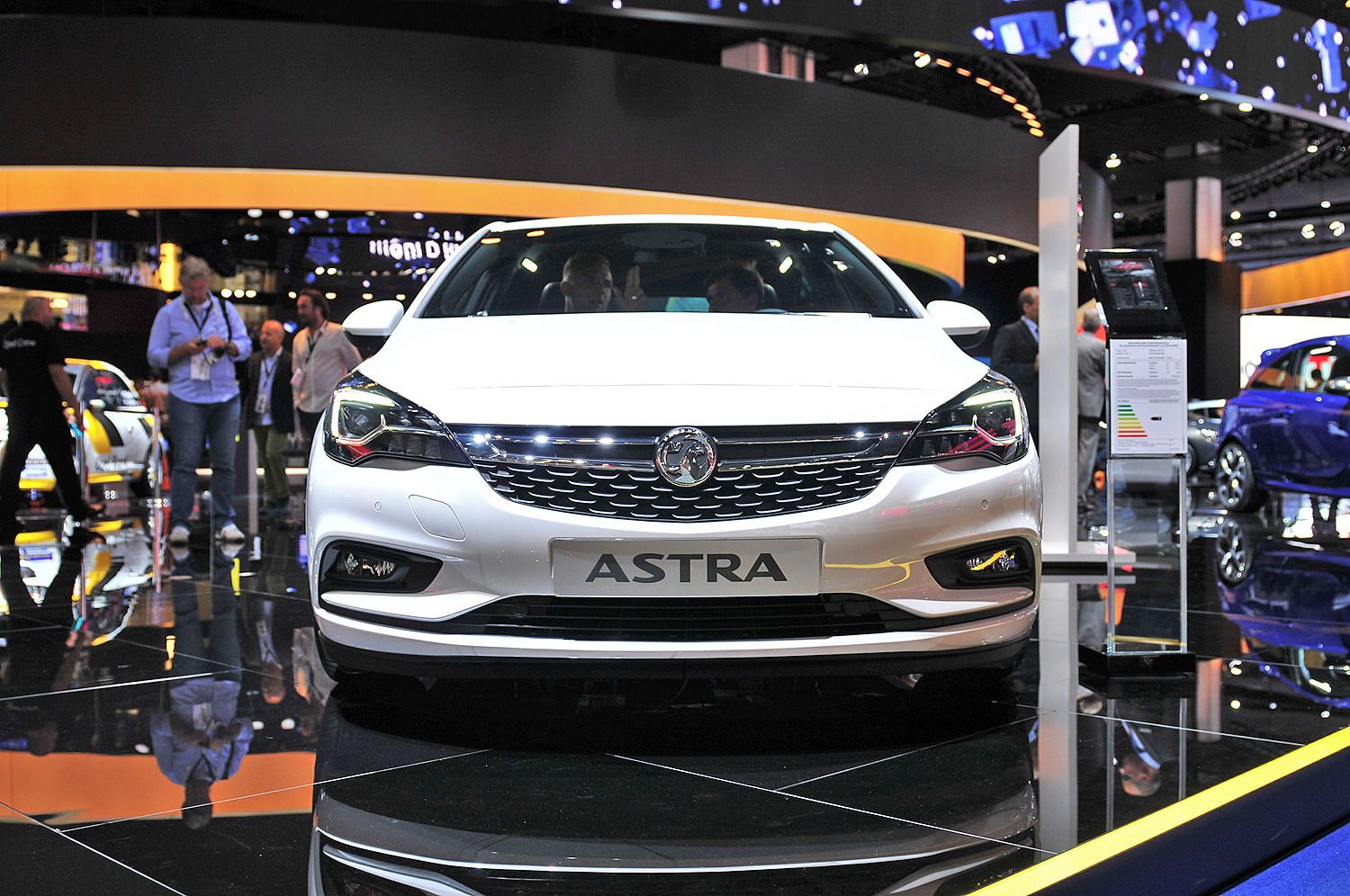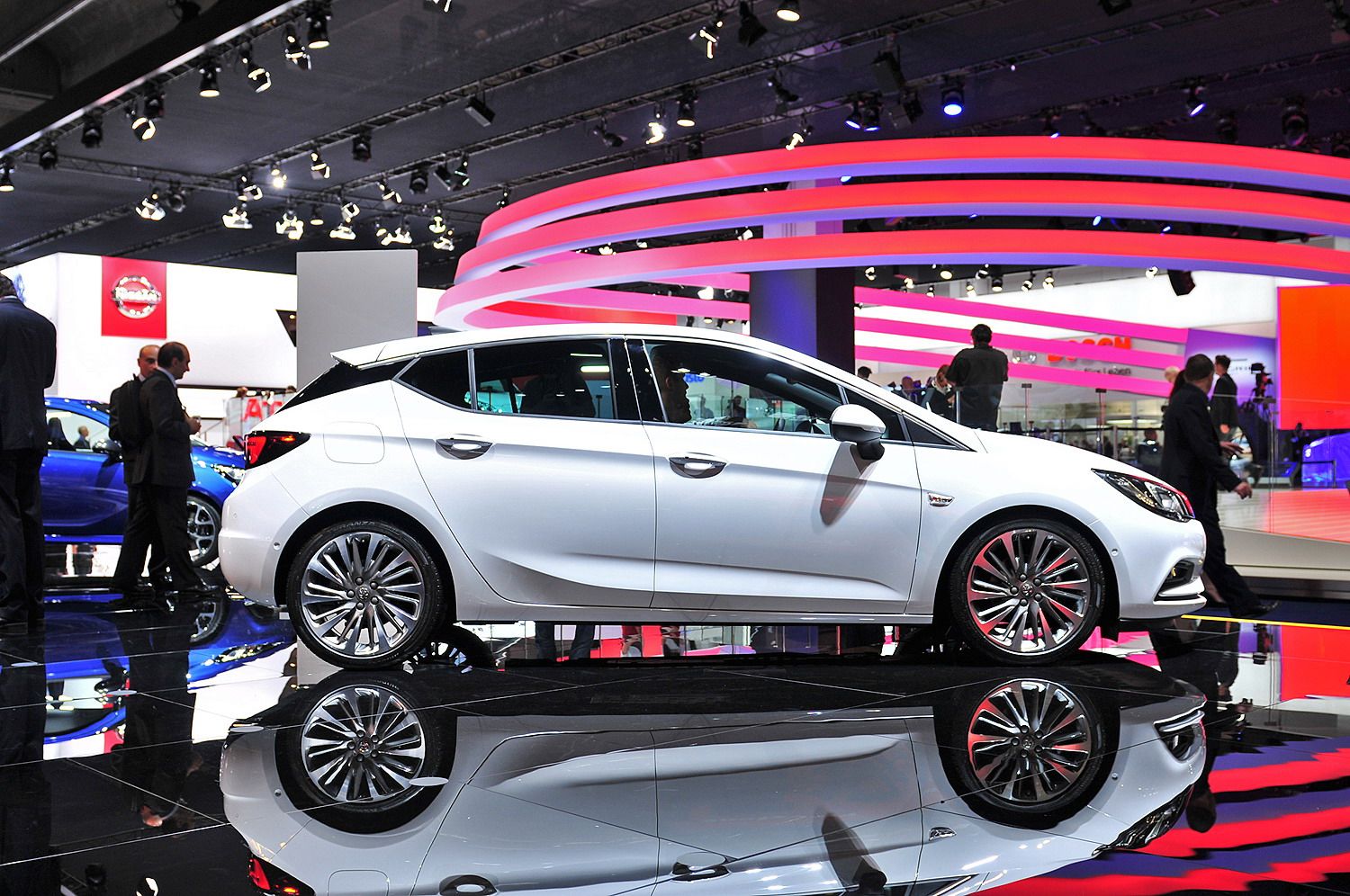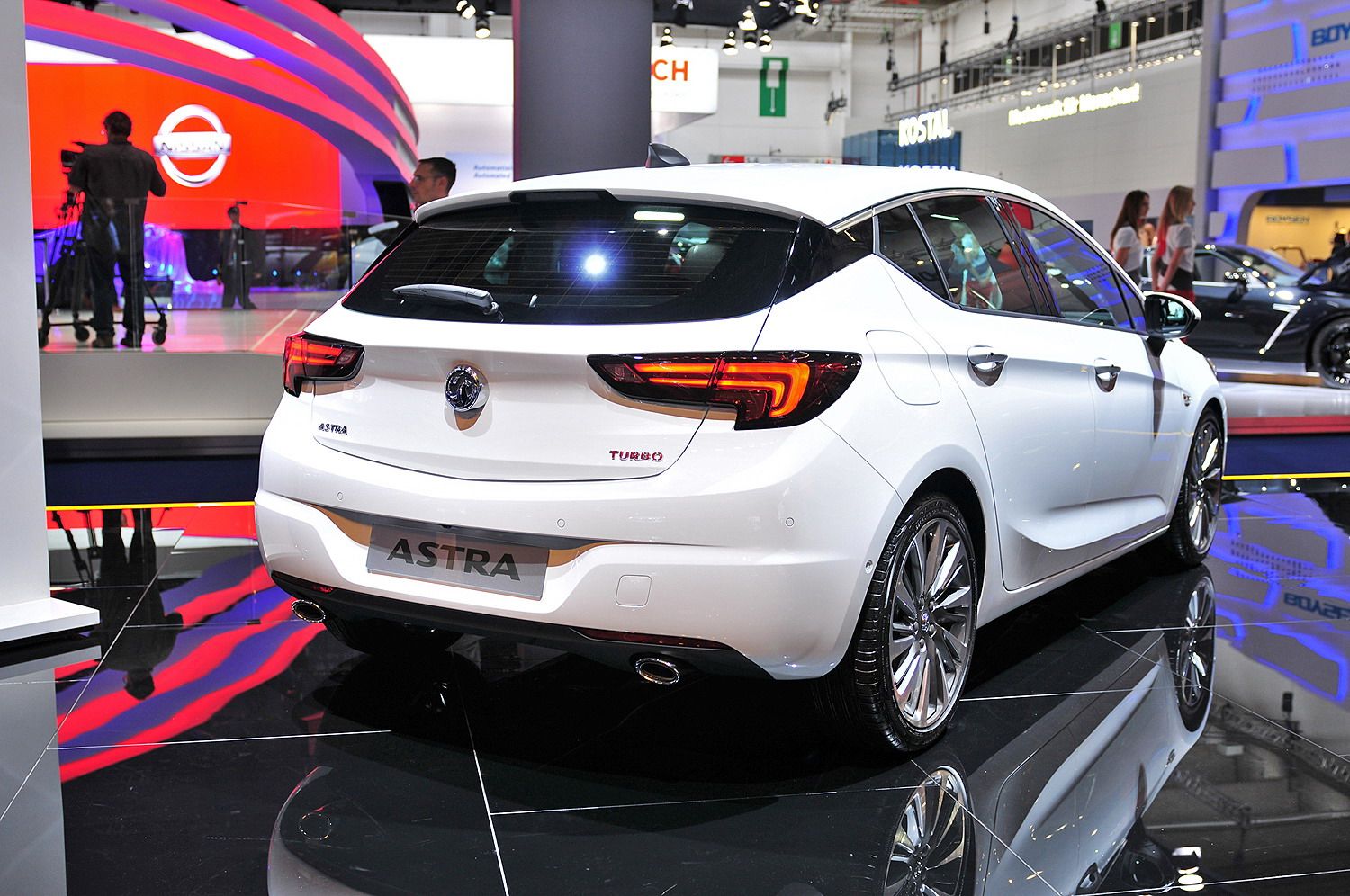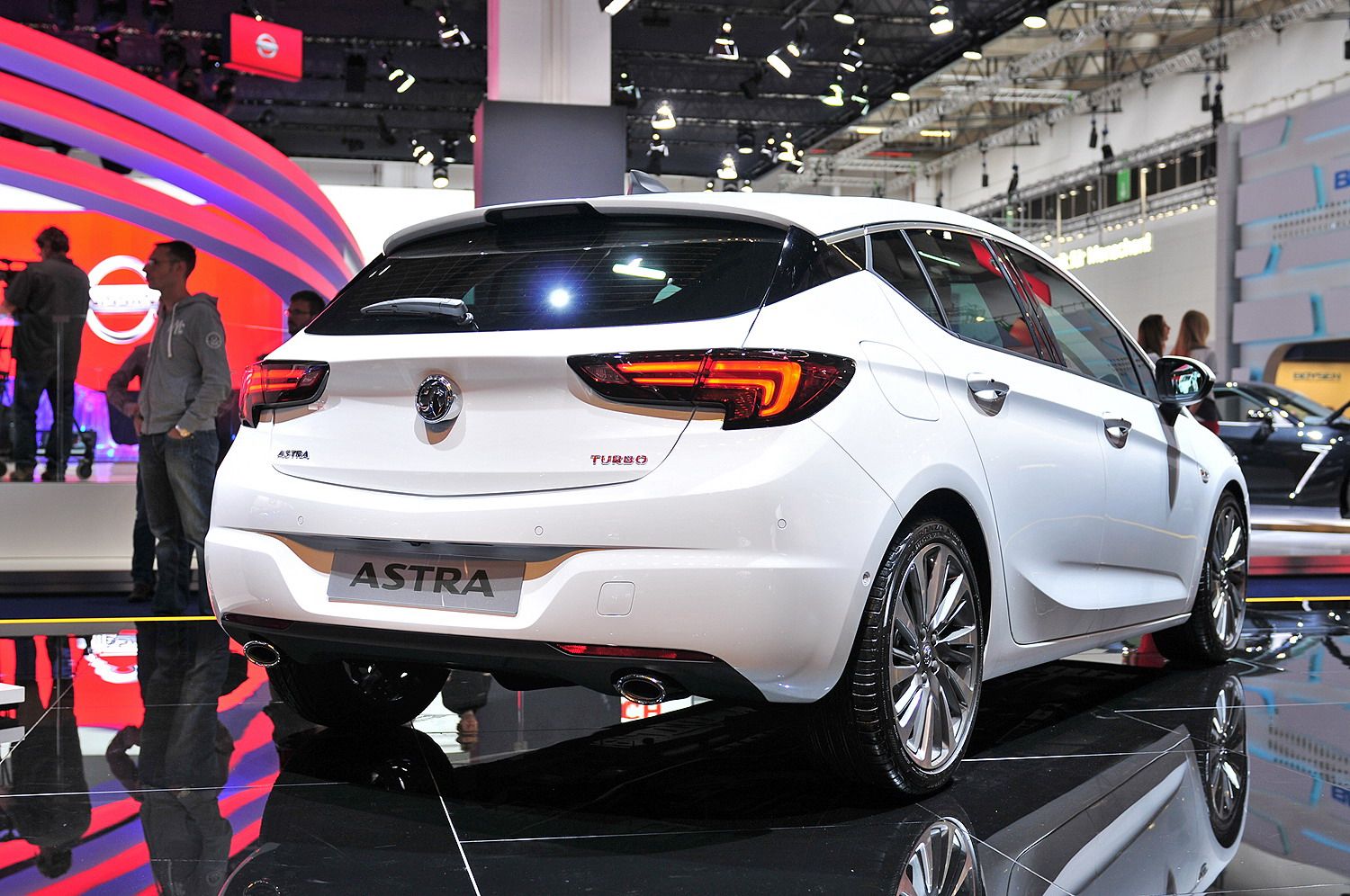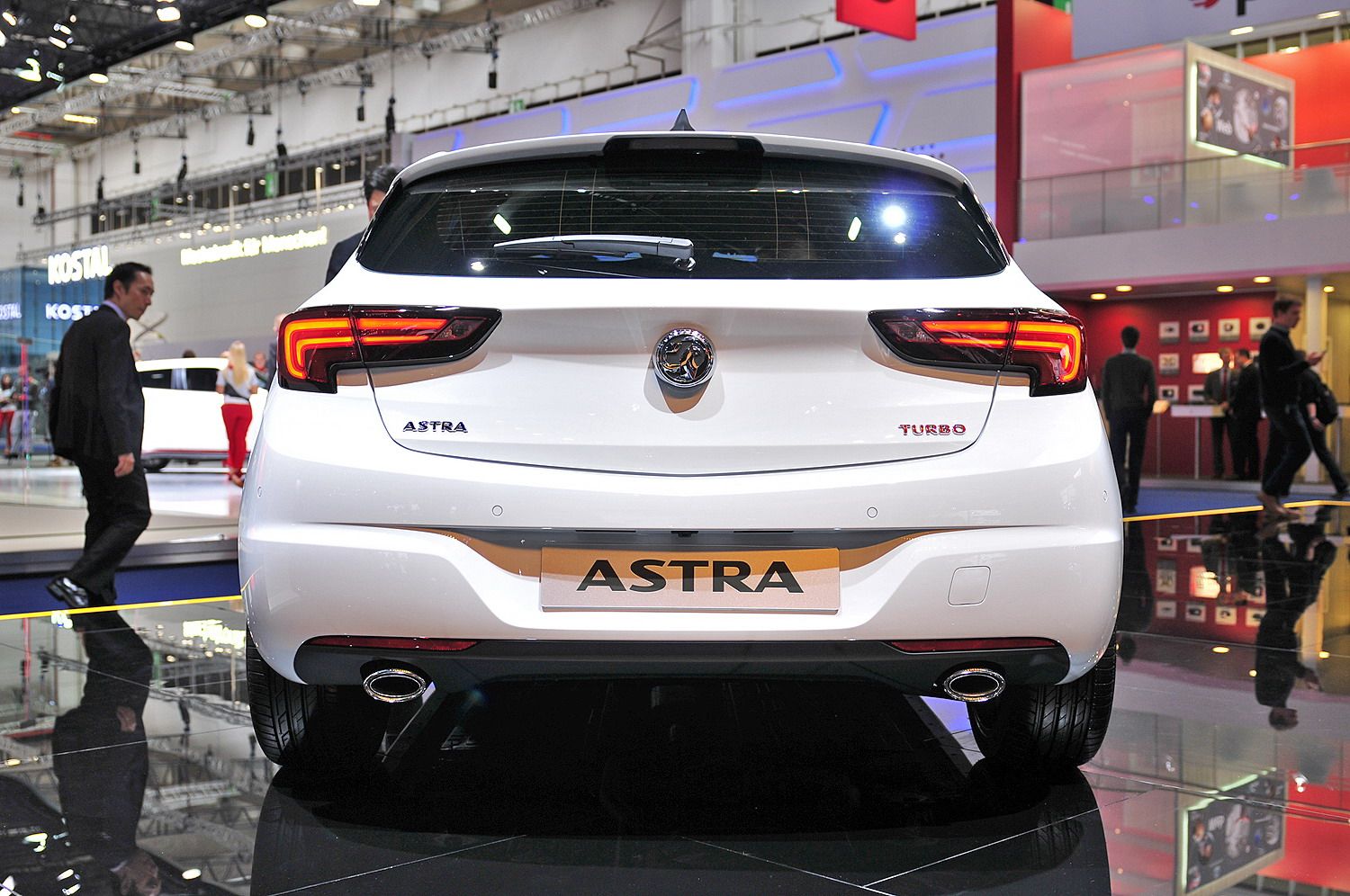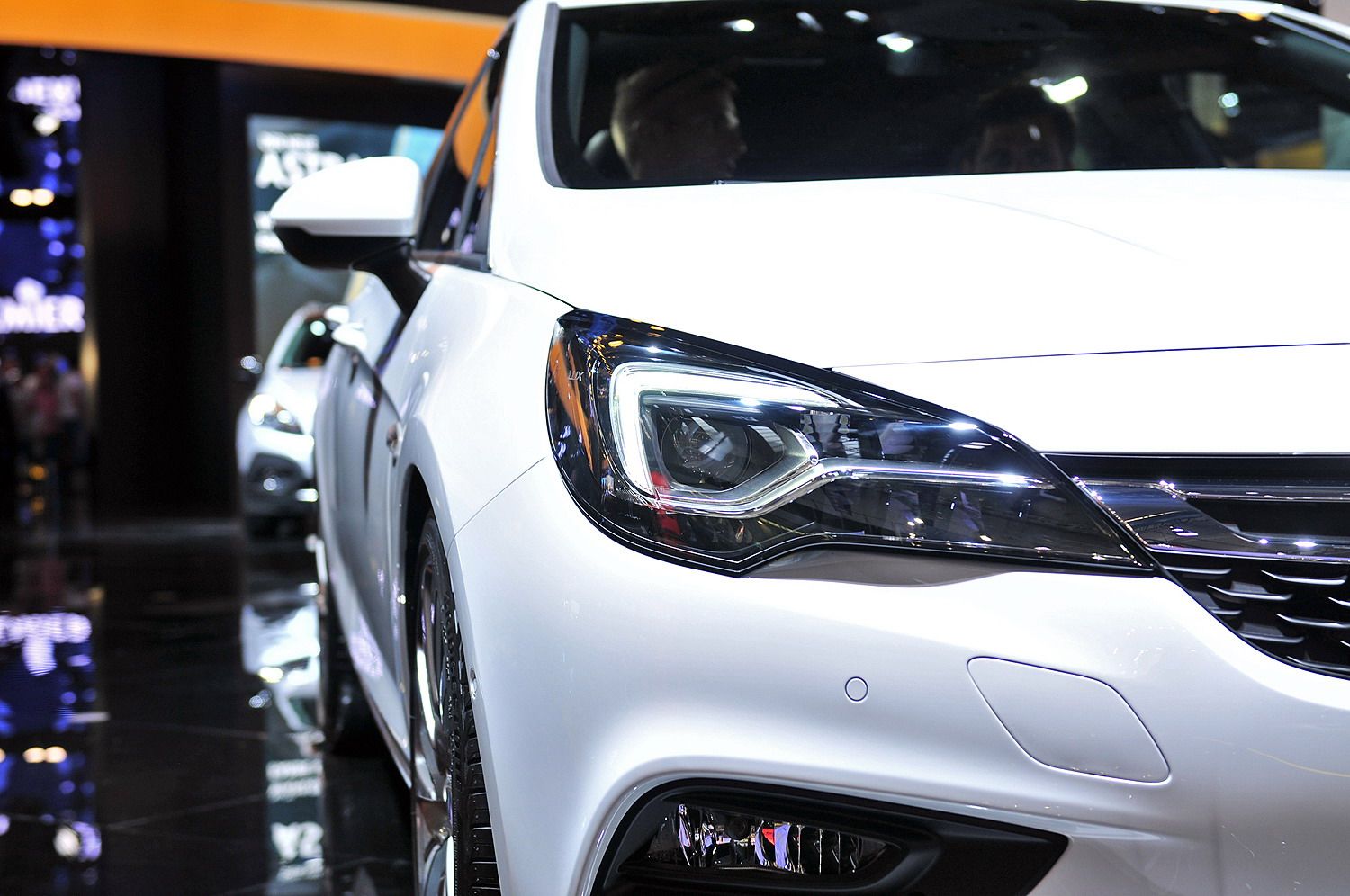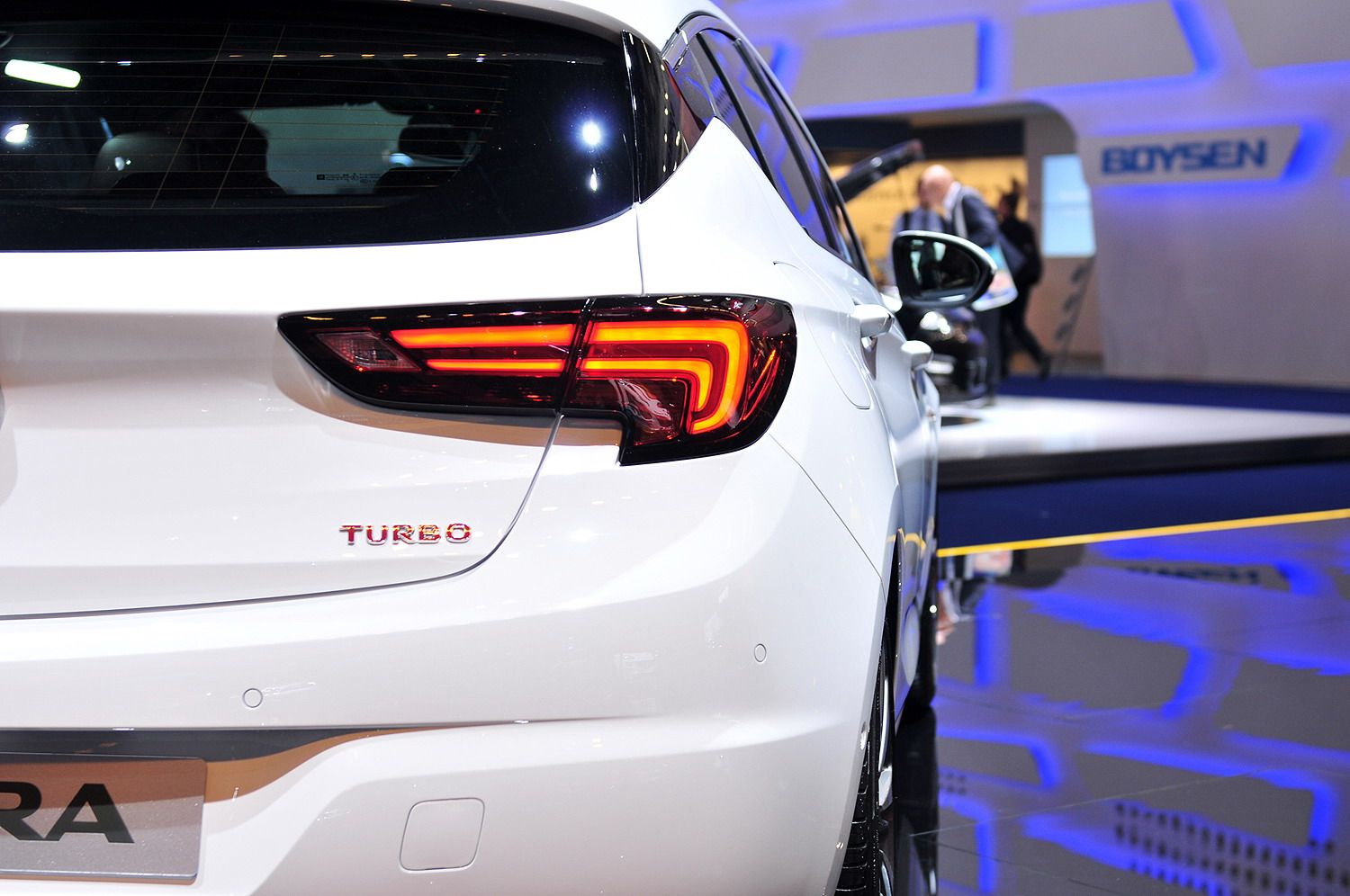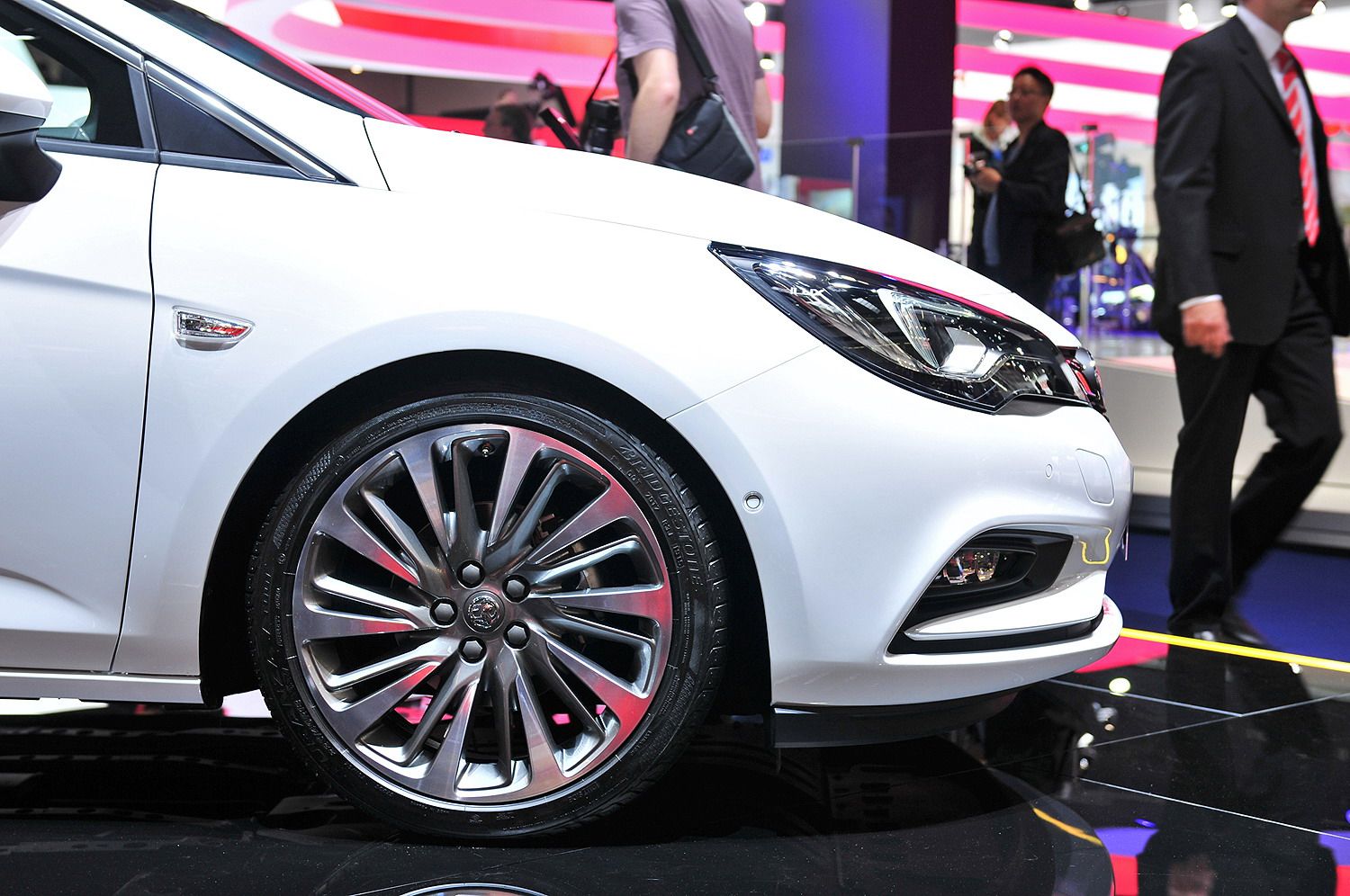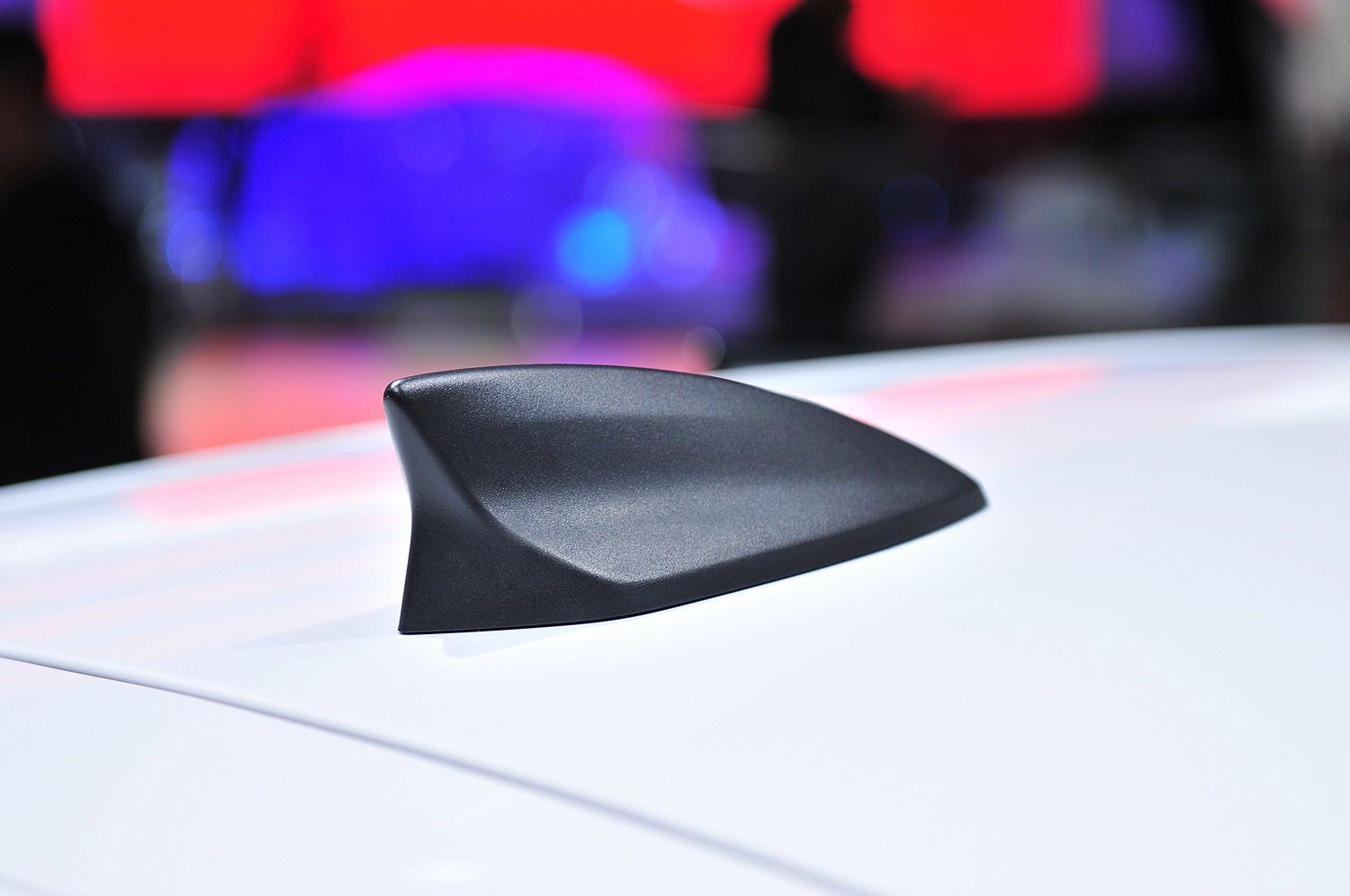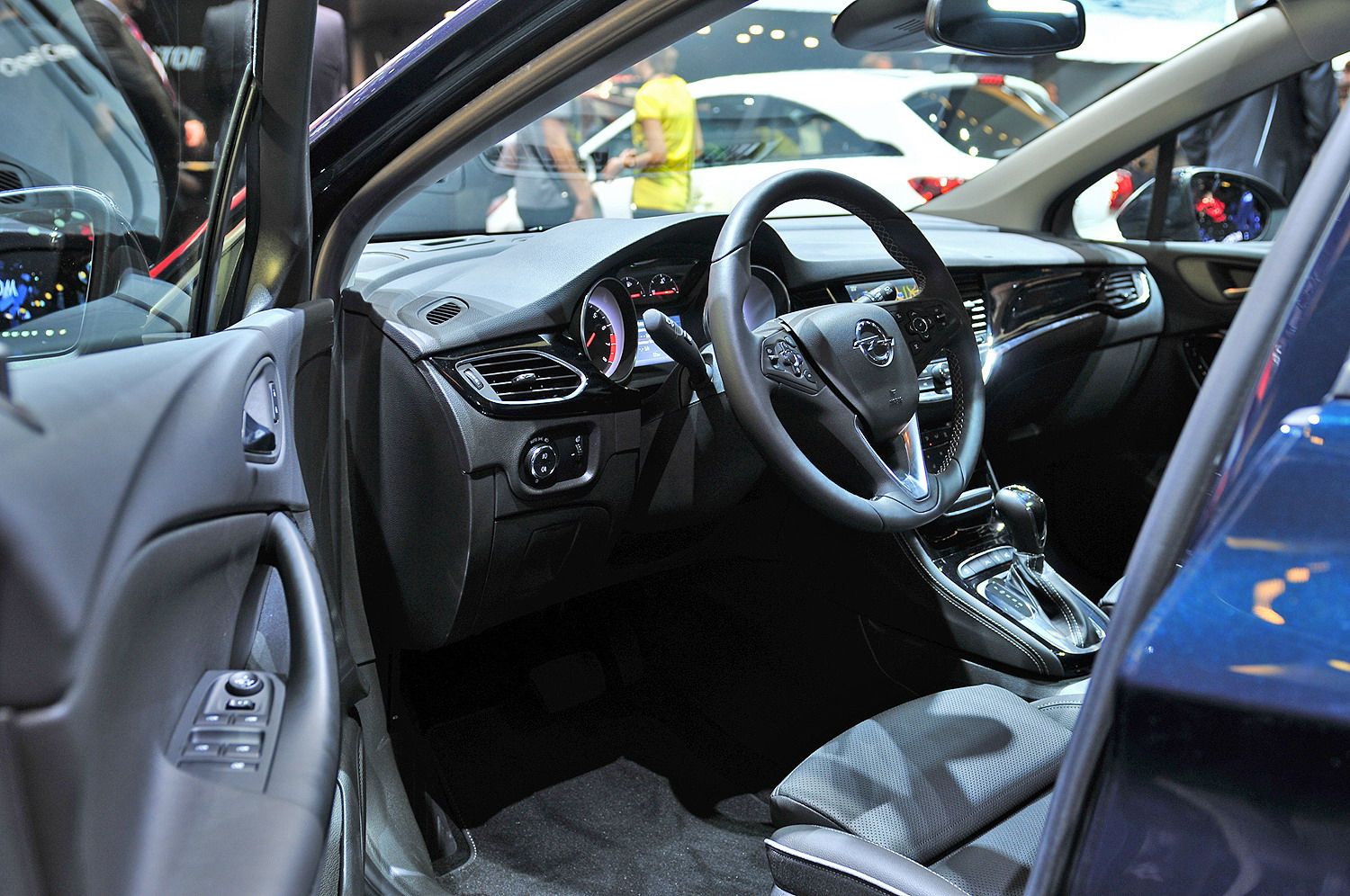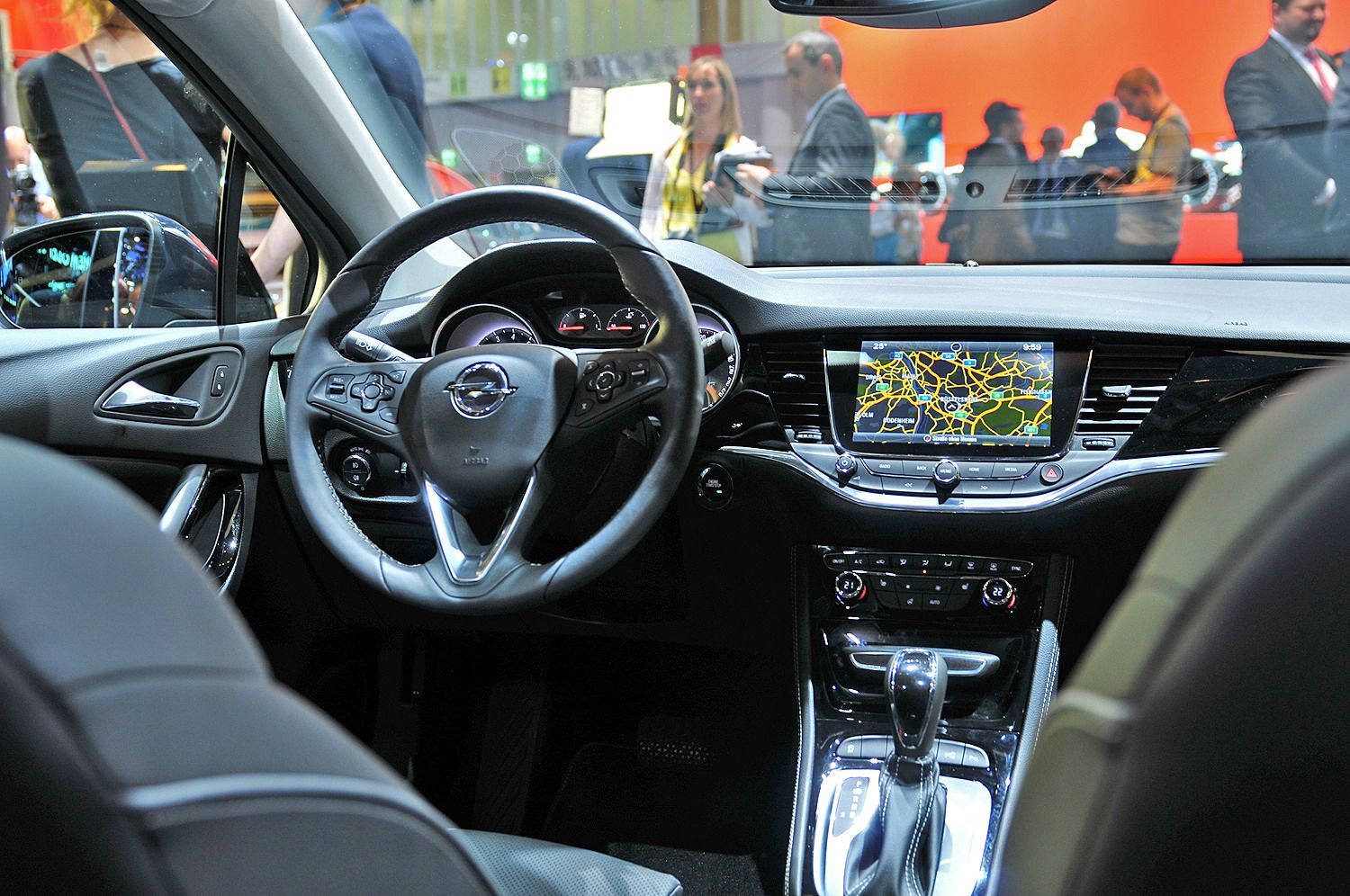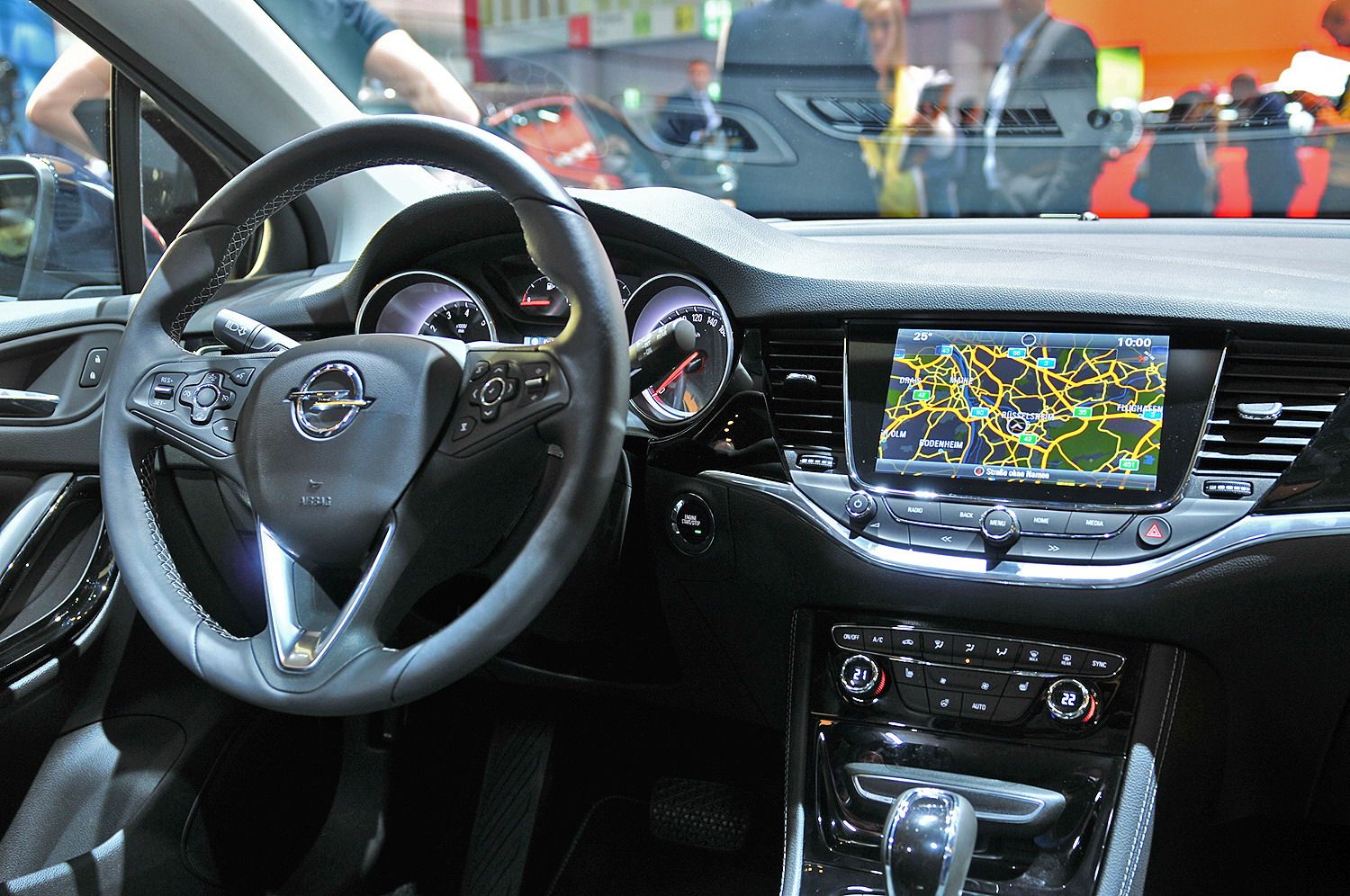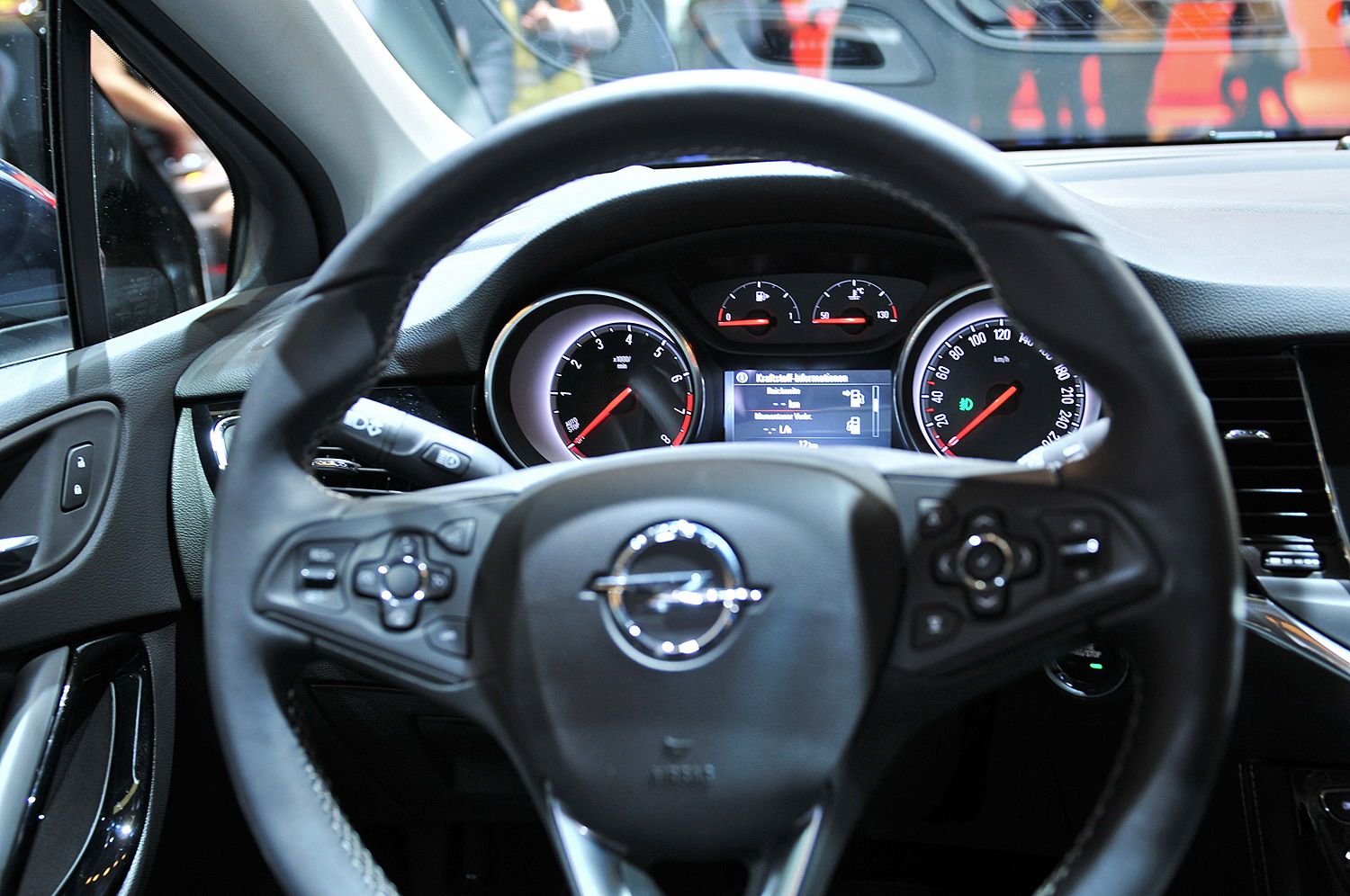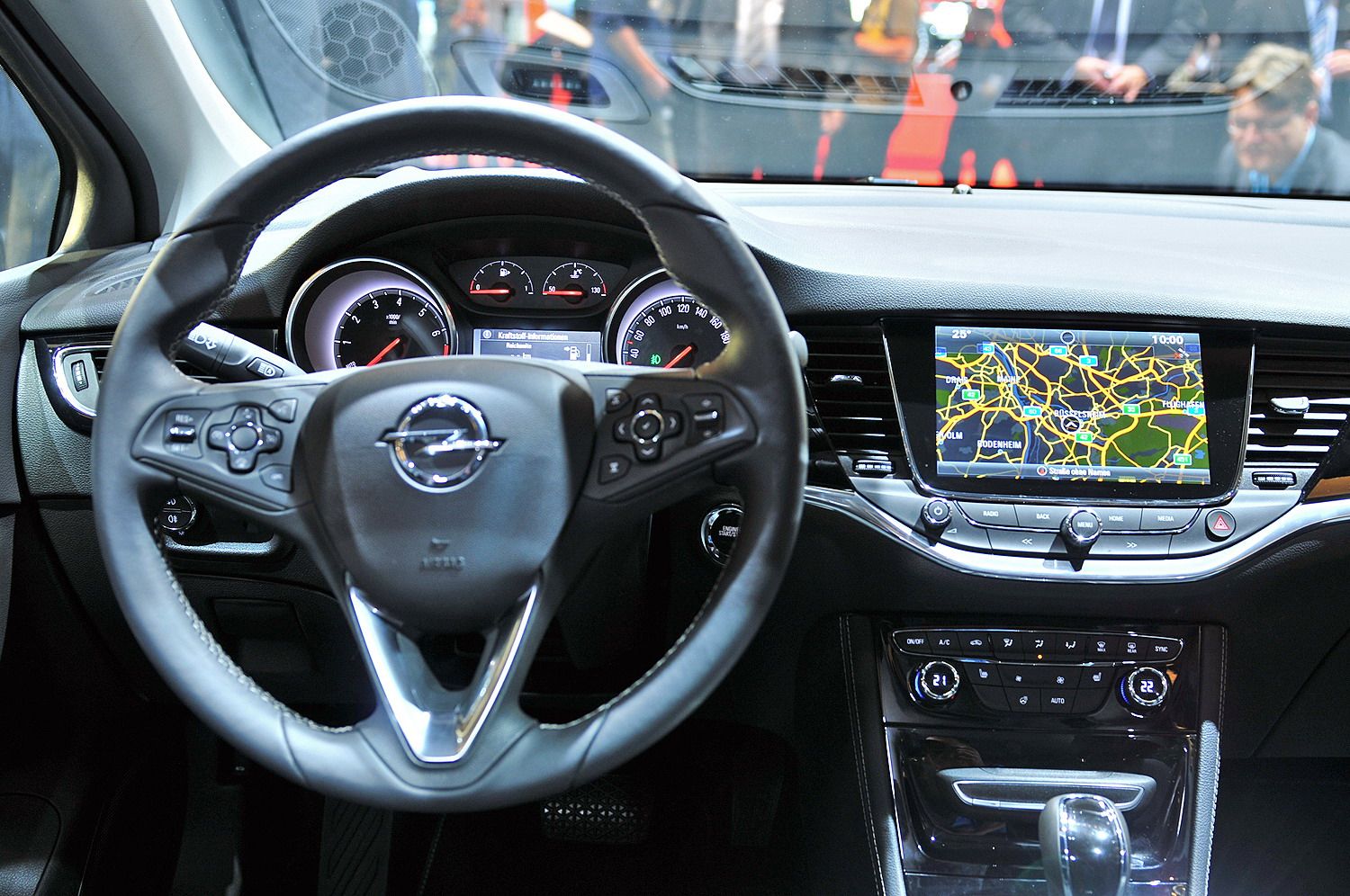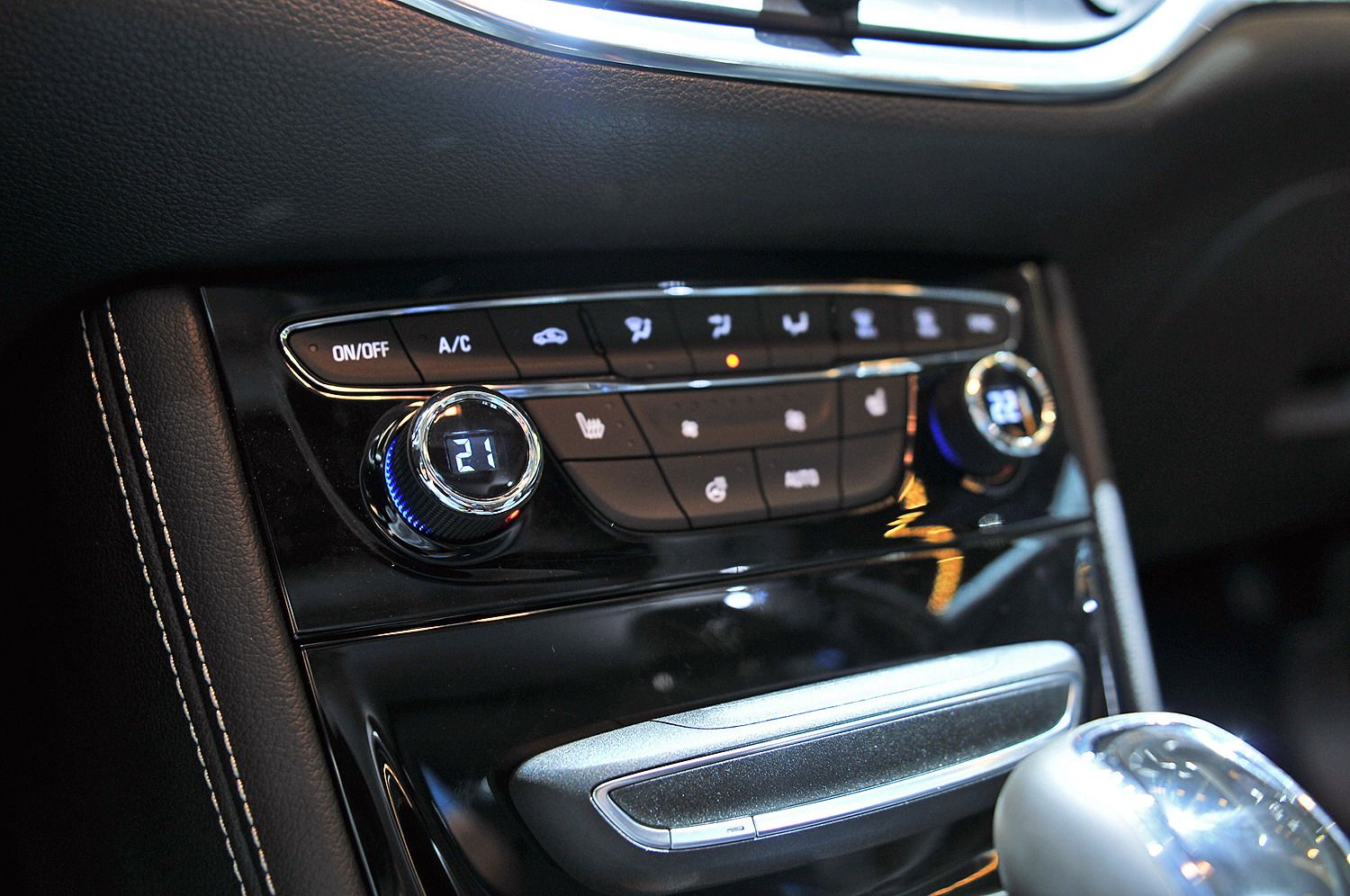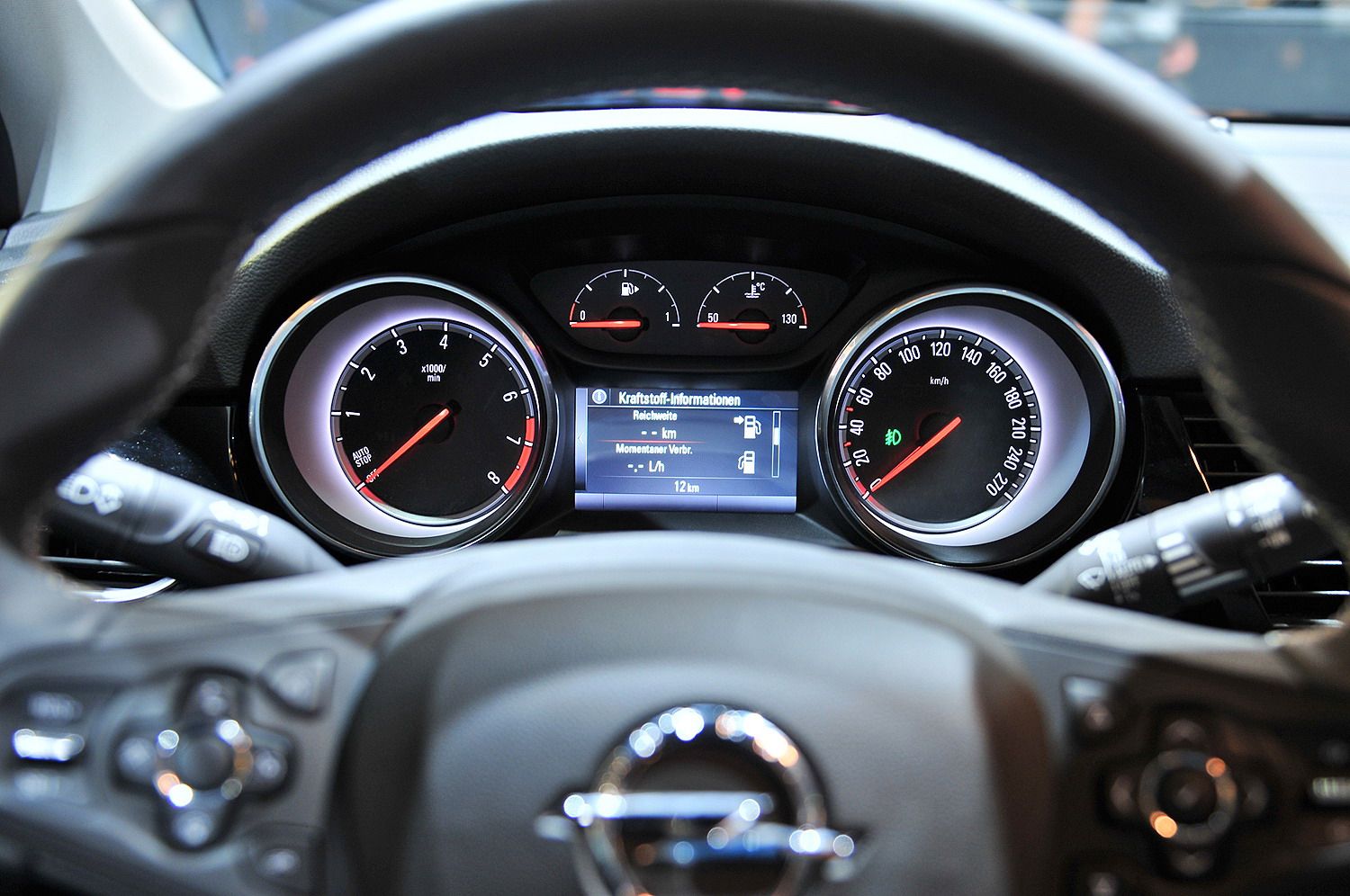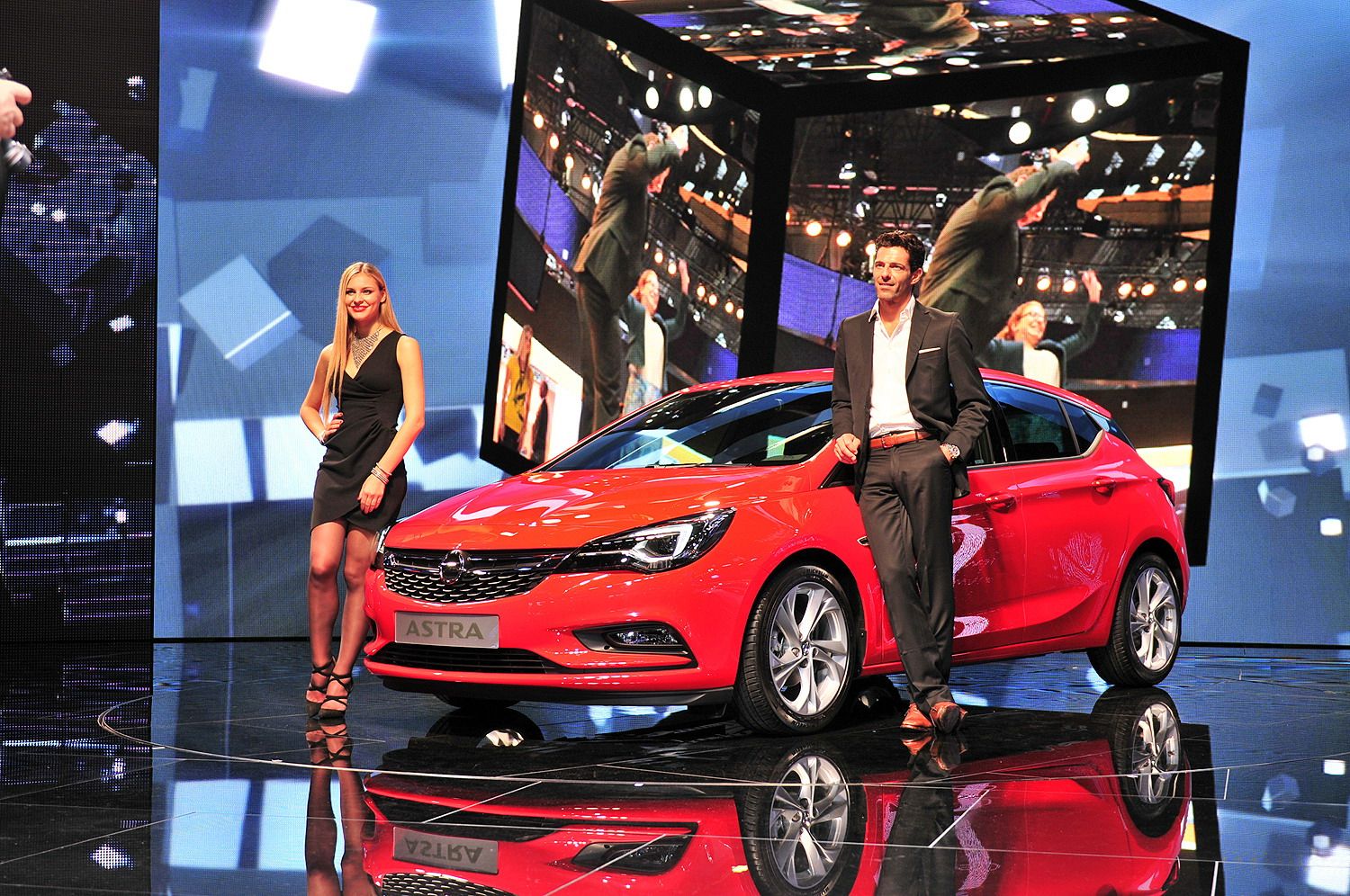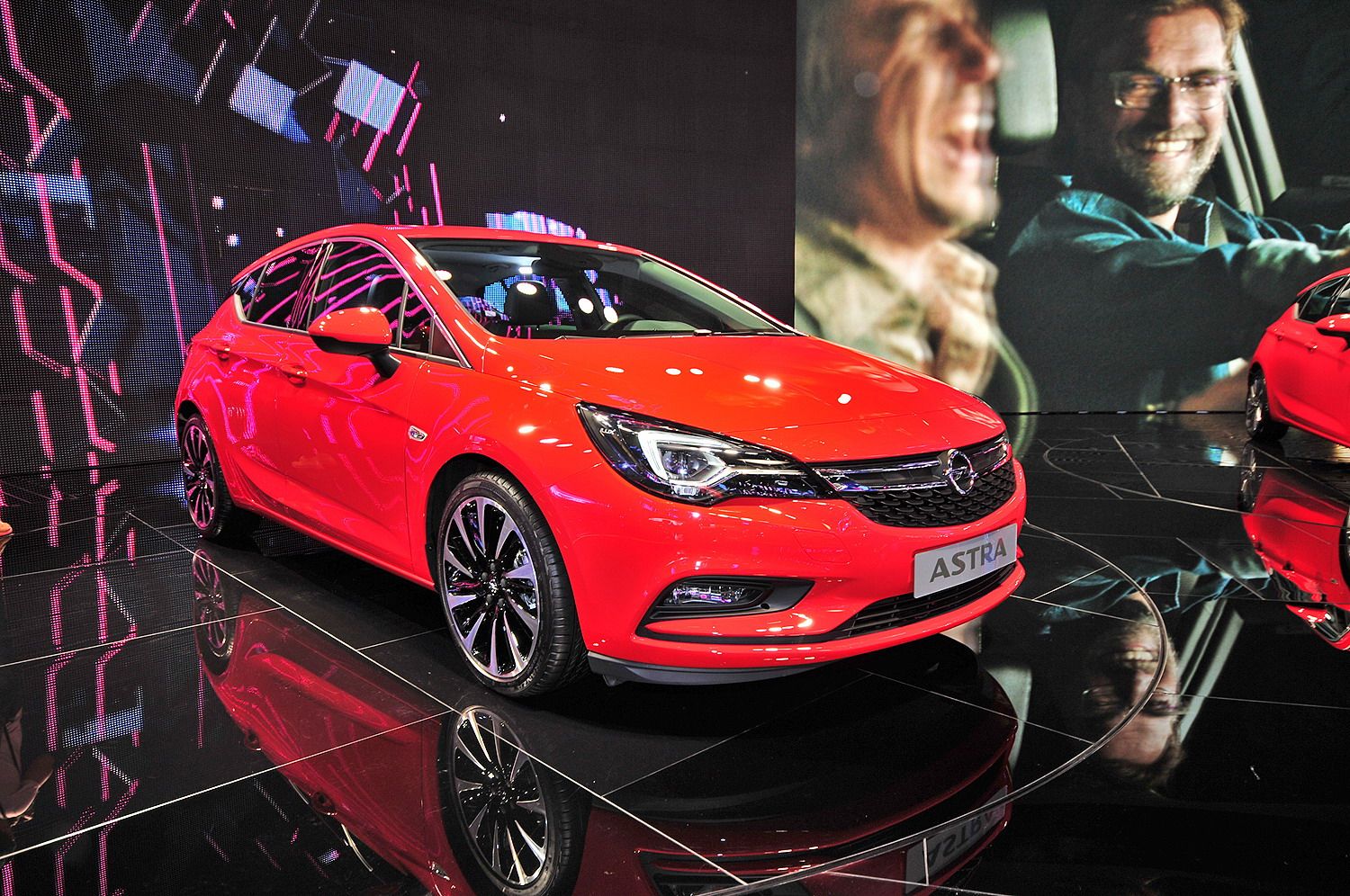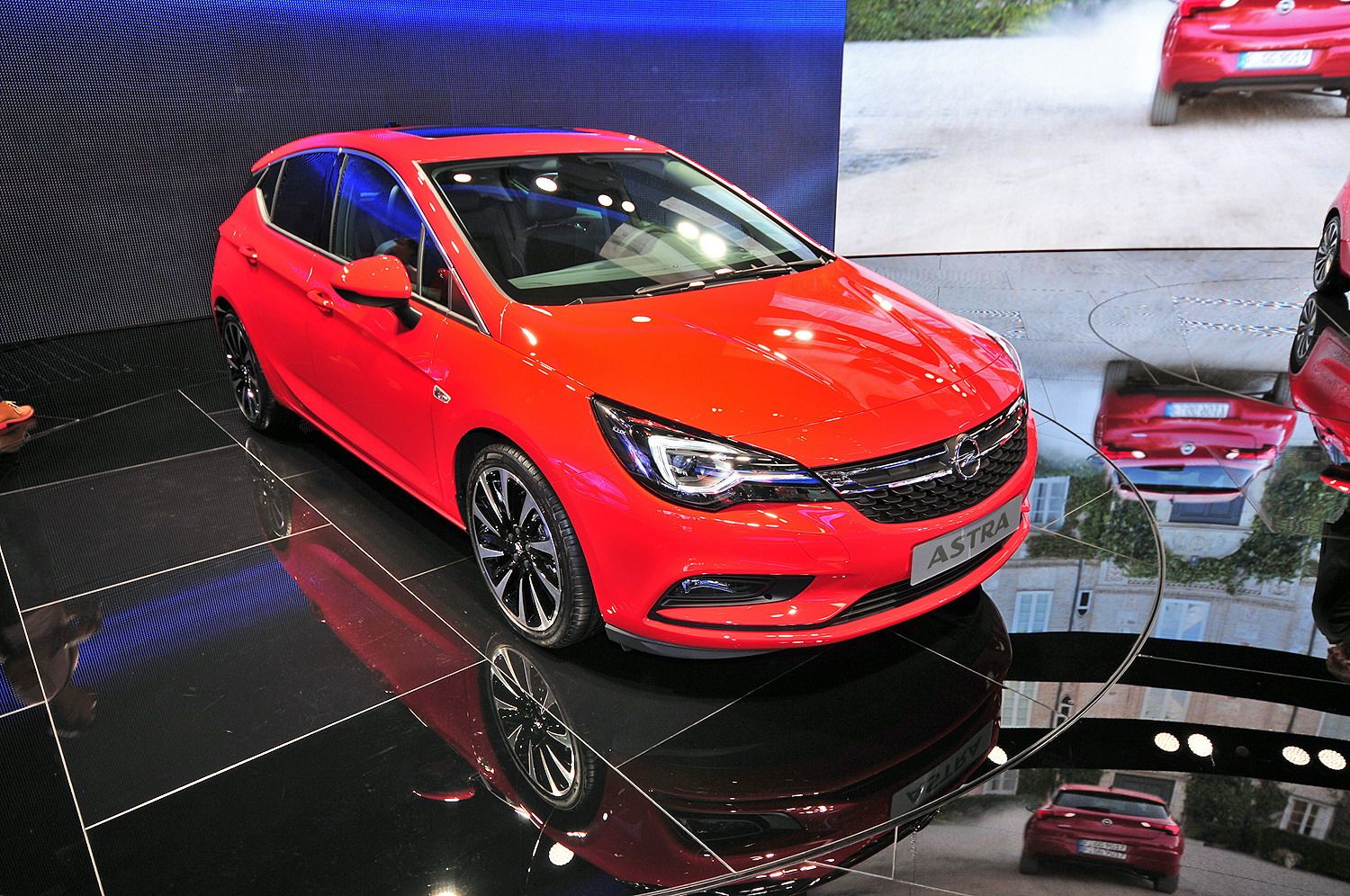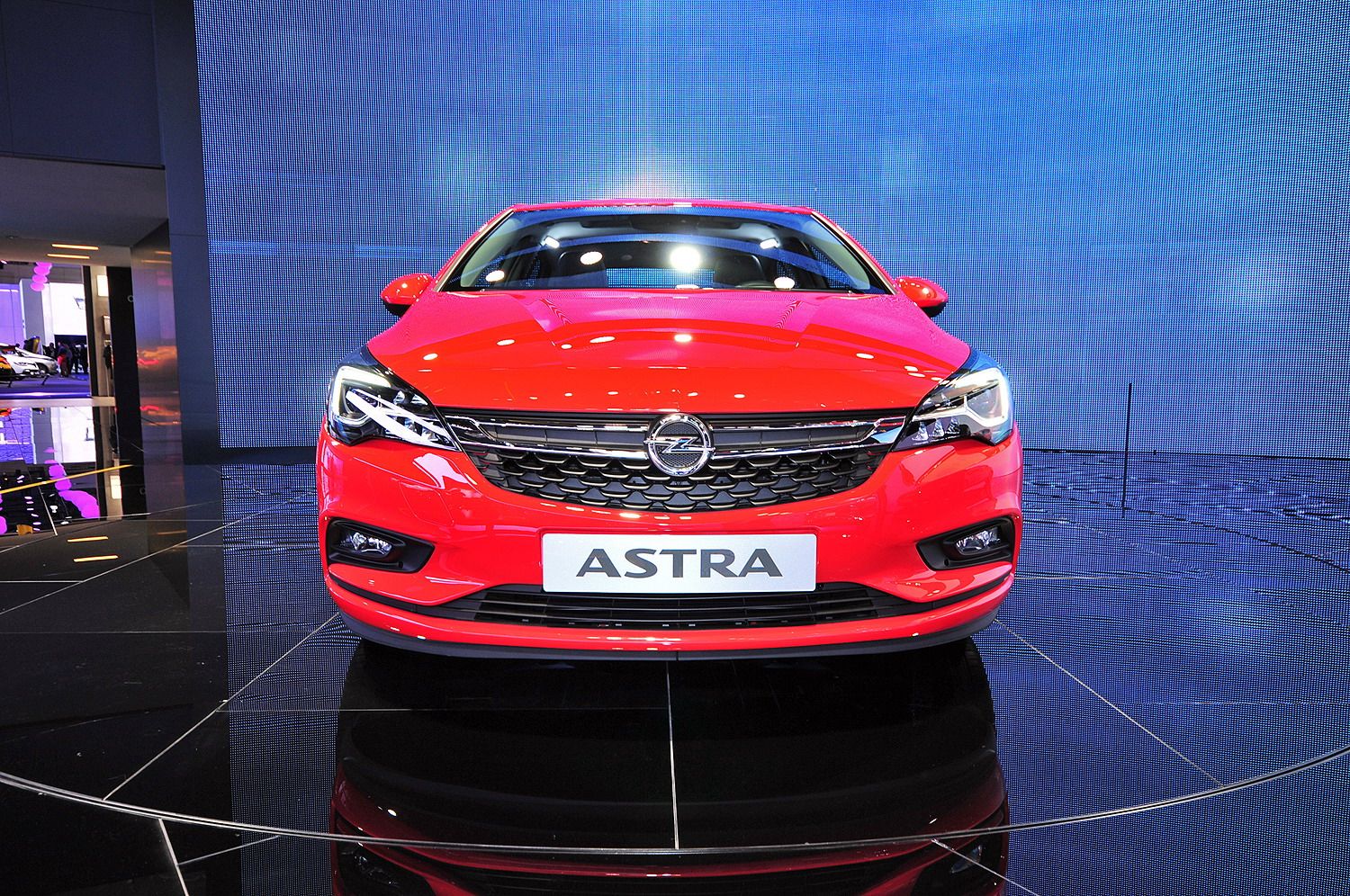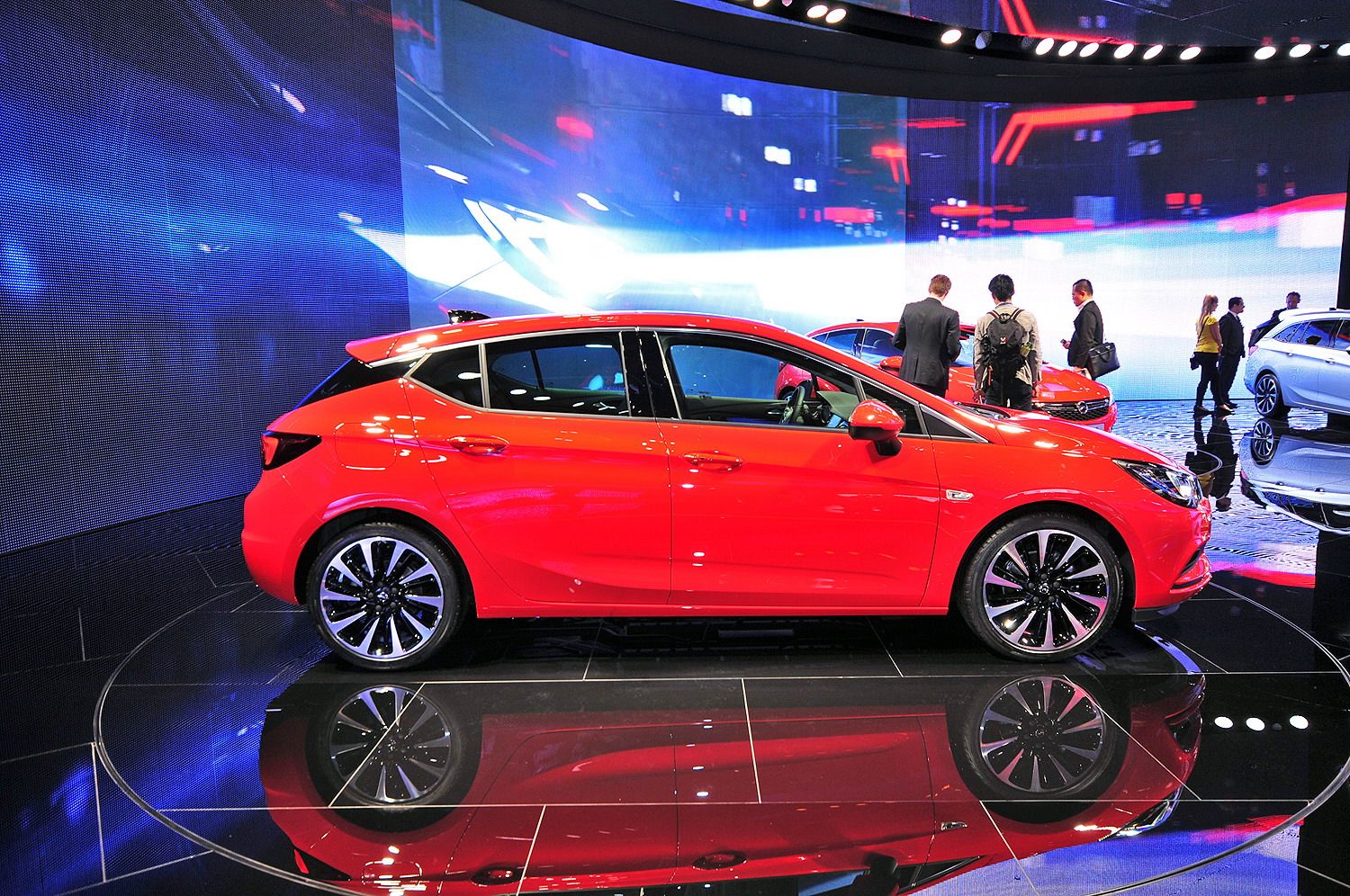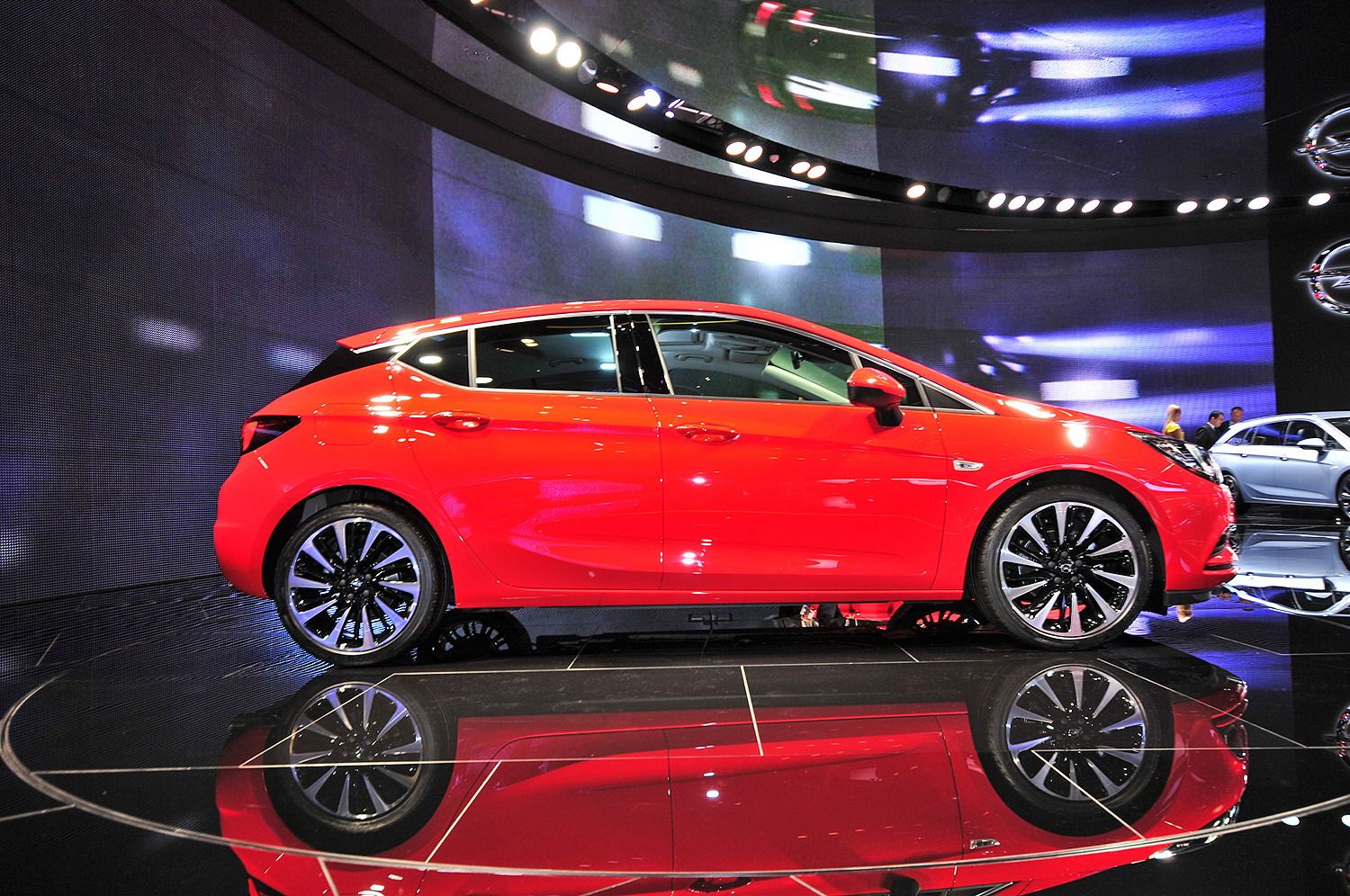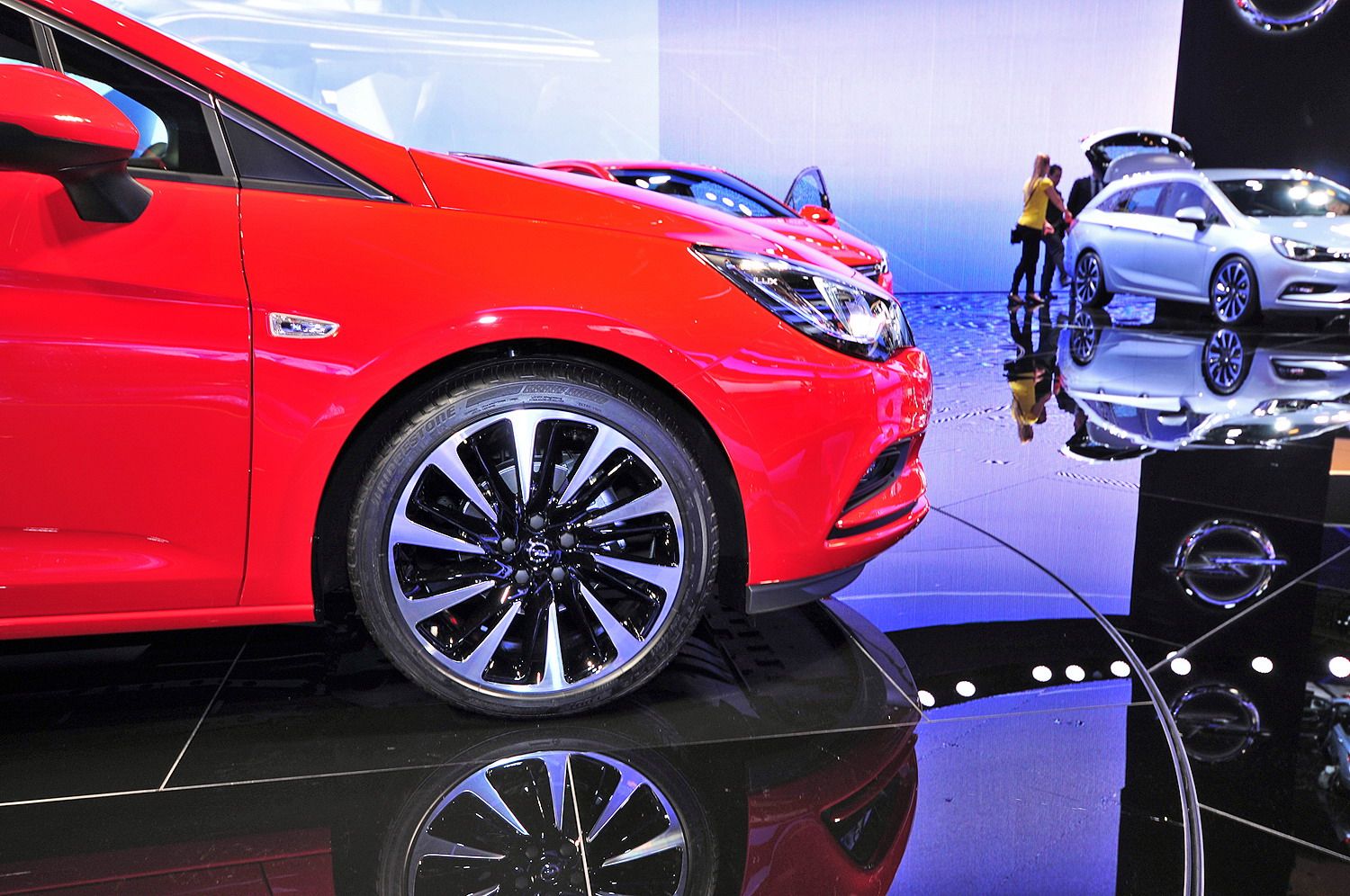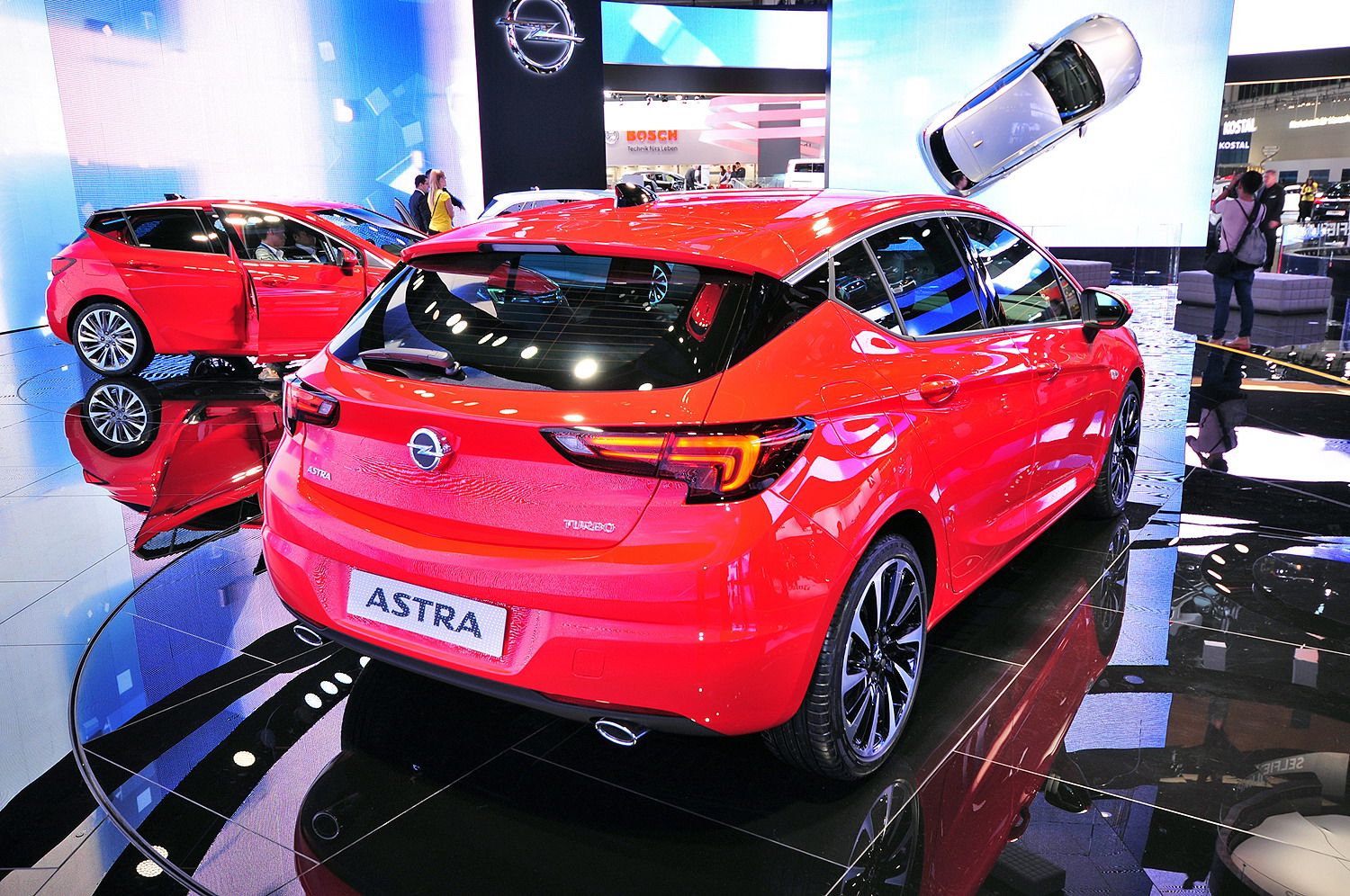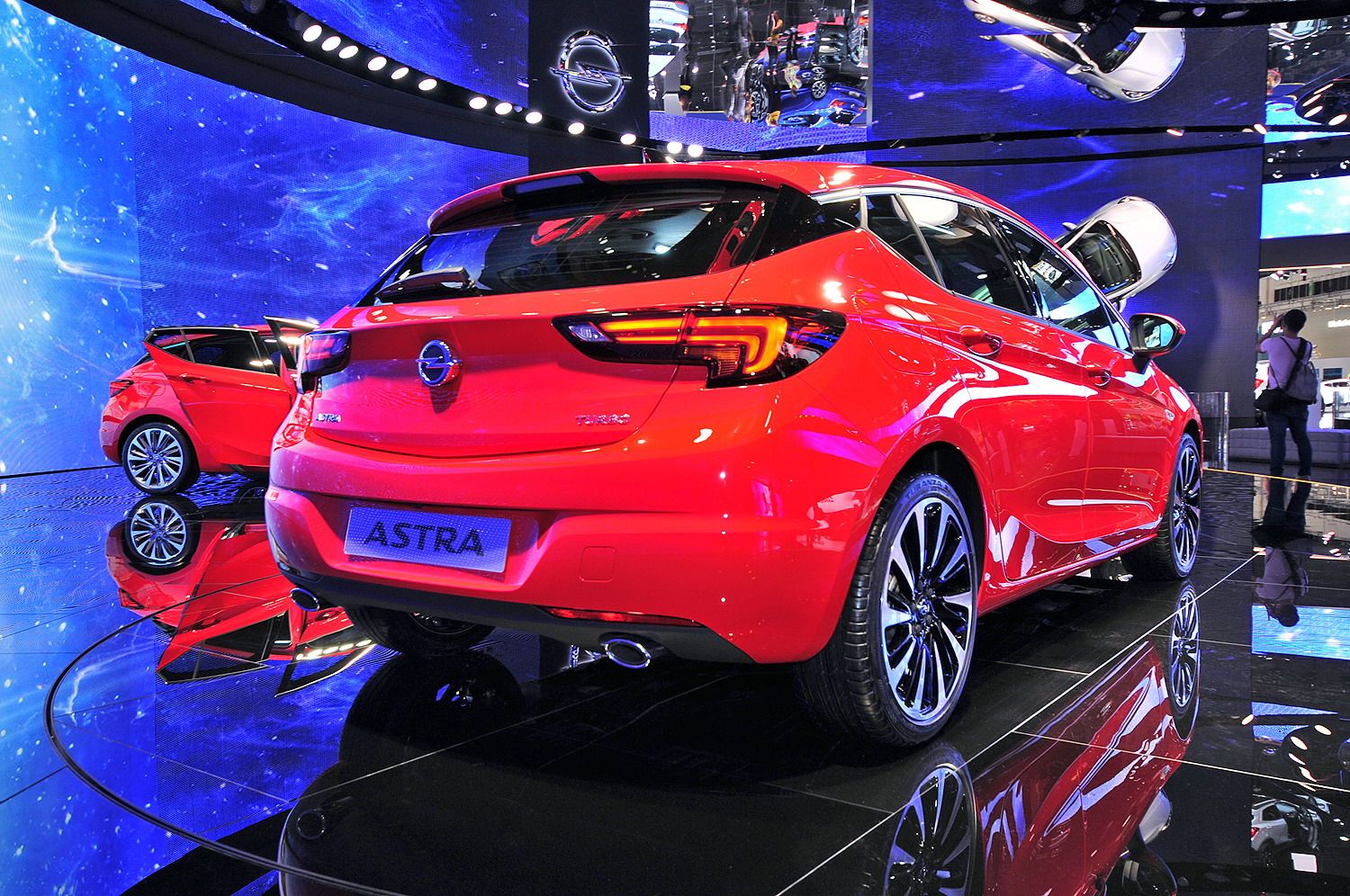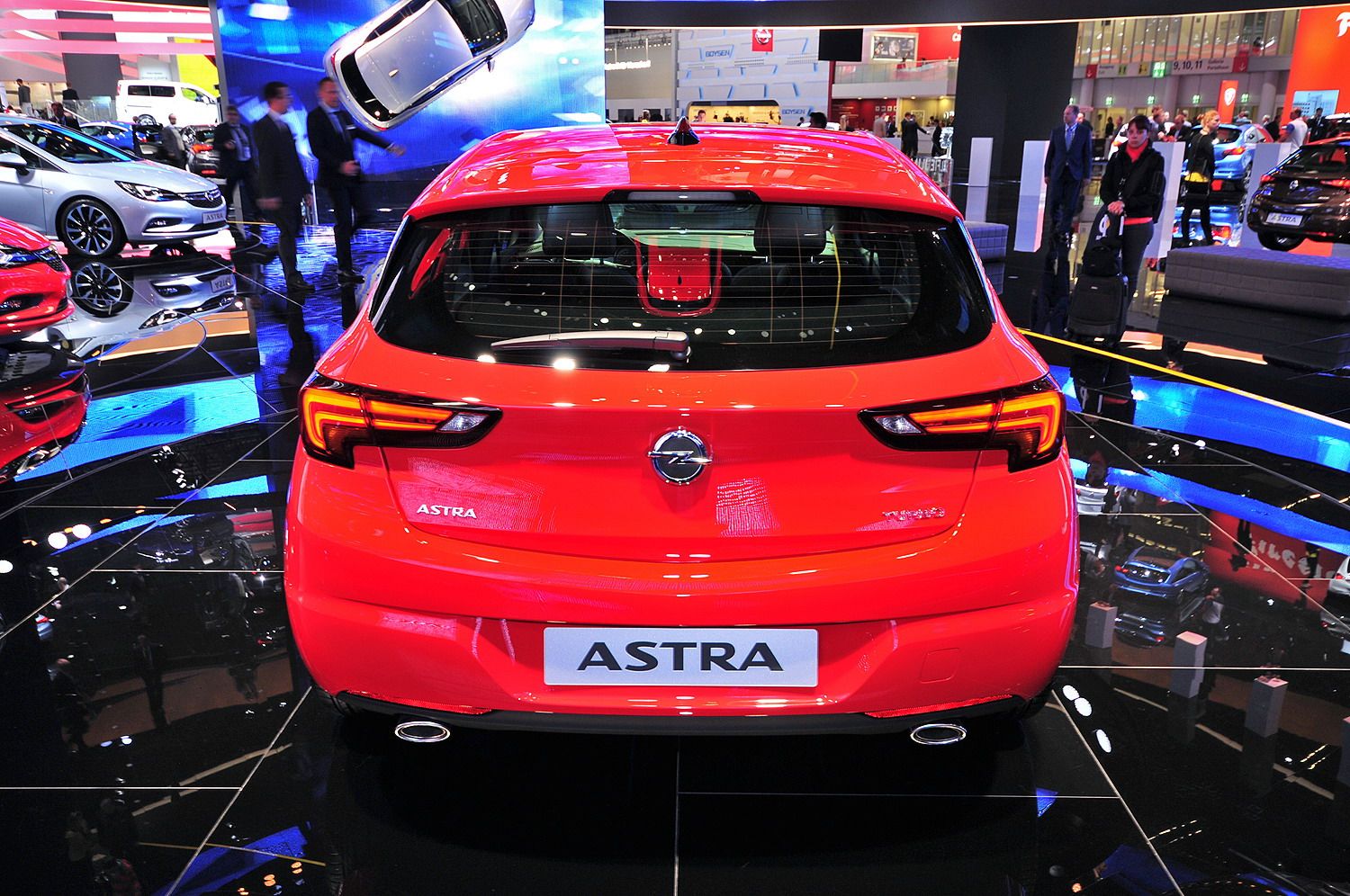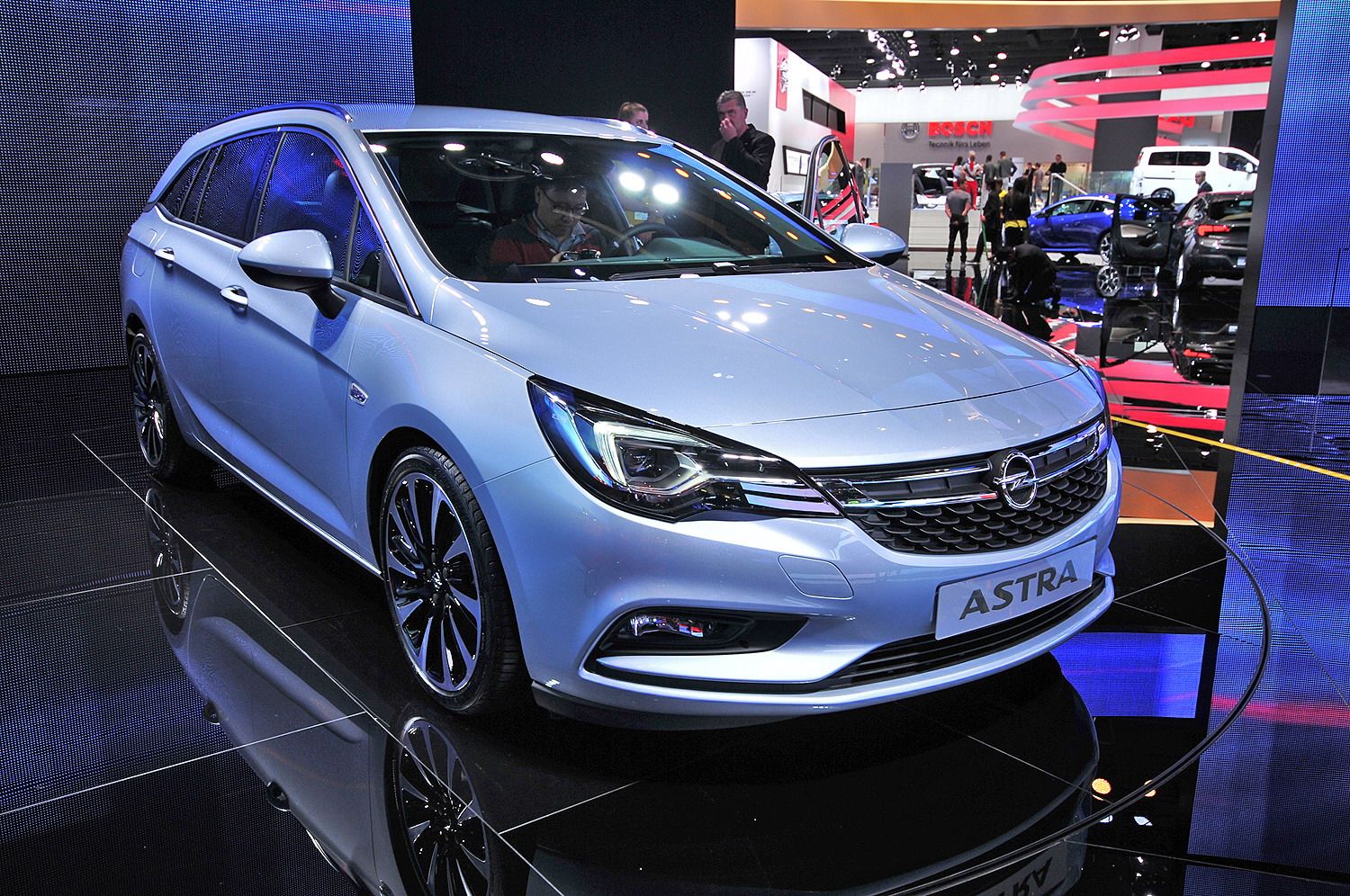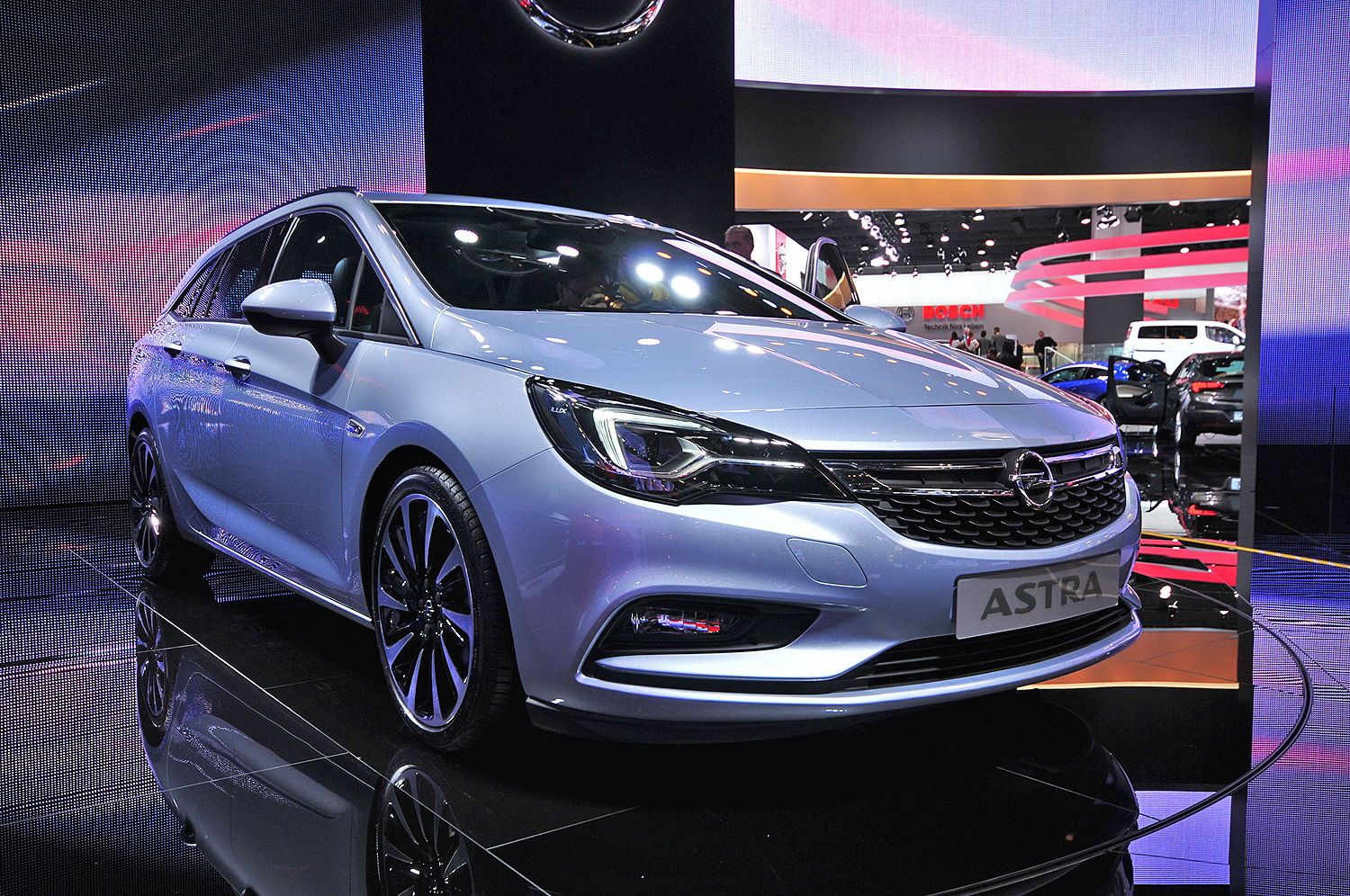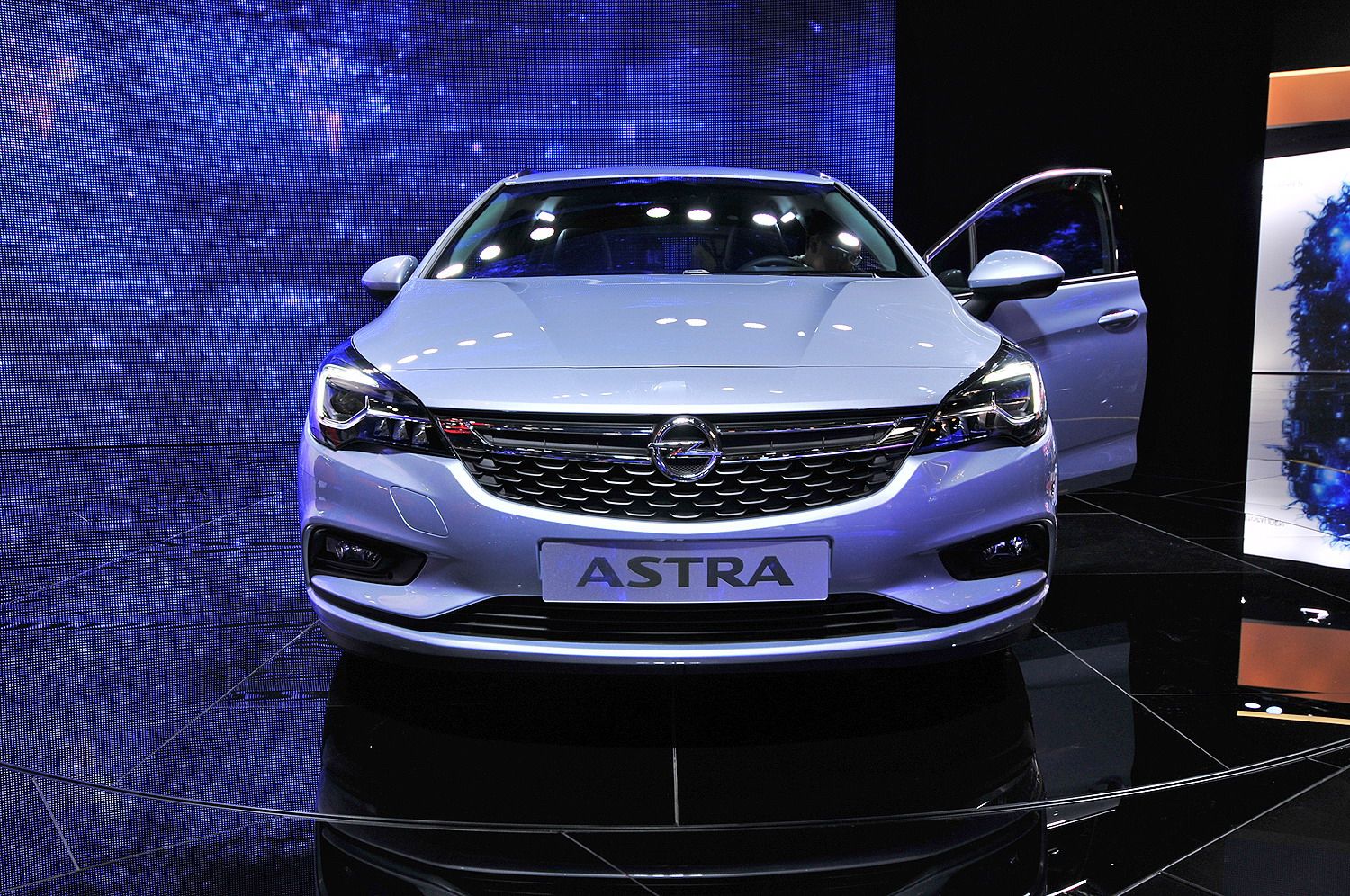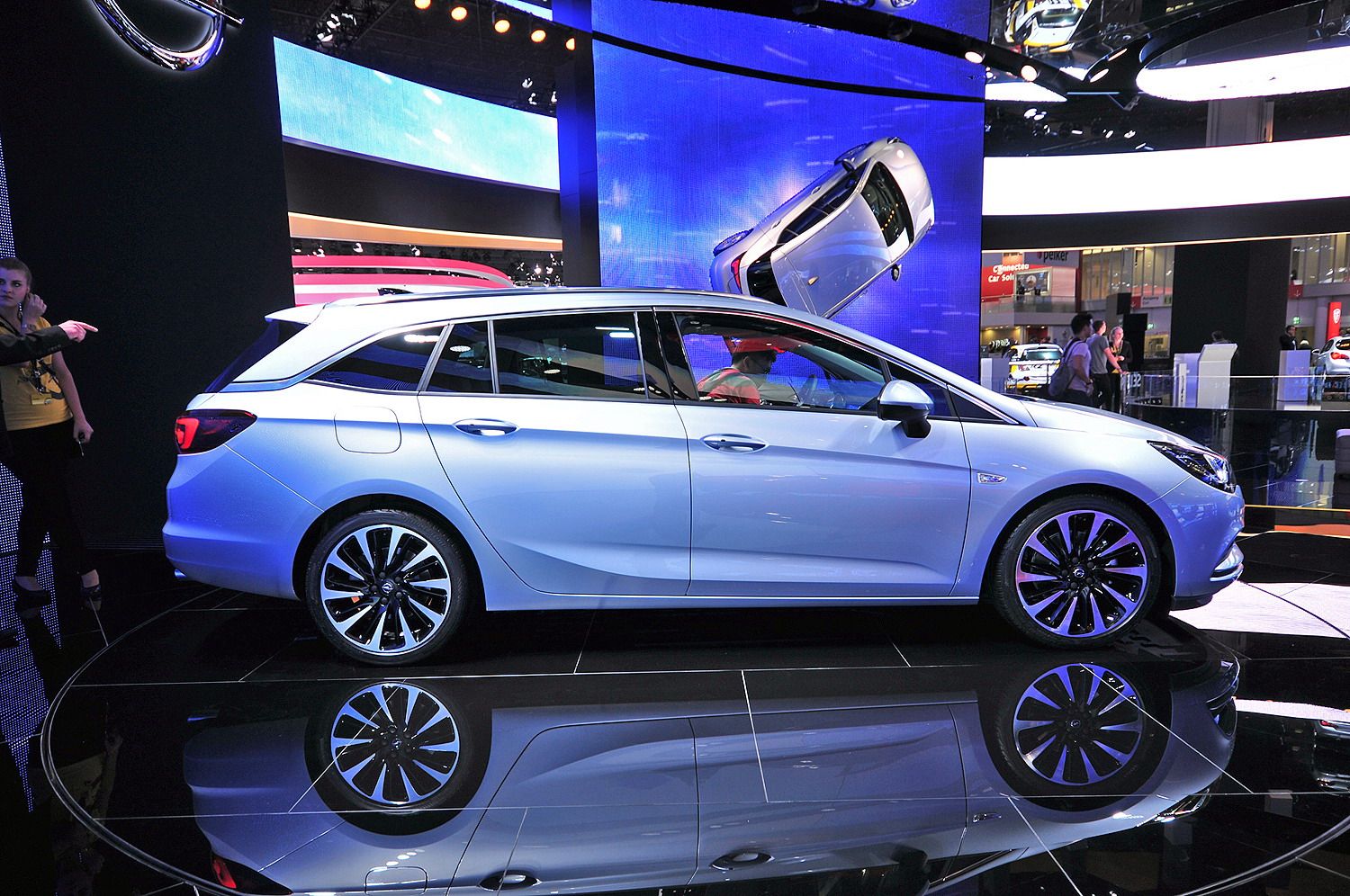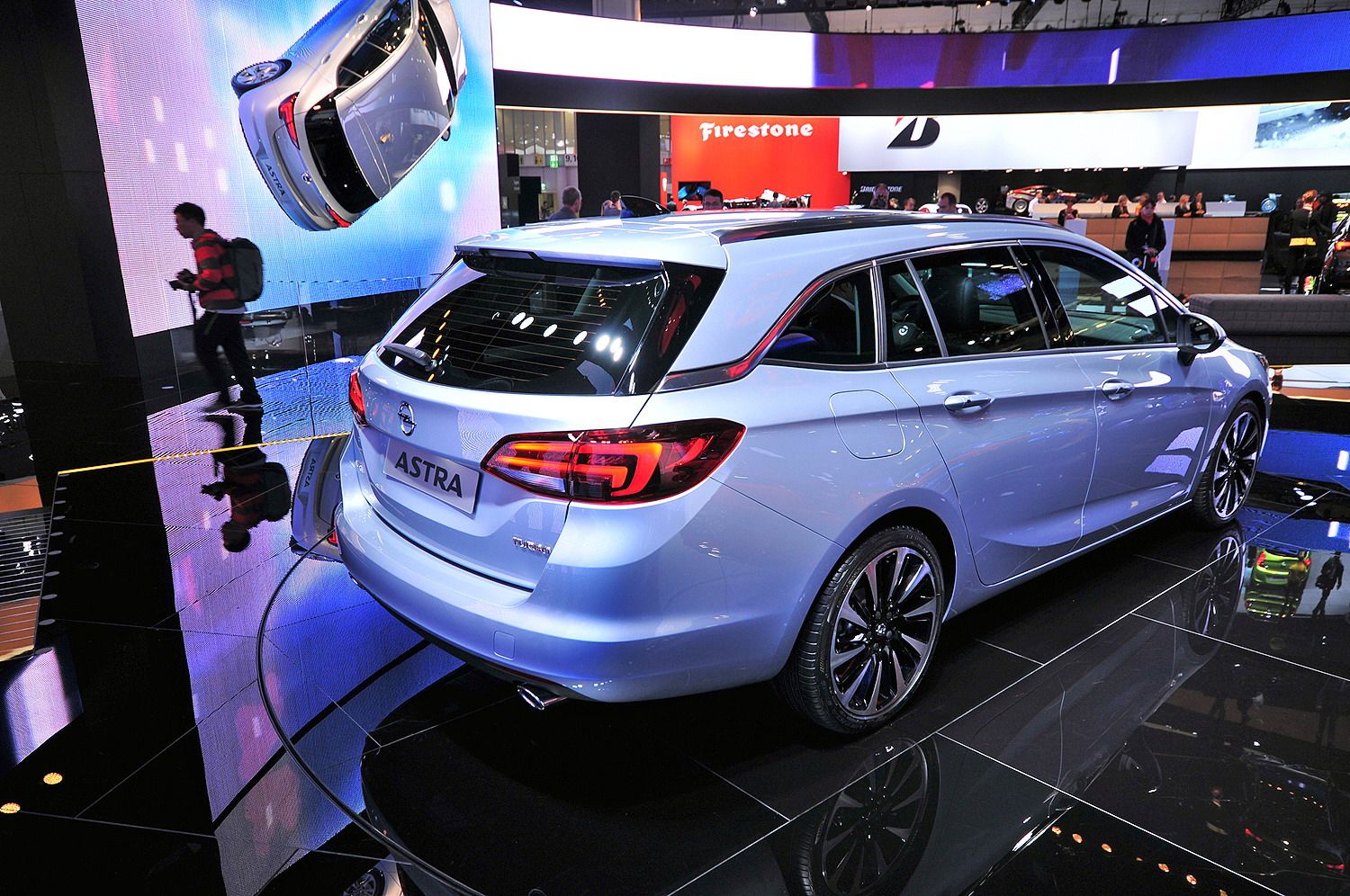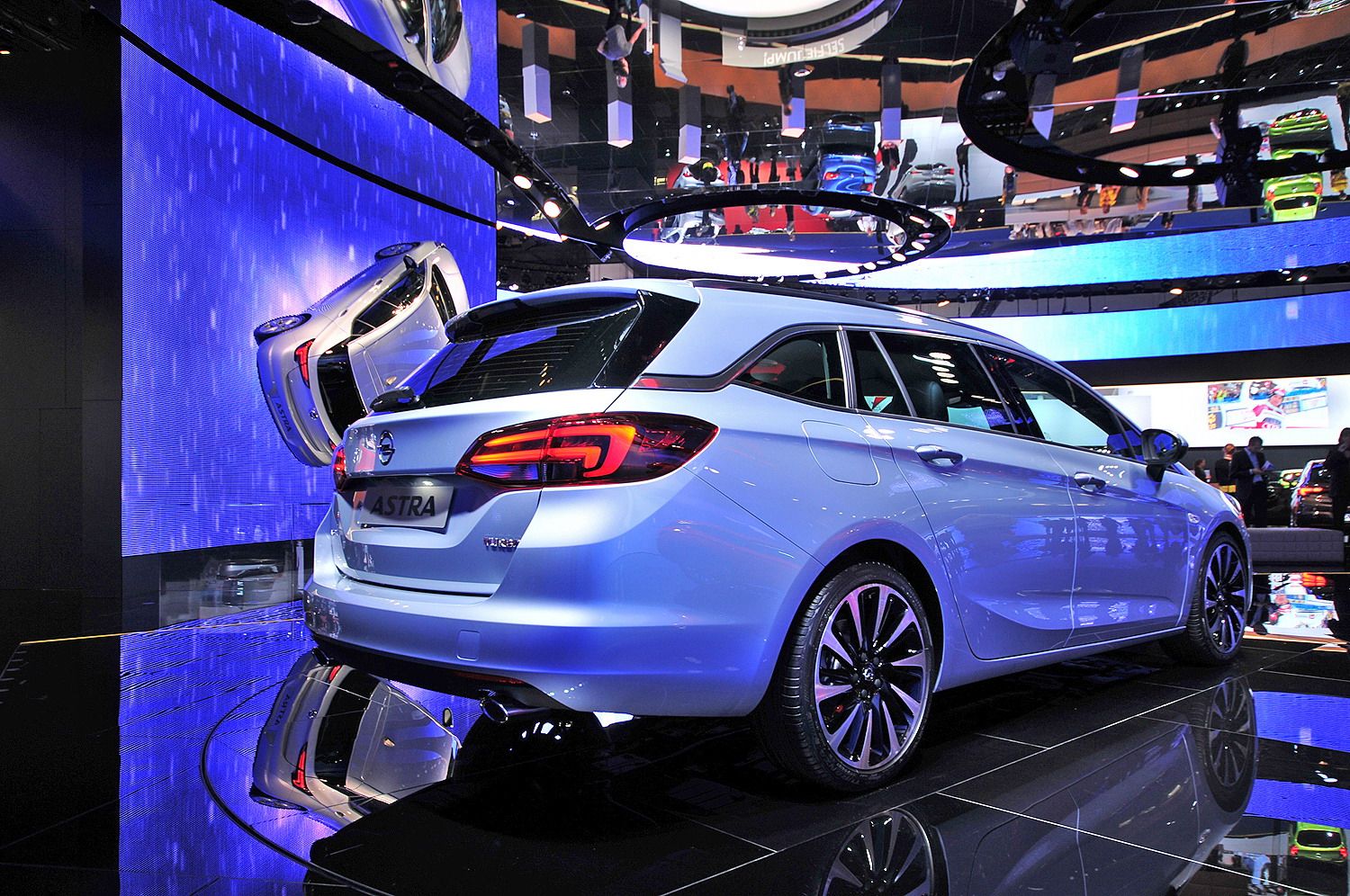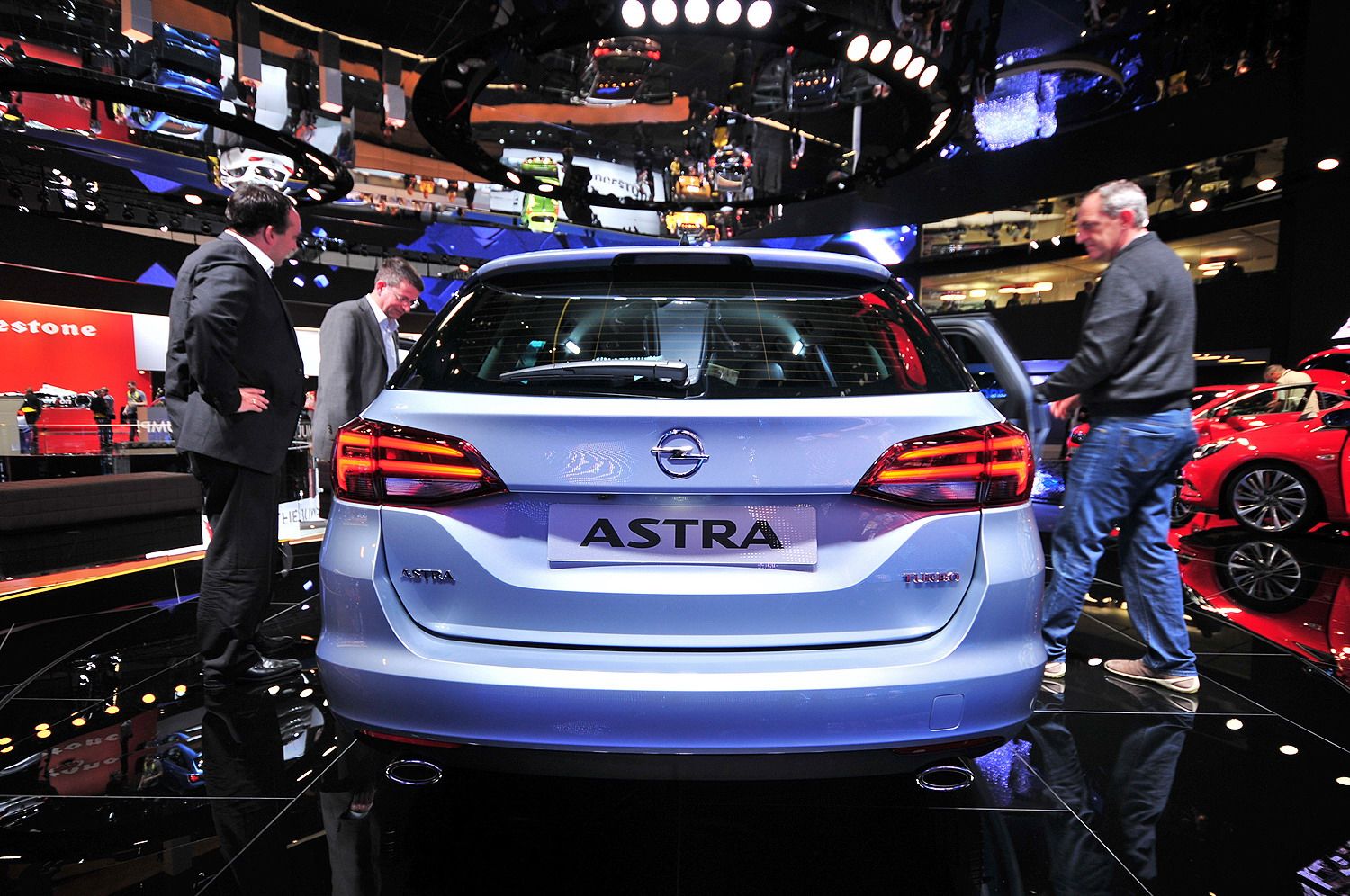The Opel Astra->ke1220 has been around since 1991 and has seen four generational shifts since then, with the most recent being for the 2016 model year. On the outside, the new Astra sports a much larger radiator grille with a smaller air dam underneath. The flics in the corner air inlets now feed downward from the bumper, giving the front end an almost mirrored effect compared to the last-gen model. The exterior lighting units are now more refined than before but keep the same general shape – as does the overall ambiance of the car. On the inside, the new Astra benefits from more space, a simplistic interior and plenty of new technology like OnStar, and an IntelliLink infotainment system with Android Auto and Apple CarPlay. With an all-new and lighter architecture, the new Astra also benefits from the latest engines like a 1.6-liter oil burner with 95 horsepower, a 1.0-liter with 105 horsepower, and a 1.4-liter with 145 horsepower.
Eventually, the Astra will make way for some performance-based variants in the future, but for now, it’s all about economy and comfort. Of course, competing against models like the Volkswagen Golf->ke164 and Ford Focus->ke440, comfort and economy will only get the car so far. Just about every car that’s worth paying attention in this niche has some kind of high-performance version, like the Focus RS->ke438 or the Golf GTI->ke223, so Opel->ke65 better keep its game tight if it wants to maintain decent traction in this segment.
The new Astra isn’t exactly a huge departure from the outgoing model. In all reality, it’s really more like a refined model that represents what the Astra should have always been. With that said, take a look at our full review and let us know what you think about it in the comments below.
Updated 09/22/2015: We’ve added a series of new photos we took at the 2015 Frankfurt Motor Show->ke235. Find them in the "Pictures" tab.
Continue reading to find out.
2016 Opel Astra
- Make: Array
- Model: 2016 Opel Astra
- [do not use] Vehicle Model: Array
Exterior
Opel says the new Astra uses a “lean design” to give it a more athletic bearing, and thankfully, that isn’t just marketing talk. The Astra brings with it a new lightweight vehicle architecture that significantly reduces curb weight over the outgoing model.
The diet consists of numerous alterations aimed at increasing the car’s efficiency. Opel says that “every component was checked for compact design and lightweight materials,” and this is seen prominently in the body shell, which gets a 20 percent weight reduction, dropping from 357 kg (787 pounds) to 280 kg (617 pounds). For the chassis, Opel used high-strength and ultra-high-strength low-weight steels for material choice, plus compact subframes and weight reductions to the front and rear axle. The result is another 50 kg (110 pounds) shed from the curb weight. In total, the new Astra is between 120 kg (265 pounds) and 200 kg (441 pounds) lighter than the previous vehicle, depending on model and trim level.
Aesthetically, there are quite a few changes as well. For inspiration, Opel says it took cues found in its Monza Concept, first unveiled at the 2013 Frankfurt Motor Show.->ke235 According to Opel Group CEO Dr. Karl-Thomas Neumann, each element and design feature of the Monza concept was crafted to reflect efficiency, and the new Astra follows suit faithfully.
Overall, the new Astra looks leaner and meaner, with smoothed out lines and a newfound sense of aggression. Starting at the front, we see the Opel “Blitz” logo featured prominently atop double chrome bars connecting the two headlights. The design for the lights has been reshaped into a more straight-cut look over the apostrophe-curve of the last model. The front grille has had its proportions swapped, with the top section now enlarged and the lower section made slimmer. The fog light surrounds are now integrated into the lower grille, framed by two body-colored fins that visually cut into the matte black material. The hood also adds to this slick, streamlined appearance with a triangular crease towards the nose.
The profile looks significantly more forward-leaning than in the previous model, emphasized by a hard acute angle in the window line in front of the side view mirrors. The shoulder line is also deeply angled, pushing toward the newly sculpted nose with a heavy presence. The rear quarter-panel accentuates the hatchback’s raked stance, adding mass to the tail.
The C-pillar is divided, lending the impression of a floating roof, a feature also seen on the Opel Adam.->ke4340 The taillights are restyled, now becoming thinner and longer, and framed in black. This gives the rear end a wider-looking stance, which is further underlined by deep creases in the hatch. Up top, you’ll find a shark-fin antenna.
Visually smaller, the new Astra is dimensionally smaller as well. Total length is 4.37 meters (14.3 feet), which is nearly 5 cm (2 inches) shorter than the outgoing model, while height is measured at 1.46 meters (4.8 feet), which is 2.6 cm (1 inch) lower. The smaller dimensions help improve several things, including aerodynamic efficiency – the new Astra has a drag coefficient below 0.30.
To complement the new body, the new Astra comes packing with some rather upscale exterior technologies as well, not the least of which are the Opel patented adaptive full-LED matrix lights. These offer glare-free high beams, a feature Opel says will be available on the compact class for the first time with the Astra.
The new lights are composed of 16 individual LED segments, eight per light, which automatically shift beam length and distribution to the given traffic situation. Calling the shots is the “Opel Eye” front camera. When the car leaves urban areas, the high beams are automatically activated, which according to Opel, helps the driver detect objects at the side of the road 30 to 40 meters (100 to 131 feet) sooner than with halogen or xenon low beams when traveling at 80 km/h (50 mph), yielding roughly one-and-a-half seconds of extra reaction time.
When the front-facing camera detects another light source from oncoming or preceding traffic, individual LEDs within the “relevant zone” are switched off, effectively cutting out light around the detected vehicle.
Finally, the LEDs last considerably longer than traditional halogen or xenon lights, especially when individual LED elements can be deactivated according to the given situation without the need of some mechanical element to move the light source.
Side-by-side comparison
Interior
While smaller on the outside, with a wheelbase that’s 2 cm (0.78 inch) shorter than the outgoing model, the interior of the new Astra is actually larger, offering more space for passengers. Helping this are redesigned seats, which now give the rear passengers 35 mm (1.38 inches) of additional legroom. The distance between the front and rear seats has also been increased, lending a larger feeling to the cabin space.
Like the exterior, the interior layout has also been redesigned. With an eye to simplicity and clarity, Opel went about reducing the number of control switches and buttons. This is especially evident in the central console, where many controls have been thrown out in favor of a unit with a fraction of the inputs. The three-spoke steering wheel still features multi-function controls, plus a brushed-metal look material that’s continued in the door handles, dash, and central tunnel. Overall, it’s much cleaner and more straightforward than in the outgoing model.
Alongside this new simplicity in the user interface is a slew of new tech. Opel really went whole hog when it came to infusing the new Astra with additional gadgets, boasting that it “democratizes technologies and innovations from higher segments” and that it “makes innovations affordable.”
In truth, the new Astra comes with all kinds of new features not normally found in a cheap compact. First on the list is Opel OnStar, making the Astra the first new Opel model with the service at launch. Available 24/7, Opel OnStar offers a variety of features for comfort, convenience, and safety. For example, if an airbag is deployed, Opel OnStar will automatically alert an advisor who will then contact the vehicle to determine if further assistance is needed. If no response is detected, the advisor will then contact emergency responders with the vehicle location. Other services include roadside assistance. Additionally, Opel OnStar features 4G LTE mobile WiFi connectivity, offering a connection point for up to seven simultaneous devices, from smartphones to tablets.
Also new is the addition of the latest generation of the IntelliLink infotainment system. Compatible with both Android Auto and Apple CarPlay, this system offers high-end app support for all your smartphone’s basic functionalities. For example, Android users will be able to utilize Google Maps, Google Now, and the ability to ask Google questions, as well as WhatsApp, Skype, Google Play Music, Spotify, and podcast players. Apple->ke2851 users will get to use functionalities like Phone, Messages, Maps, Music, and several third-party apps.
All of the various infotainment system’s features are controllable via a color touchscreen up to 8 inches in size, nestled flush in the central console. You can also use controls mounted in the steering wheel or voice control.
The new Astra also boasts a bevy of driver’s assistance systems usually found in higher segments. Included is Traffic Sign Assistance and Lane Keep Assist with Lane Departure Warning, as well as Following Distance Indication and Forward Collision Alert with Collision Imminent Braking, all of which make the Astra both safer and easier to drive. There’s cruise control with speed limiter to keep you legally coasting on the highway, while Advanced Park Assist helps you when you arrive at your destination, automatically slotting the Astra into an available spot at the push of a button. There’s also Side Blind Spot Alert that can recognize obstacles within a 3-meter (9.8-foot) radius around the back of the car, outside the driver’s vision.
For comfort, Opel enlisted the help of the AGR (Campaign for Healthy Backs) to test and certify its new ergonomic seats. Additional features include 18-way adjustability for the driver, a massage function, ventilation, and seat-width settings. In the rear, passengers will be warmed with a heated function available as an option.
Drivetrain
To complement the new, lighter architecture that underpins it, the next-gen Astra also comes with the latest generation of engines, creating a car that Opel says is “more responsive, corners better and gives a much more direct overall driving experience. In a nutshell, the new Astra is more fun to drive than ever before.”
To back this claim, every engine powering the new Astra will be part of a fresh portfolio of diesel and gasoline powerplants with outputs that range from 95 up to 200 horsepower. Cylinder count is either three or four.
Included is a 1.6-liter CDTI diesel unit that starts the oil burners at 95 horsepower and a 1.0-liter ECOTEC Direct Injection Turbo that starts the gas range at 105 horsepower. There’s also an all-aluminum 1.4-liter ECOTEC Direct Injection Turbo four-cylinder.
The 1.4-liter makes 145 horsepower, mixing performance with economy, with a max torque output of 184 pound-feet low in the rev range. Max power is also low in the curve, available between 1,800 and 4,000 rpm. And with its aluminum construction, the 1.4-liter weighs 10 kg (22 pounds) less than the forged steel unit it replaces.
Like in years past, high-performance variants are expected sometime in the future, although official details are currently unavailable.
Prices
Opel has yet to release official details regarding a price tag for the new Astra, although it is expected to be roughly the same or slightly higher than the current model. That means you should be prepared to dish out $20,000 to $23,000 for an entry-level model, and more with higher trim specs and options.
Competition
Volkswagen Golf
As ubiquitous as leaves in the fall, the Volkswagen Golf->ke164 is a mainstay of the hatchback->ke304 world. Currently in its seventh generation, the Golf features a wide range of models and trim levels, from the fuel-sipping uber-eco diesel commuters, to the rip-snorting, performance-oriented Golf R. While pricier than many of its competitors, each Golf features handsome exterior styling and precision German engineering, plus a superb fit and finish often hailed as above its price range. Pricing starts $18,000.
Read our full review here.
Ford Focus
]
While not quite as upscale as the Astra or Golf, the Focus->ke440 brings with it a sense of fun not necessarily present in either of the other two vehicles. This is mostly due to the drivetrain: either a 2.0-liter four-cylinder with 160 horsepower or a turbocharged 1.0-liter three-cylinder with 123 horsepower. A five-speed manual gearbox comes as standard on the 2.0-liter, while the smaller three-cylinder comes with a six-speed. A six-speed auto box is optional on both engines. While not terribly quick in a straight line, unless you go for the 252-horsepower Focus ST, throw it into a few corners and you’ll be smiling. Pricing starts at $18,960 for the standard SE model.
Read our full review here.
Conclusion
Also sold as a Vauxhall->ke92 in the U.K. and a Holden->ke33 in Australia, the Astra is known the world over as an affordable hatchback that gets the job done. Opel has gone to great lengths to improve the car for this next generation, polishing just about every aspect of it in the process. It’s lighter, more efficient, looks better, offers slightly expanded space in the cabin, and comes with a range of new engine options.
But the biggest benefit of the new car is what you get technologically. Stuff like adaptive LED headlights, heated and ventilated seats, blind spot awareness and lane assist are not what you’d normally expect from a car in the compact segment. Easy smartphone integration with Android and Apple devices is most appreciated, as is the OnStar services suite. It’s quite the enticing package.
The only real drawback is price. Which of these features will be standard and which will become expensive options remains to be seen, but if Opel can keep the price low, I think they have a real winner on their hands, even in this hotly contested segment.
The Astra will make its world debut at the Frankfurt Motor Show in September. Look to TopSpeed for further updates at that time.

